Tokyo food guide
Tokyo: the bustling capital city of Japan that never seems to sleep. Once a fishing village called Edo, it grew to prominence in the 1600s, before the Meiji Restoration of 1868 saw the imperial capital shift here from Kyoto. It was then that Edo was renamed Tokyo, AKA Eastern Capital, or Tōkei. With such a long history, it’s no surprise that Tokyo is rich with culture, history, and great food. If you’re headed there, here’s a guide to 15 eateries you can’t miss in Tokyo!
The current exchange rate is ¥100 = ~S$0.83 as of 21 November 2025.
Table of Contents
1. Asakusa Unana
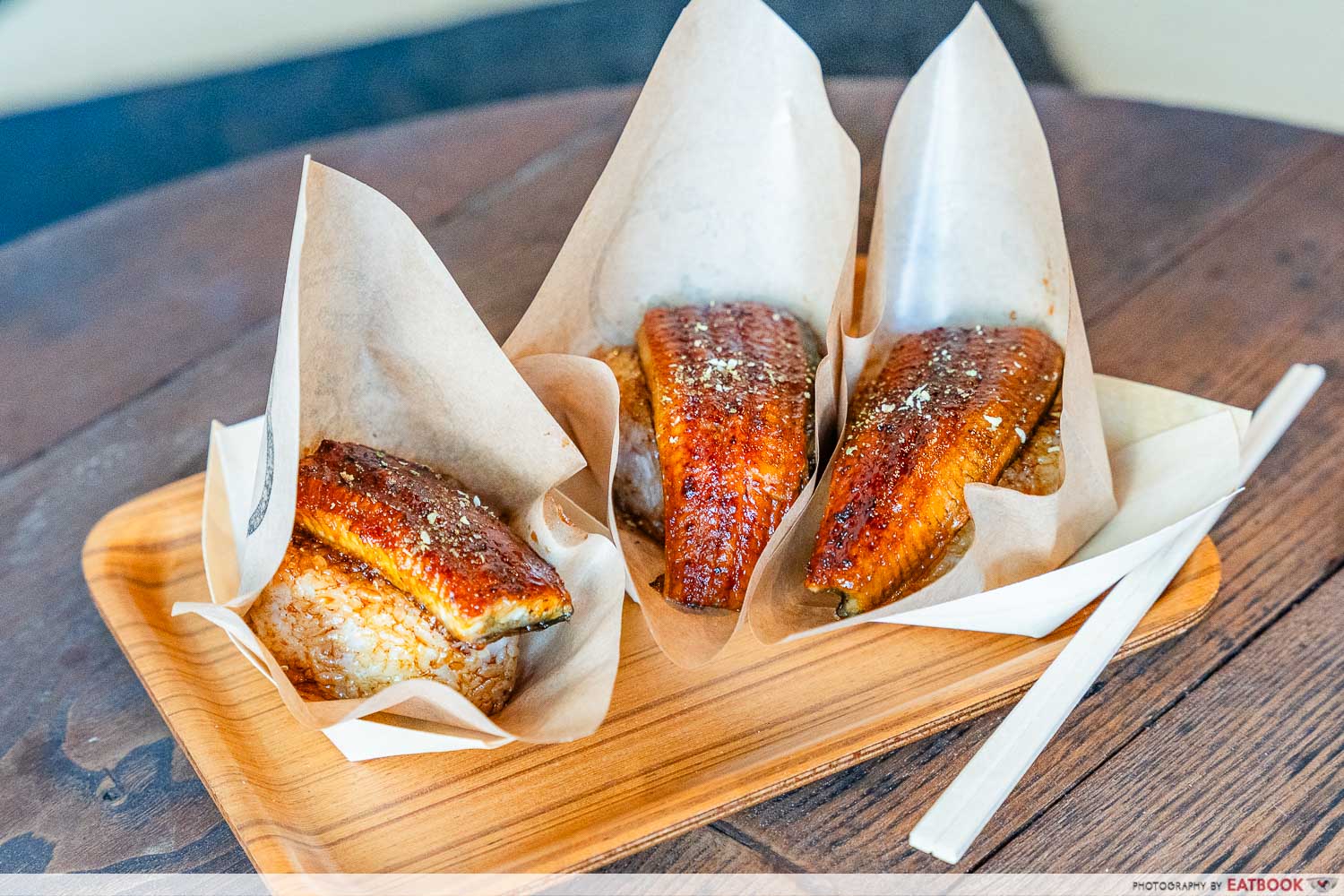
We know, unadon can cost a pretty penny and then some. Plus, the queues to get into some of the best unagi spots in the city can get rather long. Head over to Asakusa Unana instead for Unagi Onigiri (¥630) that’s grilled fresh to order!
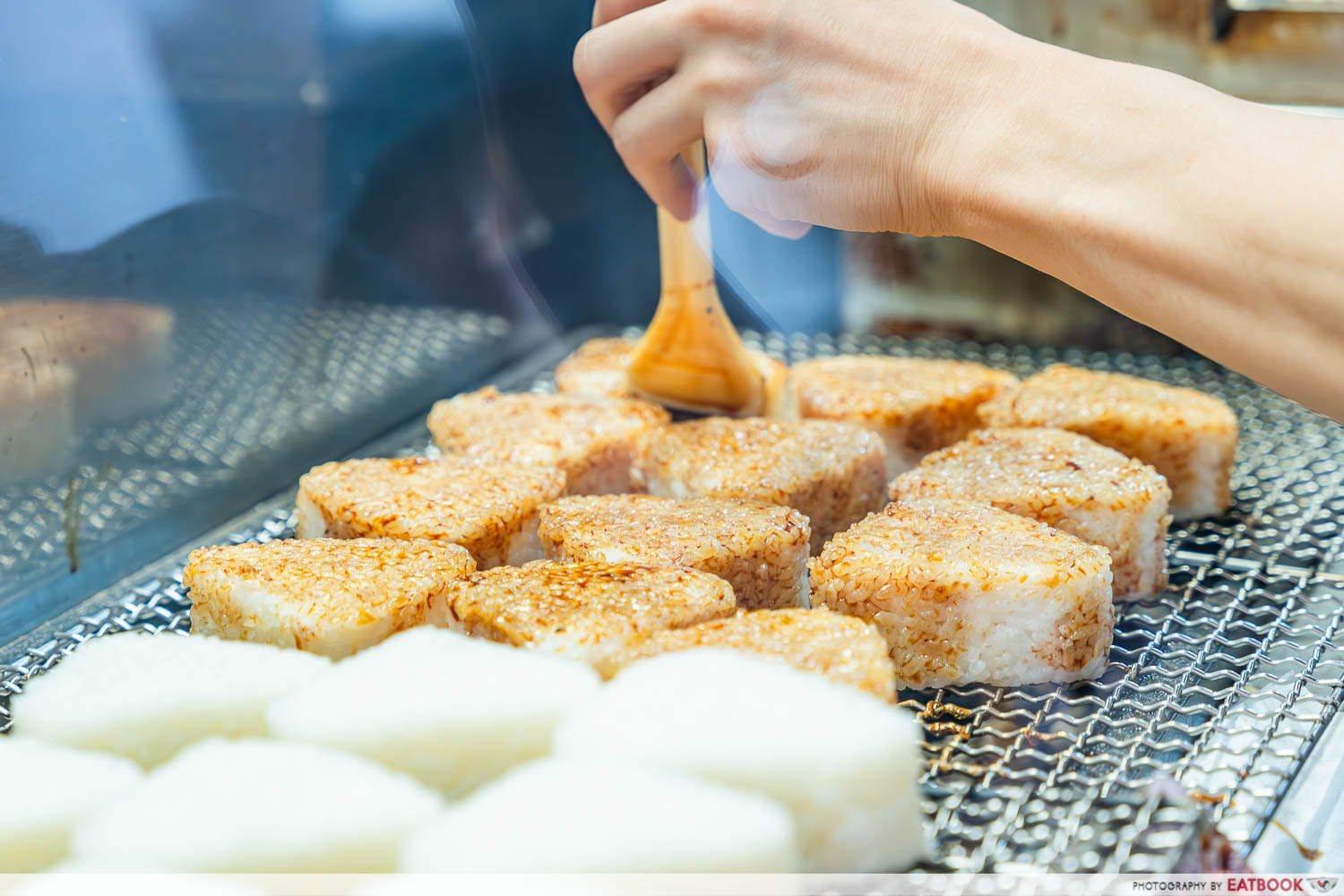
Fun fact: Asakusa, where the famous Sensoji Temple is found, is situated on the bank of the Sumida River. Because of this, unagi fished from the river became a popular food for temple-goers to have!
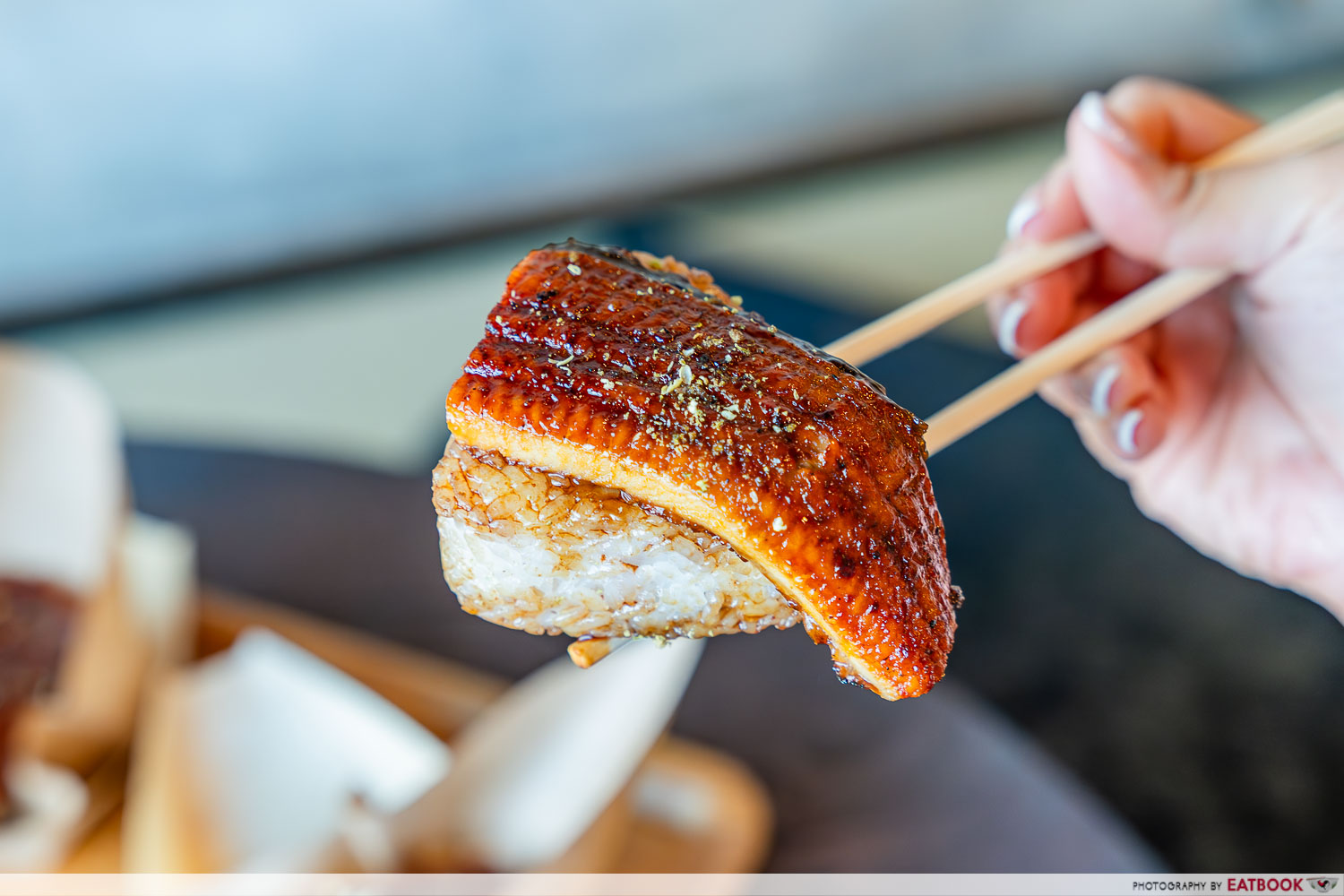
Asakusa Unana may not be one of the age-old unadon establishments in the area, but they’ve made a name for themselves with their nifty unadon-on-the-go, which you can enjoy down the street in their standing bar.
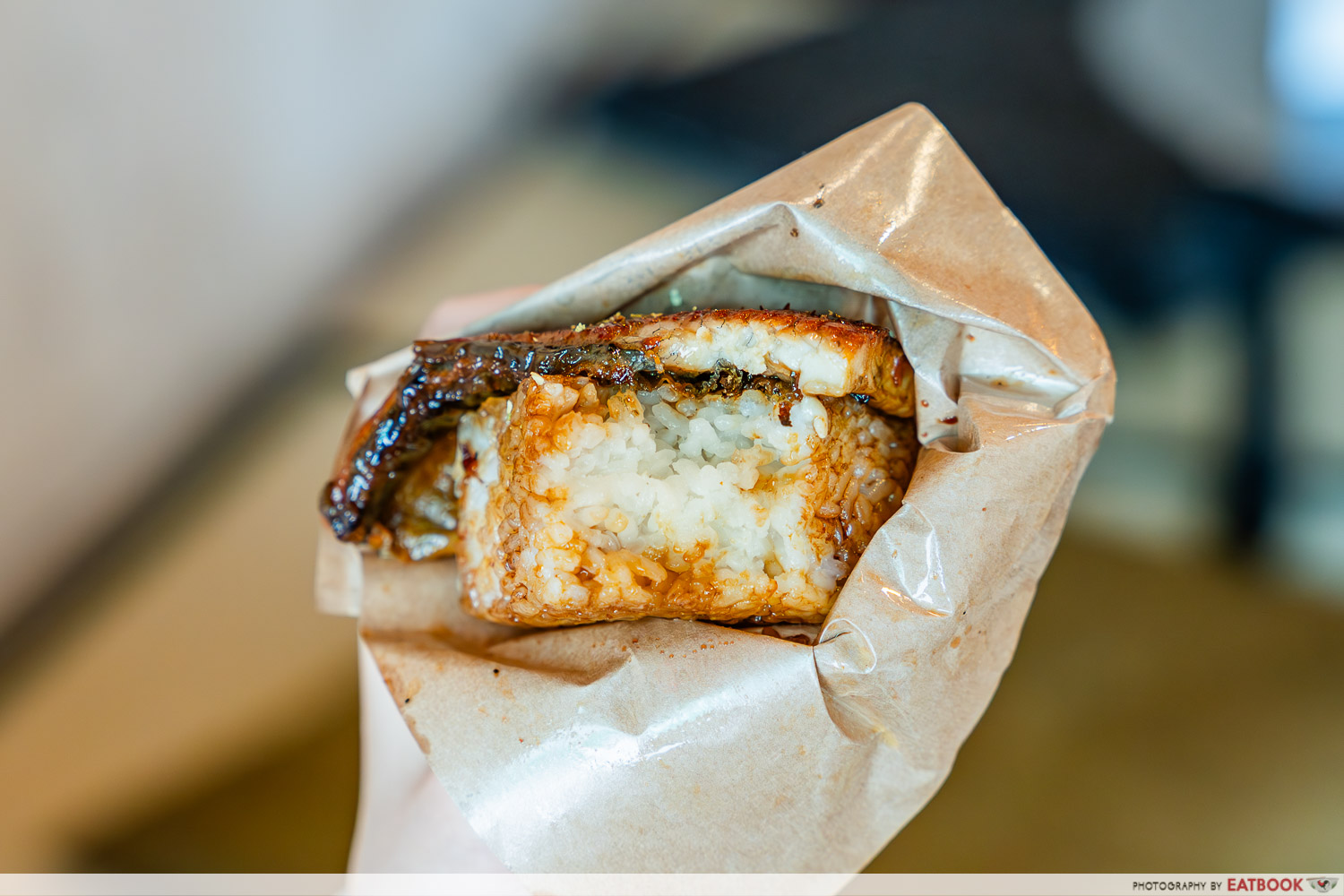
Both the hefty slice of unagi, plus the rice ball, are grilled over charcoal, and glazed with a house-made tare. If you’d like some spice, ask for them to sprinkle sansho pepper shichimi on your onigiri too!
Address: 2 Chome-7-21 Asakusa, Taito City, Tokyo 111-0032
Opening hours: Mon-Fri 9:30am to 5:30pm, Sat-Sun 9:30am to 6:30pm
Tel: +81 50-3503-7253
Website
Asakusa Unana is not a halal-certified eatery
2. Dote no Iseya
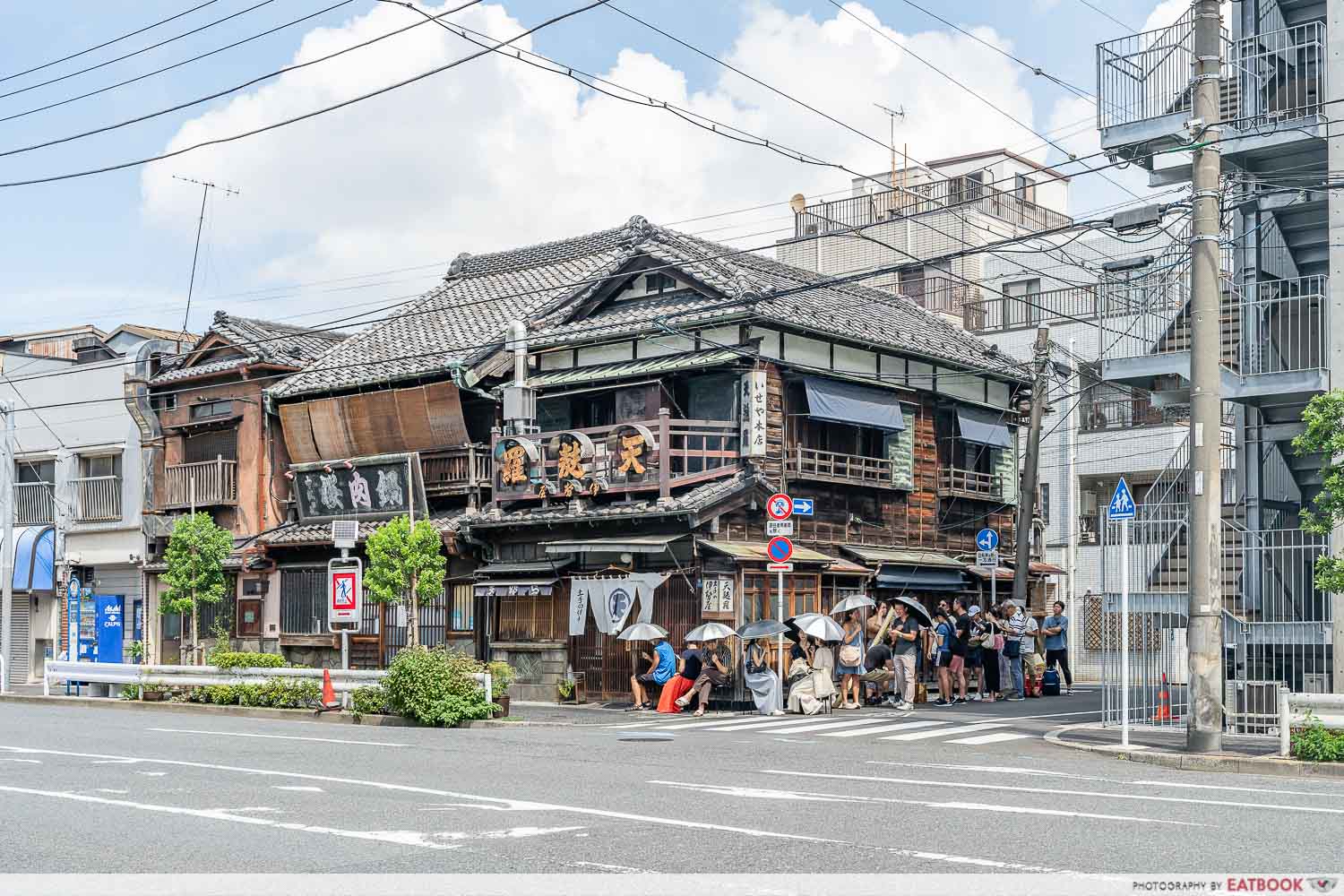
There are three tendon options at Dote no Iseya, a tendon restaurant that’s been in operation since 1889 in the same wooden house that was built before World War Two. After more than 130 years in the business, it’s no wonder that they’ve mastered the art of tempura on rice.
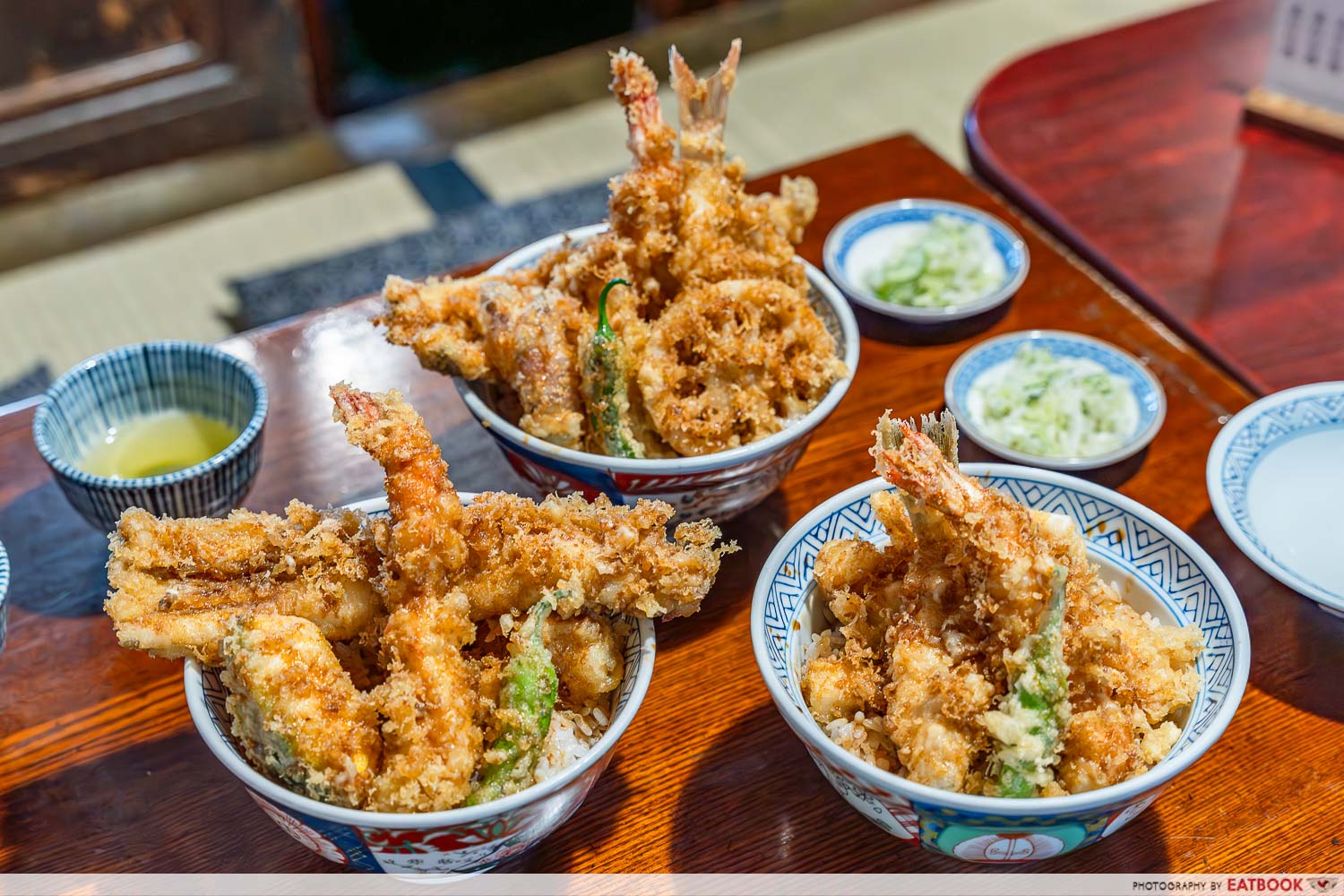
The phrase イロハ (iroha) means ‘the basics’, but the tendon at Dote no Iseya are anything but. Start with イ(I), the simplest bowl that’s priced at ¥2,300, and move on to ロ (Ro), the medium-sized tendon that costs ¥2,800.
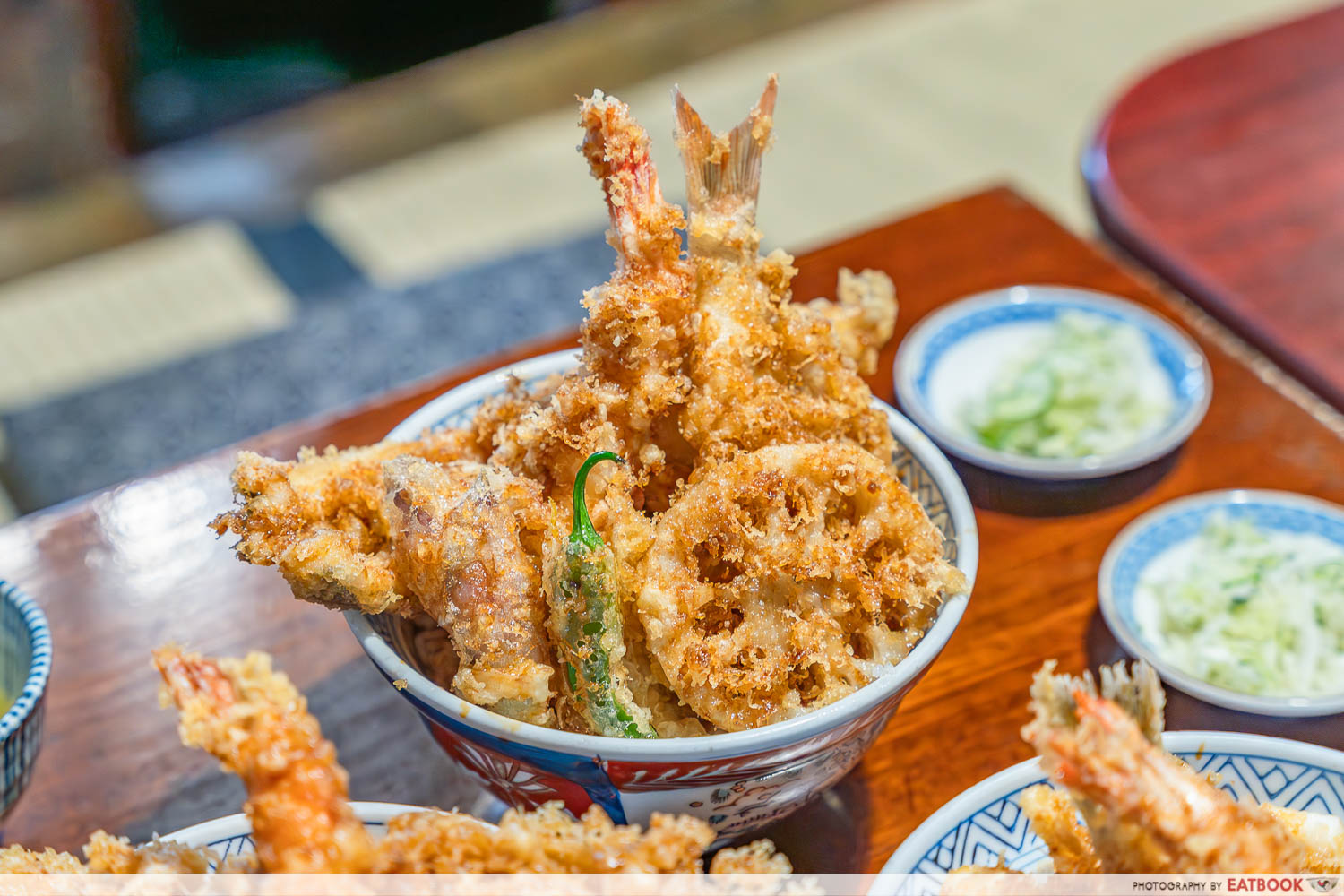
Both of these come with tempura prawns and a fried squid kakiage, though the cheaper version has whitefish, and Ro switches this up for anago, AKA sea eel.

Finally, there’s ハ (Ha), that’s loaded up with prawns, anago, baby shrimp kakiage, and seasonal vegetables. This ¥3,300 bowl will fill you to bursting. The batter here is ultra-light and crisp, and the tendon sauce is perfectly balanced. Trust us when we say you won’t be able to stop eating.
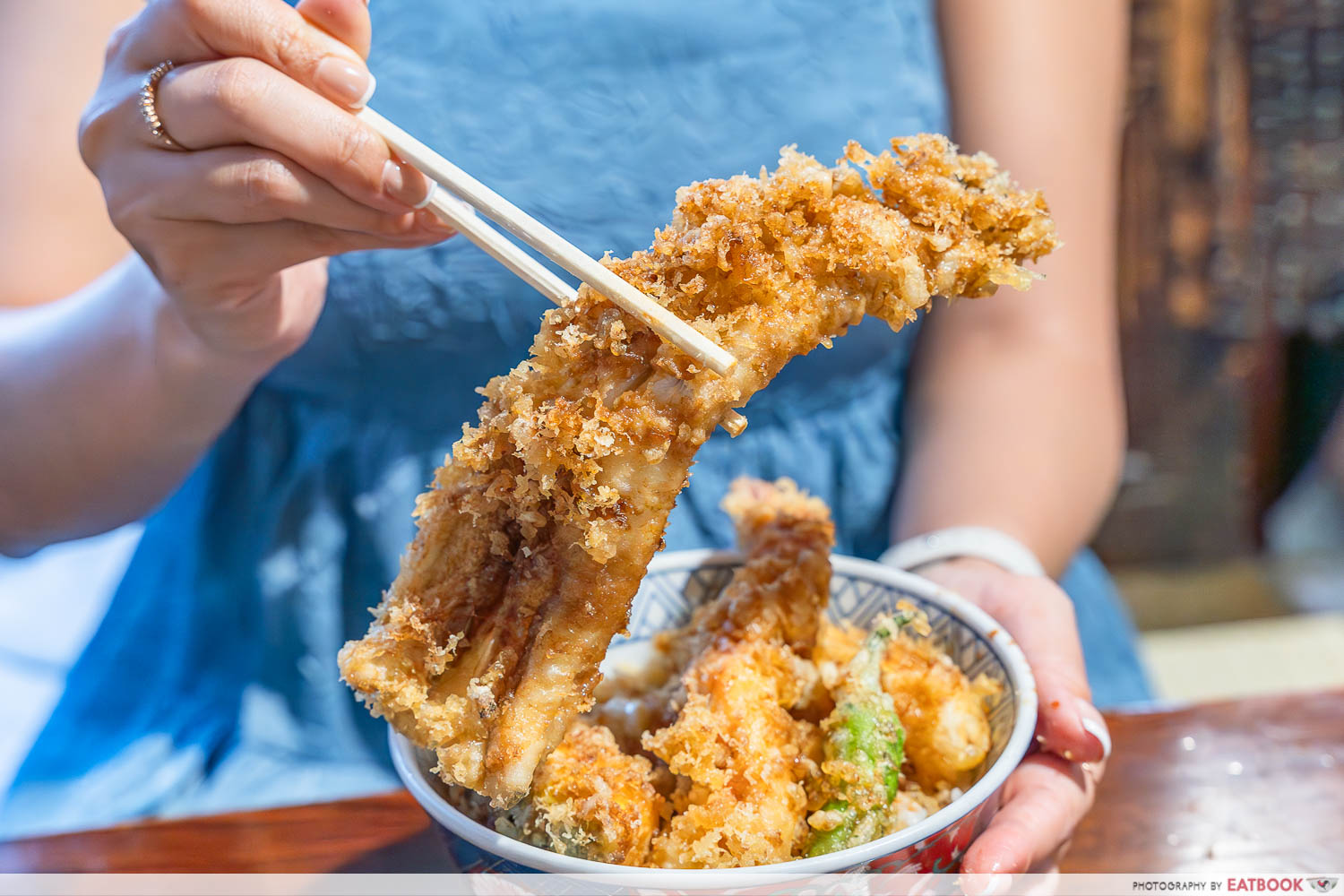
Be prepared to queue, however. We were there on a weekday morning before they opened, and waited an hour. This is said to stretch up to two-and-a-half hours on weekends!
Address: 1 Chome-9-2 Nihonzutsumi, Taito City, Tokyo 111-0021
Opening hours: Thurs-Mon 11am to 2:30pm
Tel: +81 3-3872-4886
Website
Dote no Iseya is not a halal-certified eatery
3. Godaime Hanayama Udon
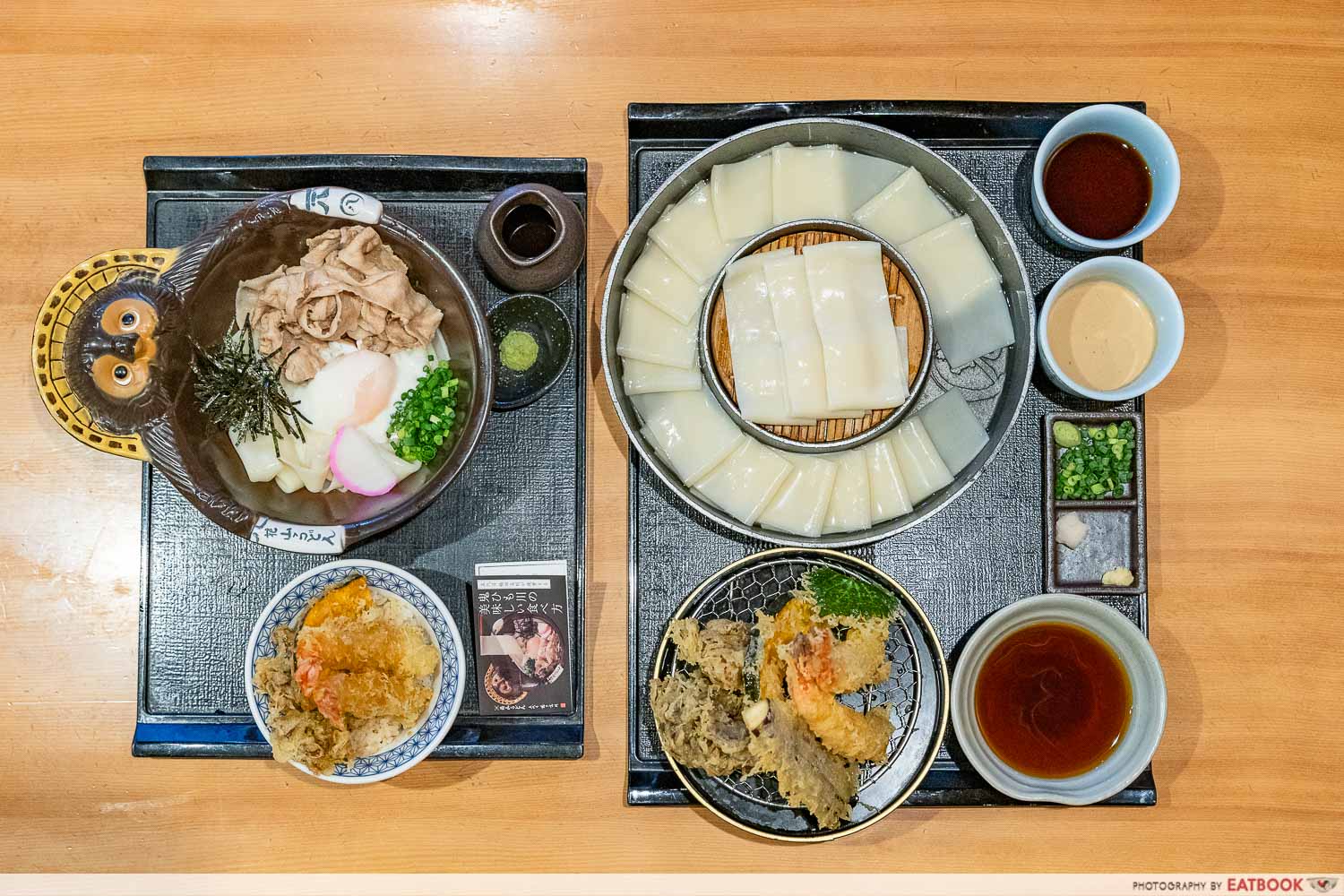
If the championship-winning Himokawa udon at Godaime Hanayama Udon doesn’t change your mind about udon, we’re not sure what will. Originally from Gunma Prefecture, the recipe for these noods have been passed down through five generations, since 1894!
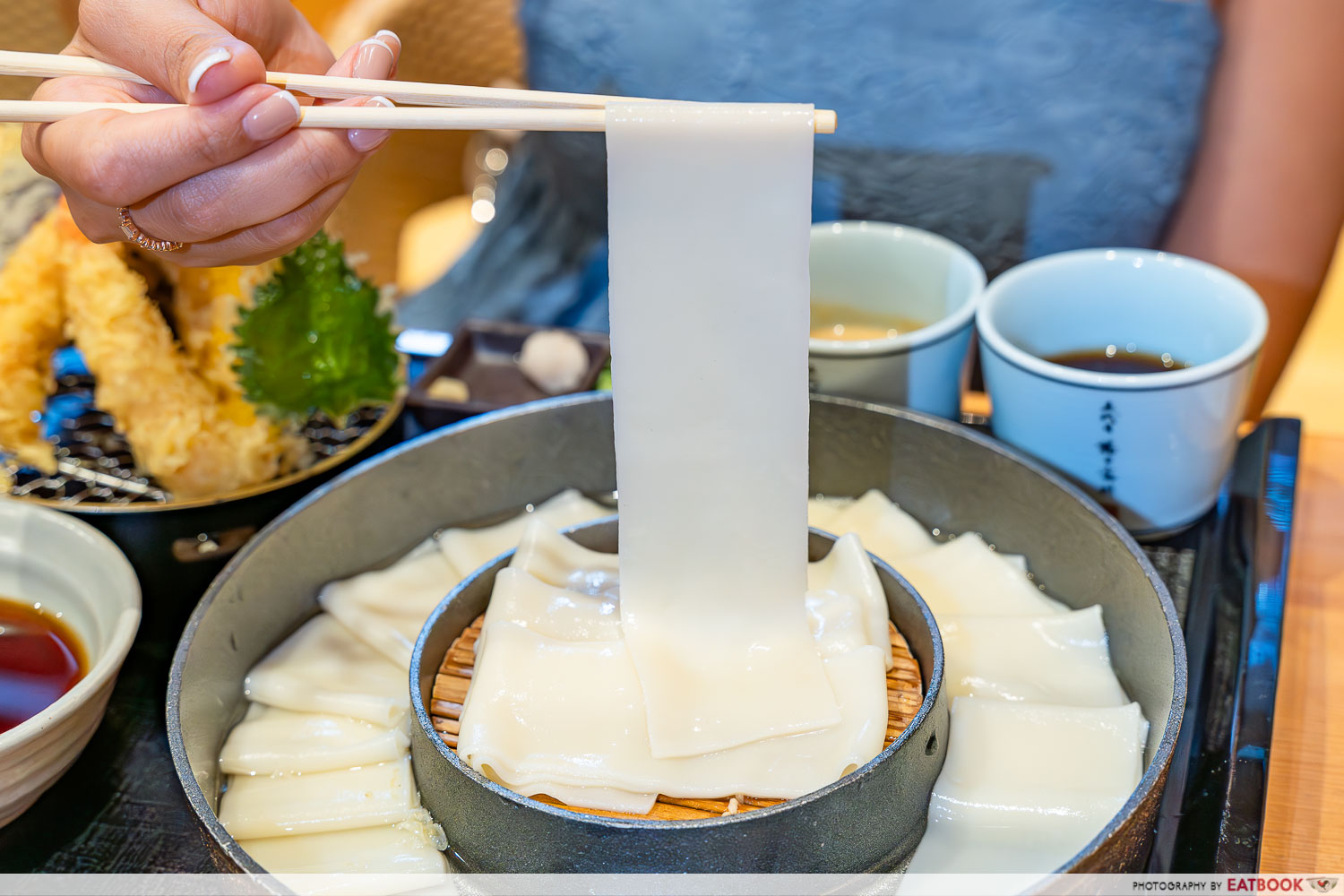
What makes the Himokawa udon here special is their 5cm width, but they’re only an incredible 1mm thin, making for an ultra-smooth, chewy finish. Alternatively, you could go for the regular udon, which is also made in-house.
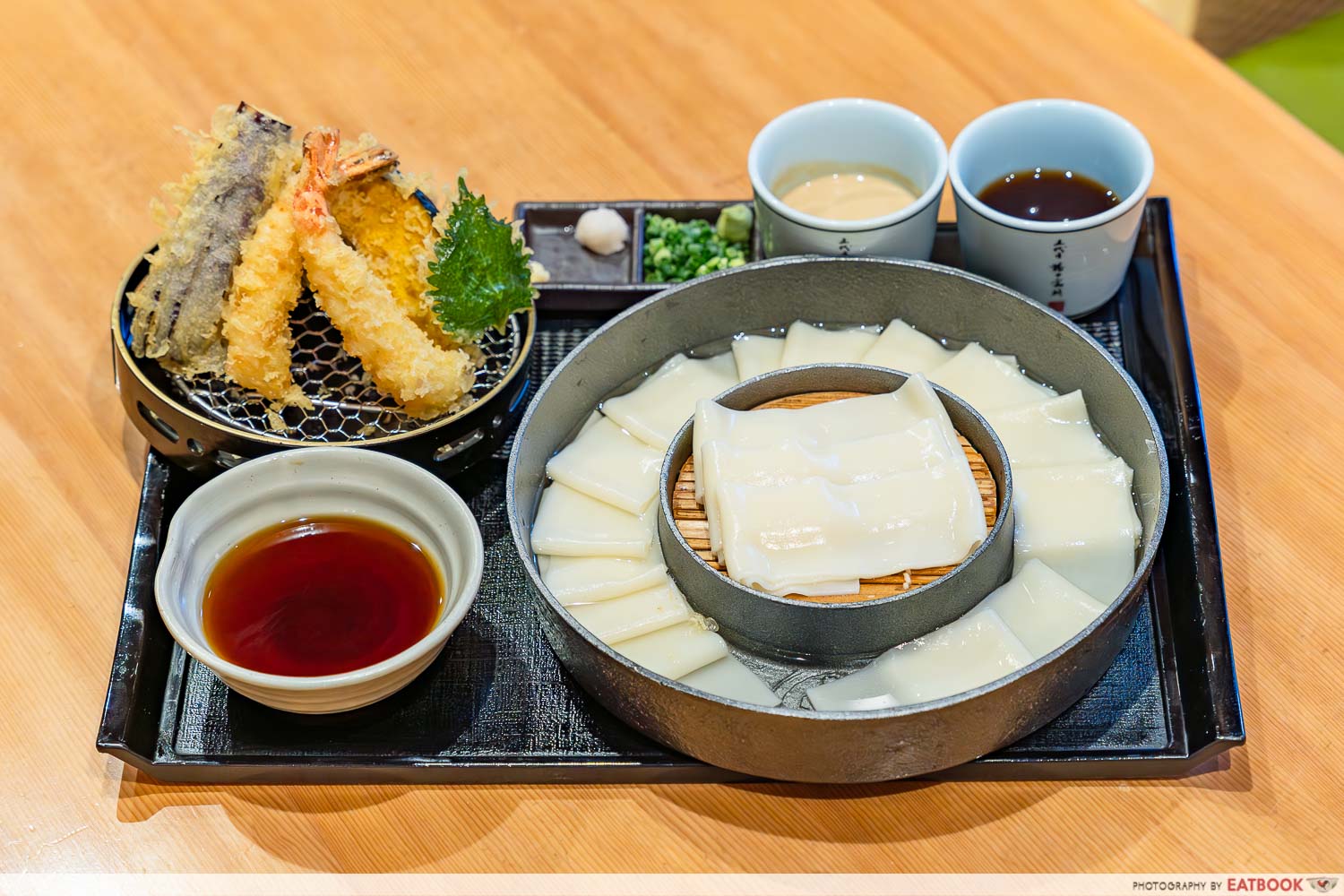
The Hanayama Set (¥1,590) allows you to choose regular or Himokawa udon.
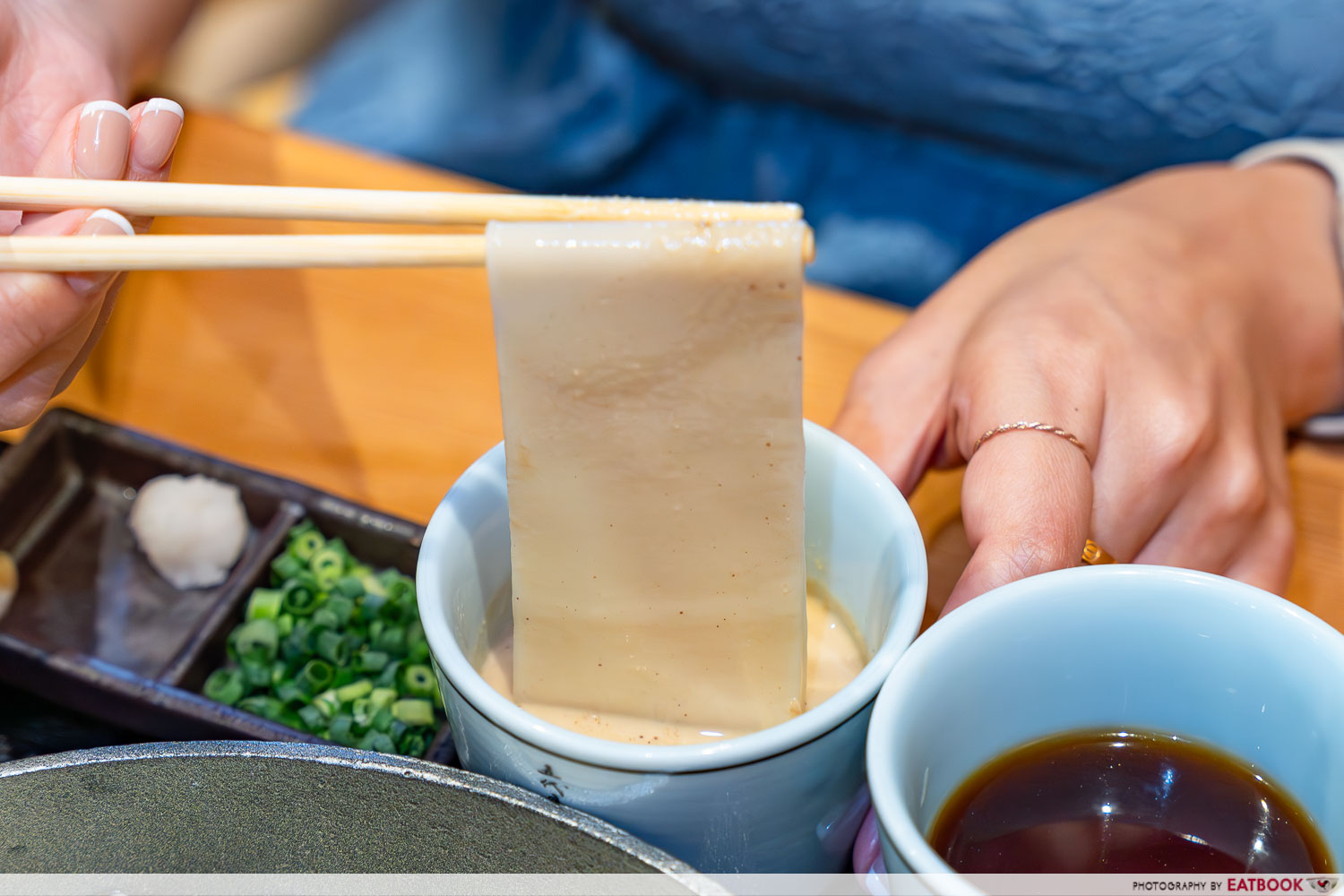
It’s served cold with their two specialty dipping sauces, in shoyu or a smooth, nutty-tasting sesame dip. A tempura platter accompanies this, with maitake mushrooms, seasonal vegetables, prawns, and squash.
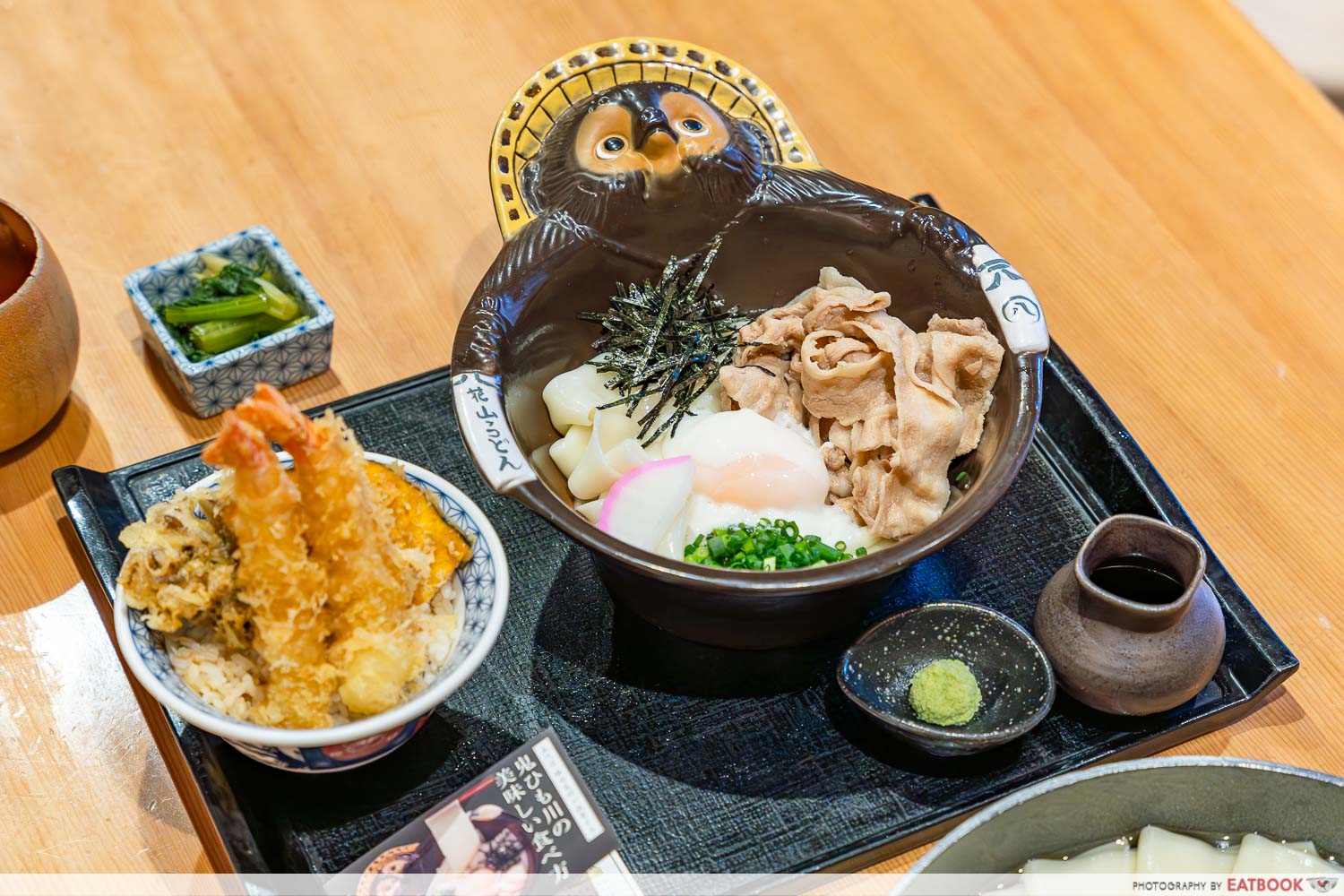
Then, there’s the Oni Set (¥1,890), which is only served with Himokawa udon. This set comes with a rice bowl, topped with your choice of tempura, grilled chicken, or salmon roe.
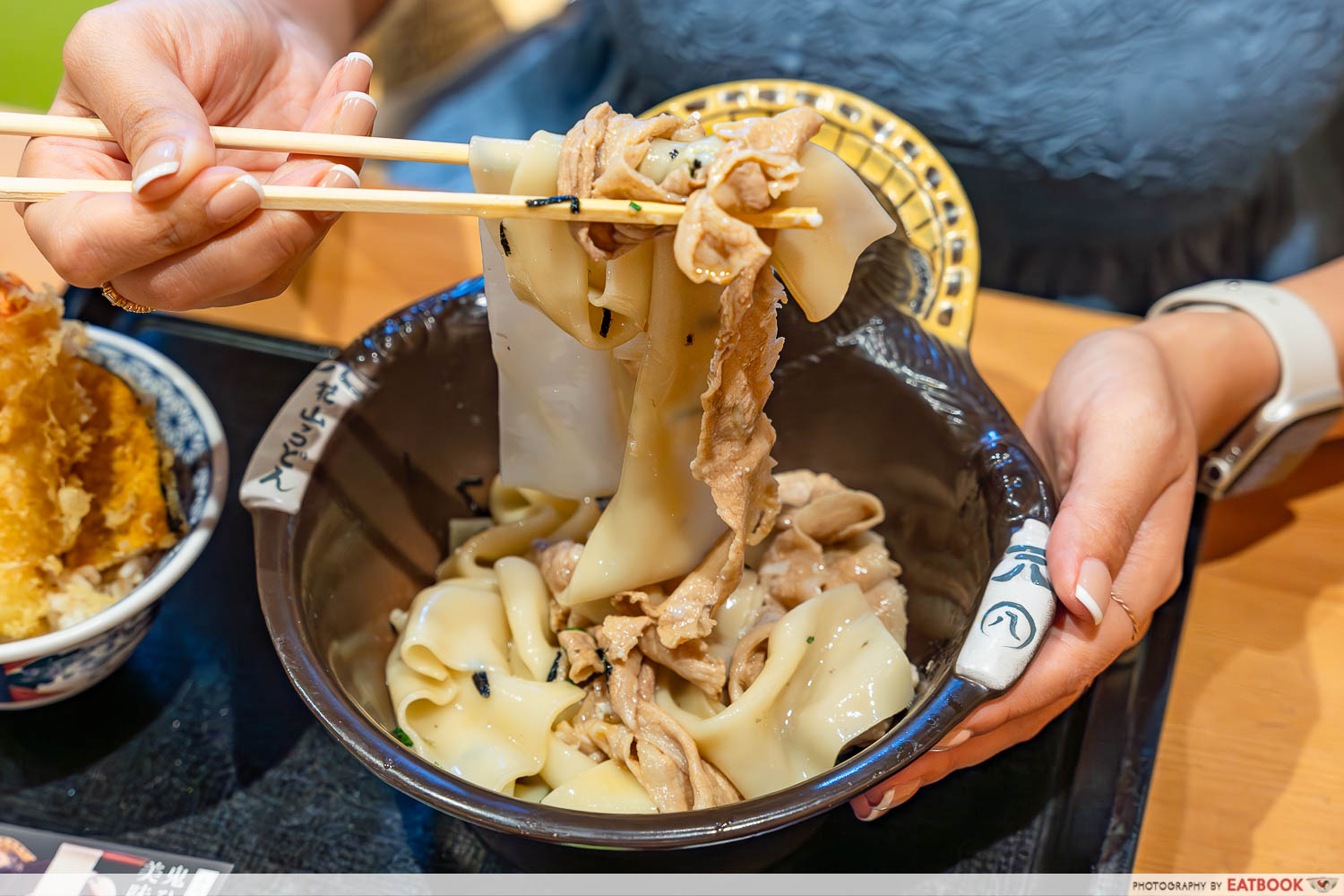
Here, their Onikama Udon is topped with Mugibuta pork. This is derived from barley-fed pigs in Gunma, prized for their well-marbled meat. Have your Onikama Udon hot, with a broth, or cold with a light, flavourful sauce to drizzle on.
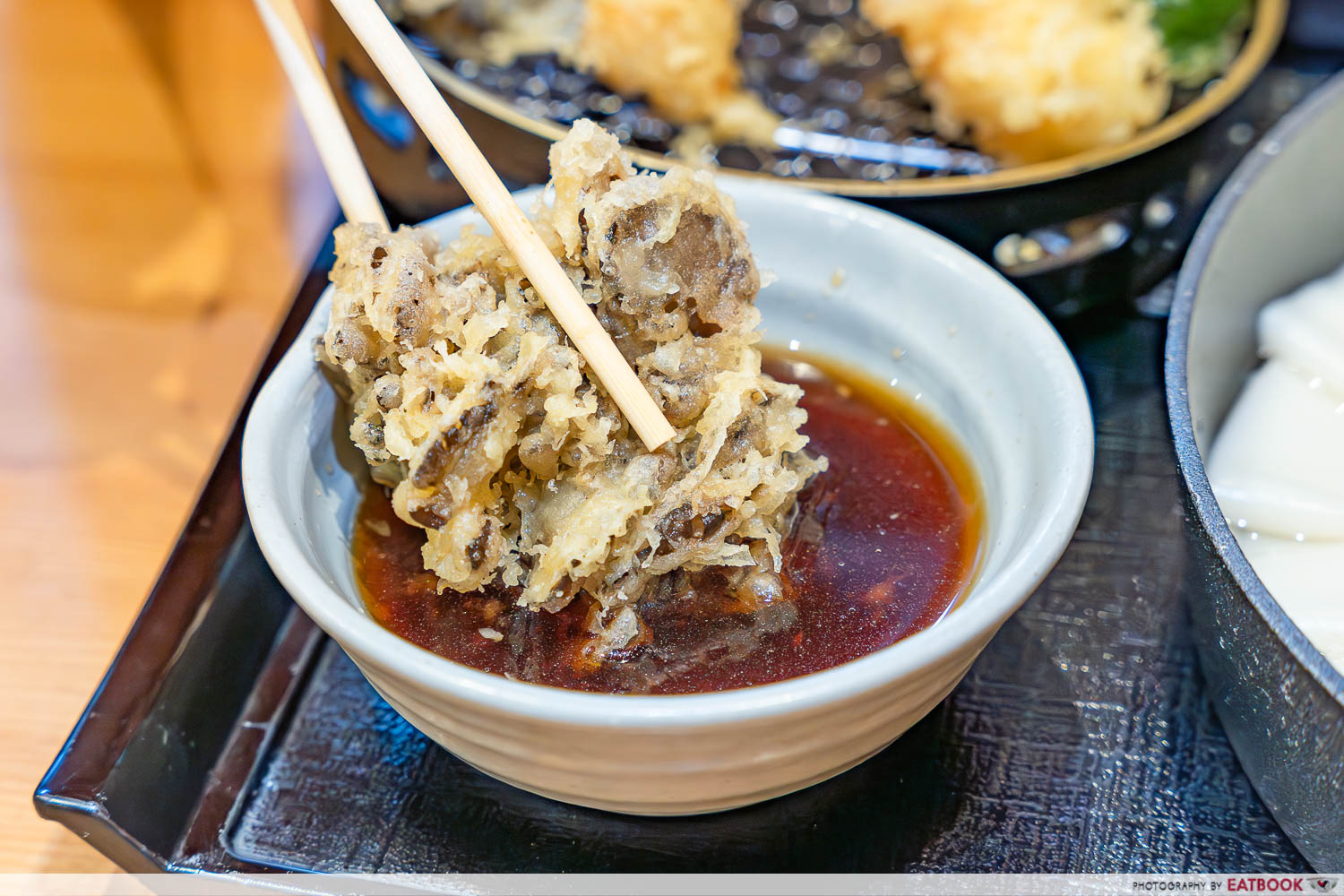
A must-try here is their Maitake Tempura, which is available a la carte, or included in the tendon.
The queues at the Ginza outlet of Godaime Hanayama Udon are legendary, so come prepared to wait. There are also outlets in Nihonbashi and at Haneda Airport, which are said to see shorter lines.
Website | Full list of outlets
Godaime Hanayama Udon is not a halal-certified eatery
4. Manten Sushi
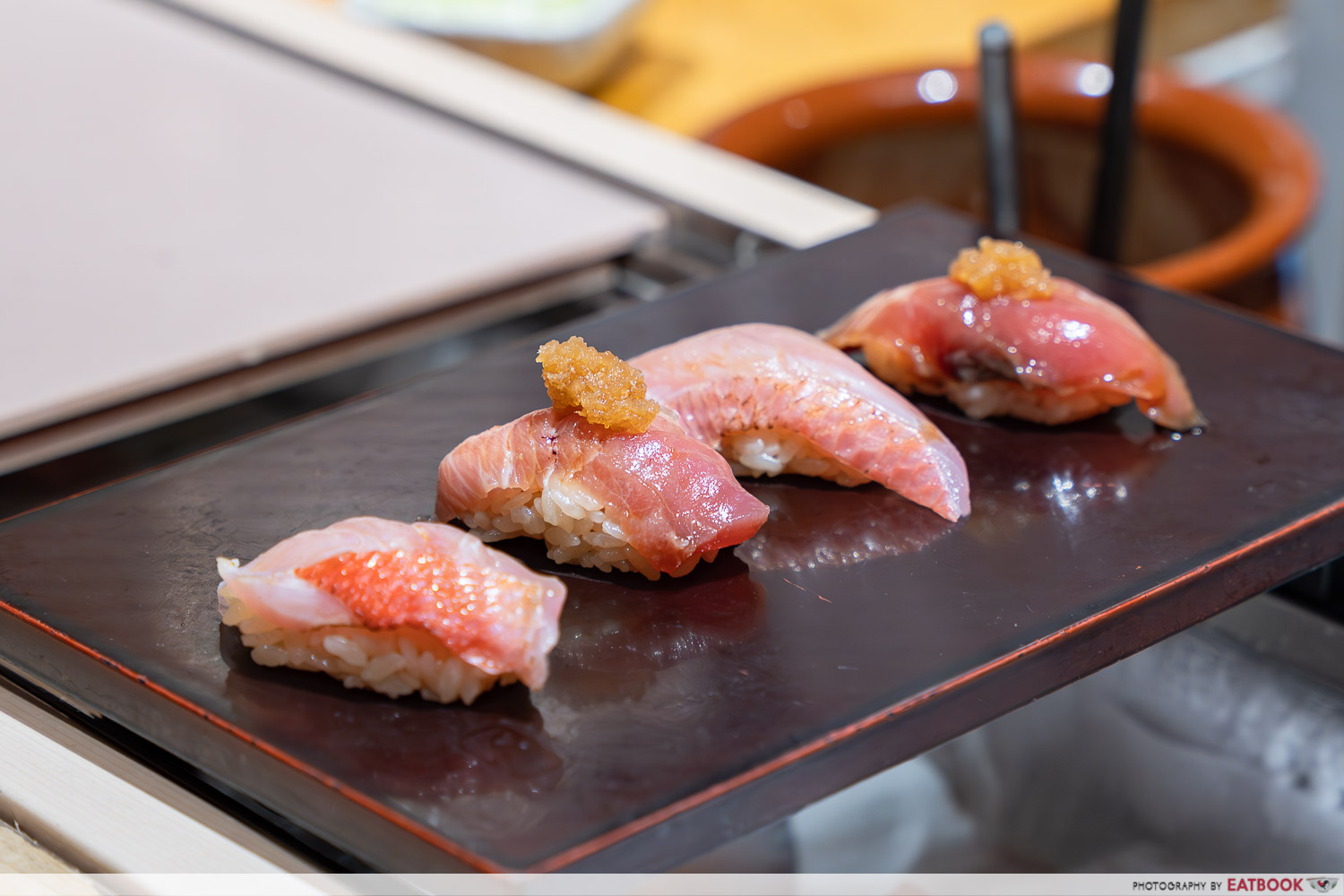
For omakase that doesn’t break the bank, put Manten Sushi on your list for a wallet-friendly, 23-course sushi meal.
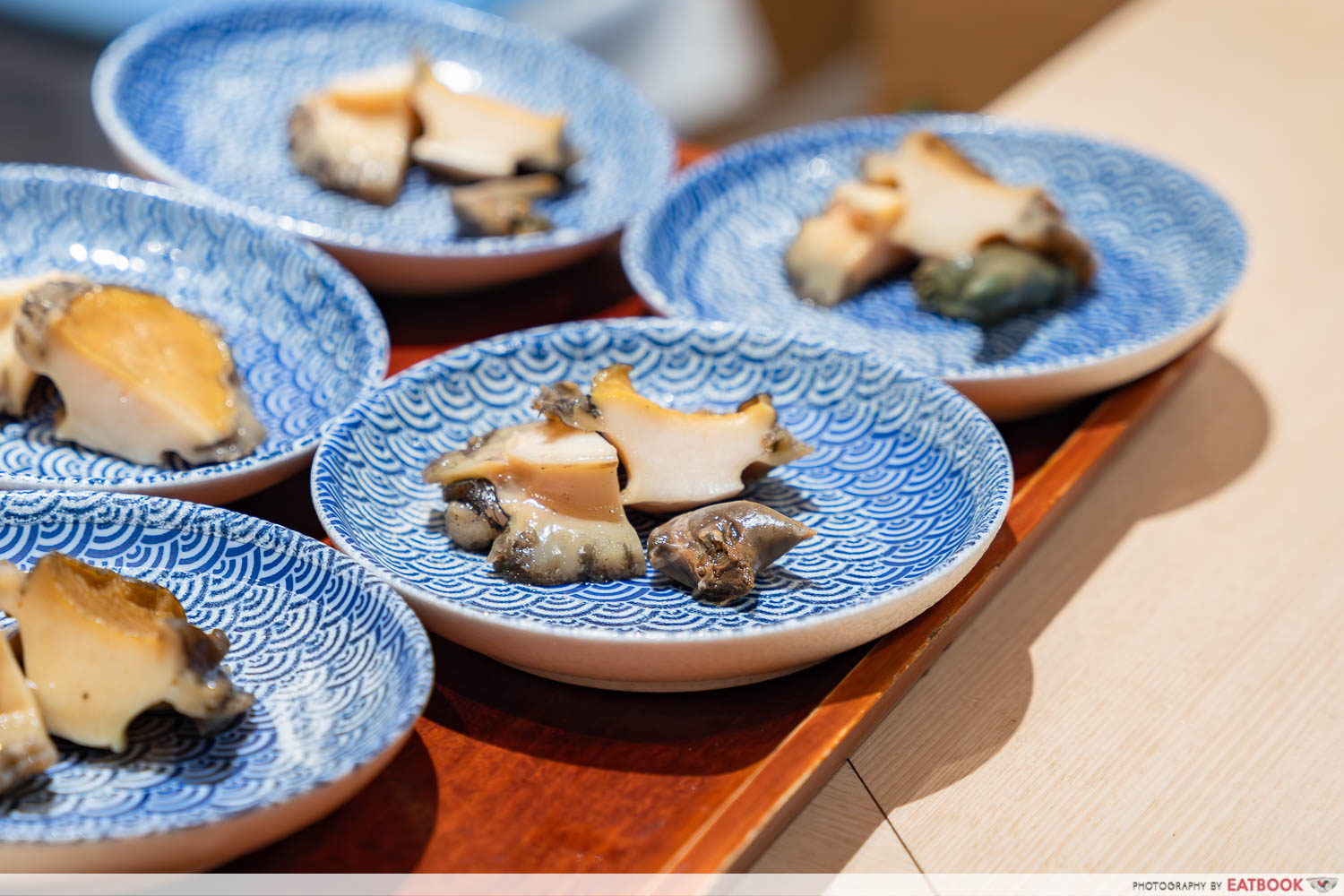
Whether at lunch or dinner, the meal will set you back just ¥8,800! Reservations are absolutely necessary if you’re looking to have a meal here.
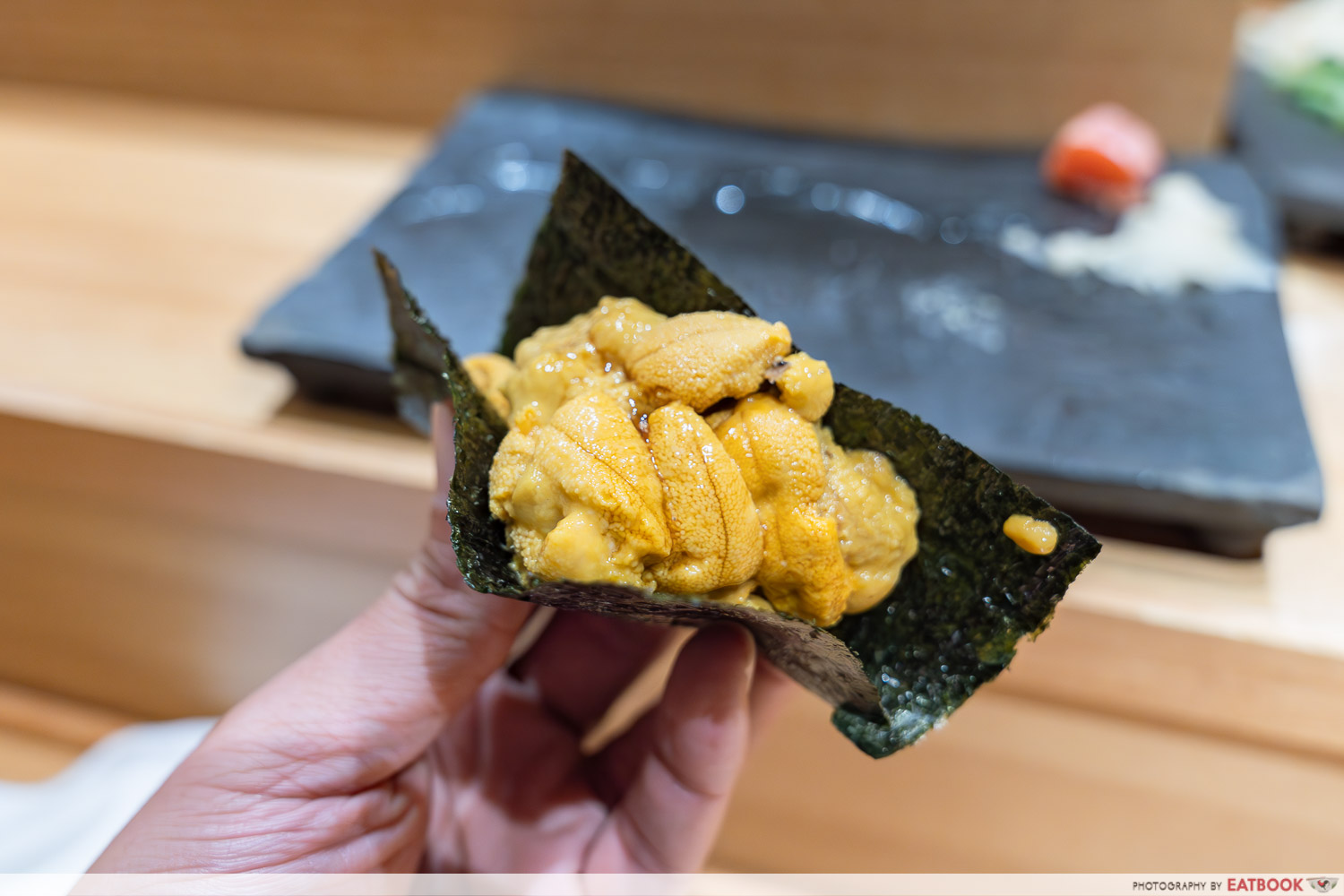
Service here is brisk, and the chef will ask if you’ve got any dietary restrictions; otherwise, everyone gets the same fare, which includes uni, hotate, abalone, toro and more, depending on the catch of the day.
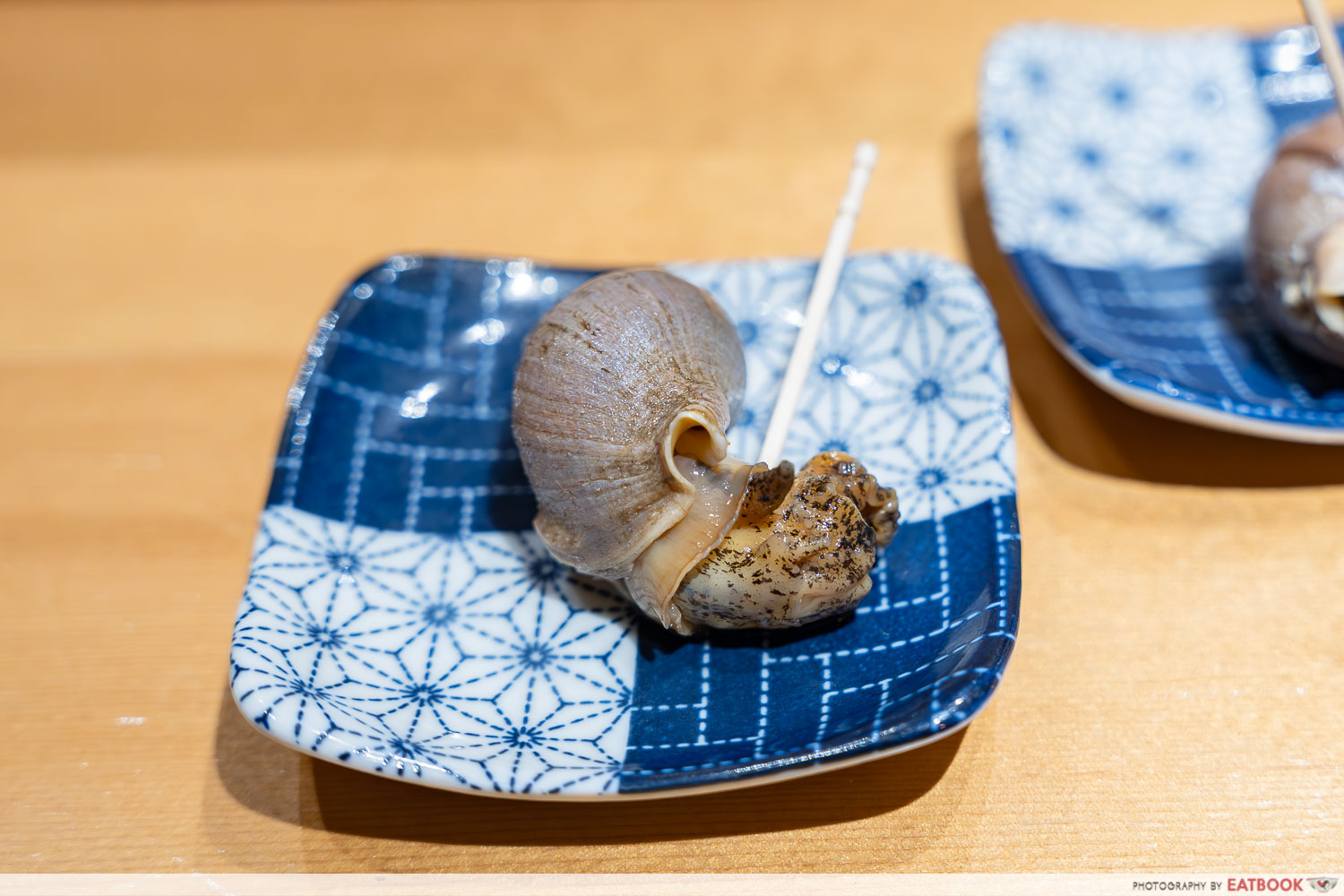
On our visit, we even had marinated baby squid, and tsubugai, a kind of sea whelk!
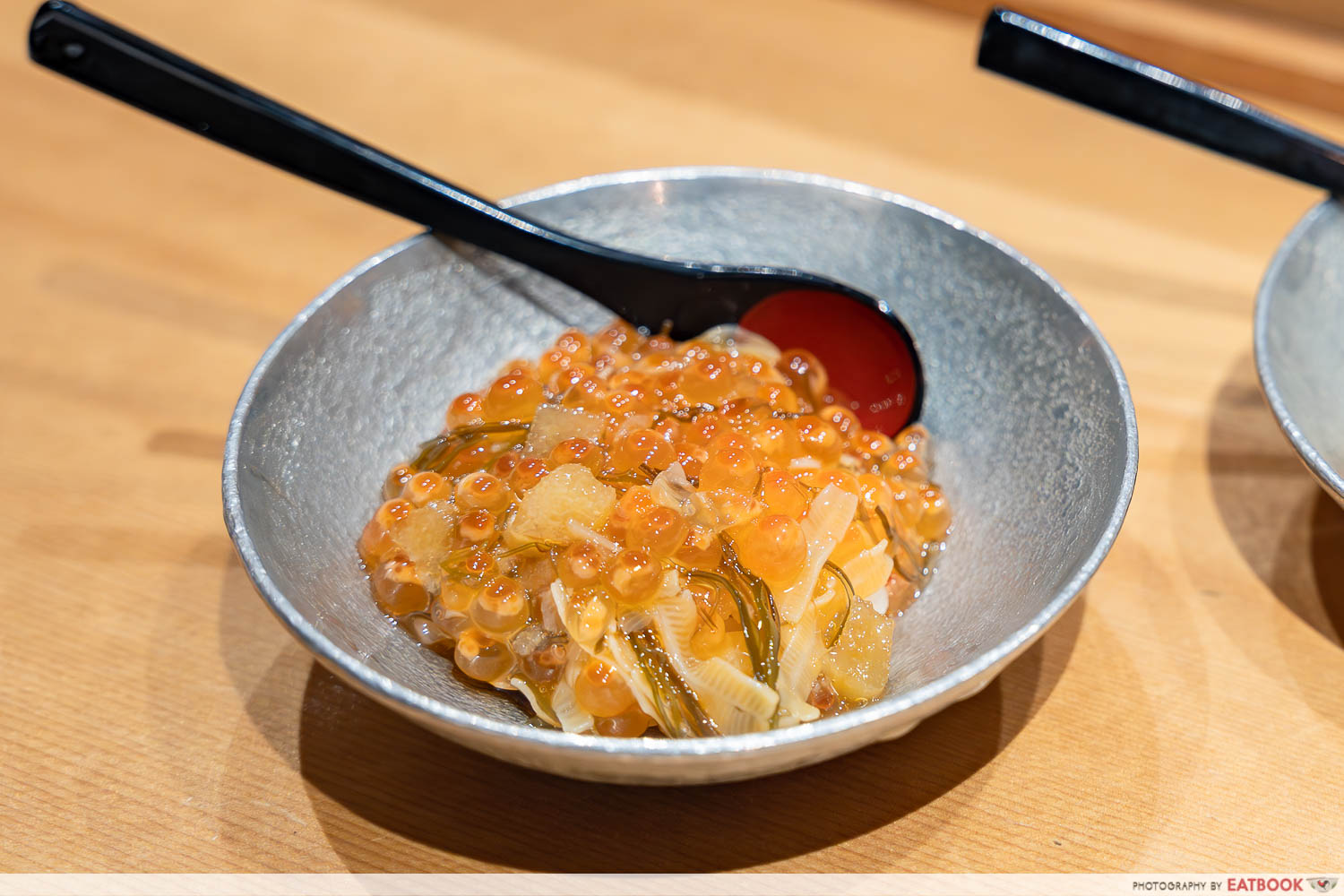
If all that sushi isn’t enough, you get to end the meal with a bowl of ikura-topped rice too, plus other small bites including fresh steamed peanuts, and Kyoho grapes.
Website | Full list of outlets
Manten Sushi is not a halal-certified eatery
5. Kisaburo Nojo
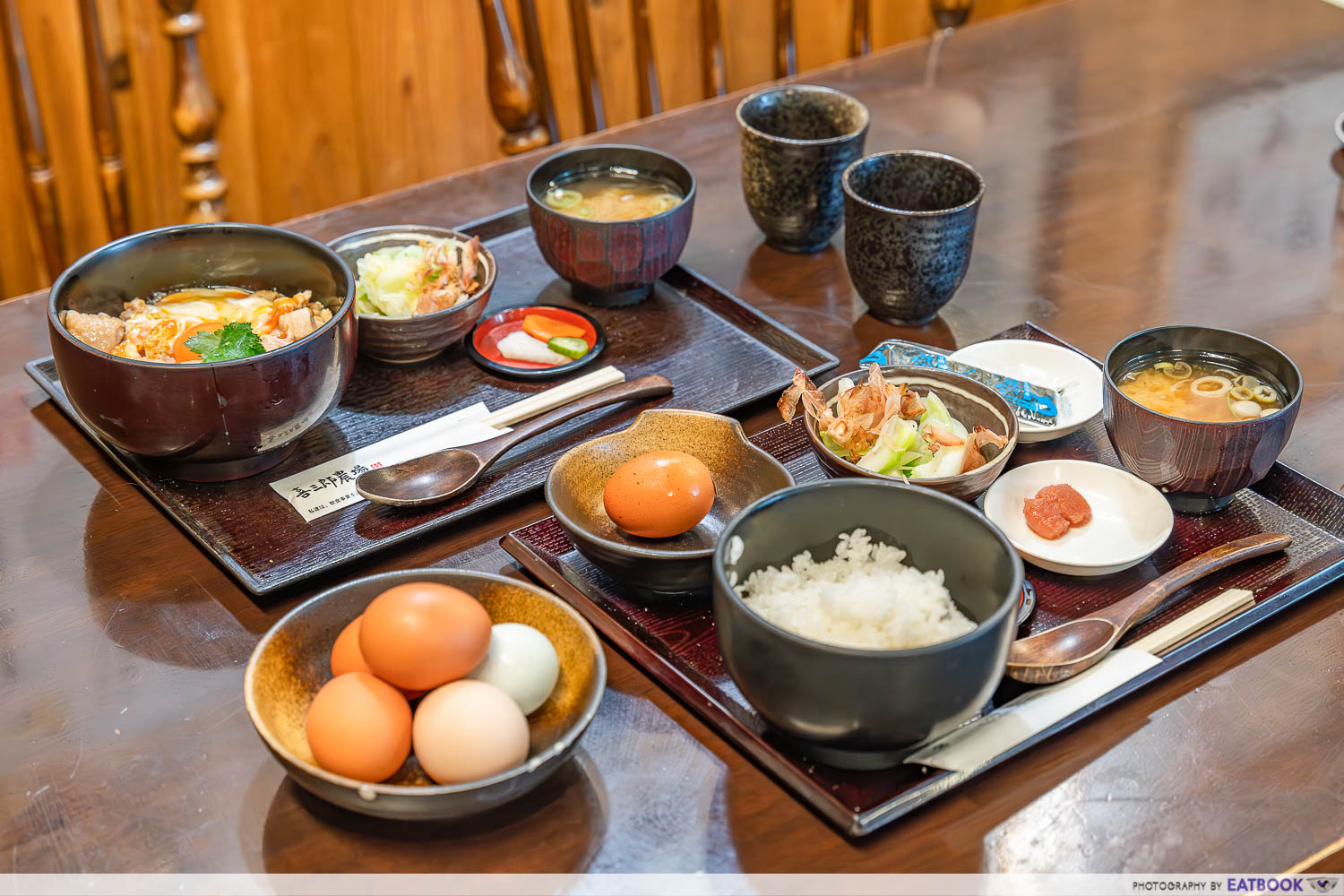
For the best initiation to the Japanese staple of TKG, AKA 卵かけご飯 (tamago kake gohan), or egg on rice, there’s no better place to start than at Kisaburo Nojo. They’re Tokyo’s first egg specialty restaurant, and have been around since 2009.
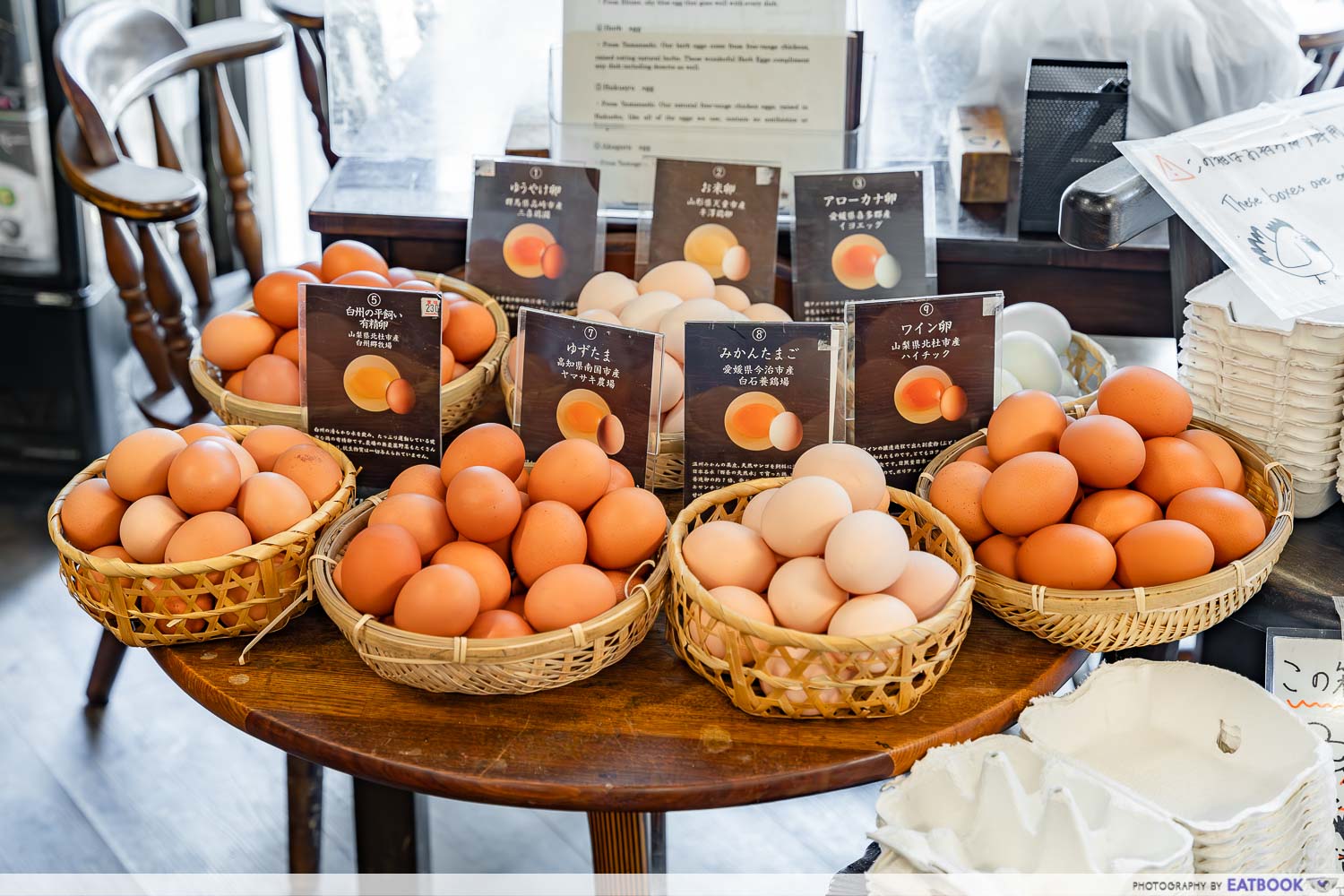
Here, eggs are sourced from all over the country, with a total of 12 varieties on offer. They’re not all available every day, with the selection rotated on a daily basis.

These include their signature Yuyake Egg from Gunma—yuyake is sunset in Japanese—and refers to the deep orange colour of the yolk. This was our favourite, with its ultra-rich, creamy flavour.
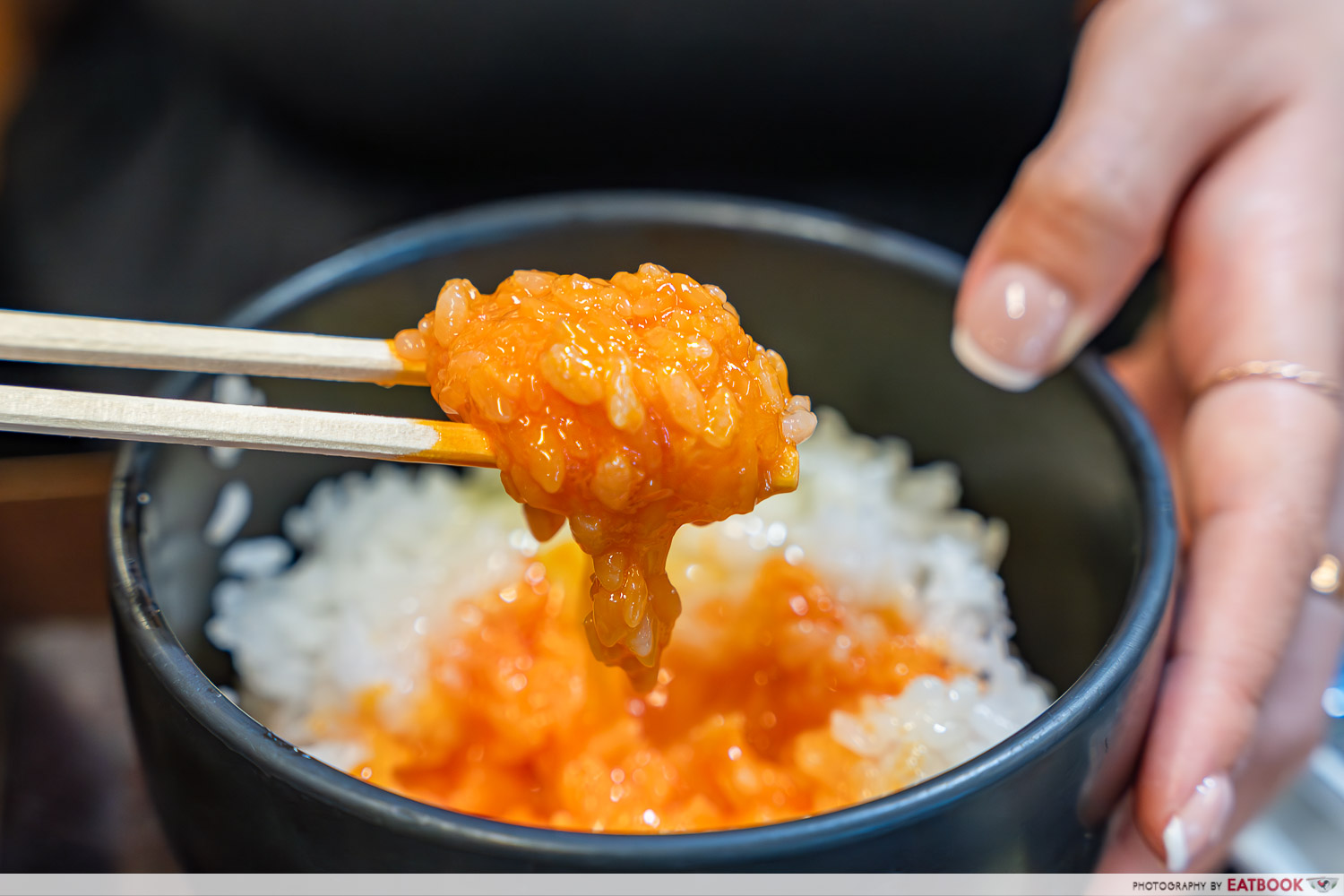
Simply break the egg into a bowl, lightly beat it with the TKG shoyu, and pour it over rice to enjoy.
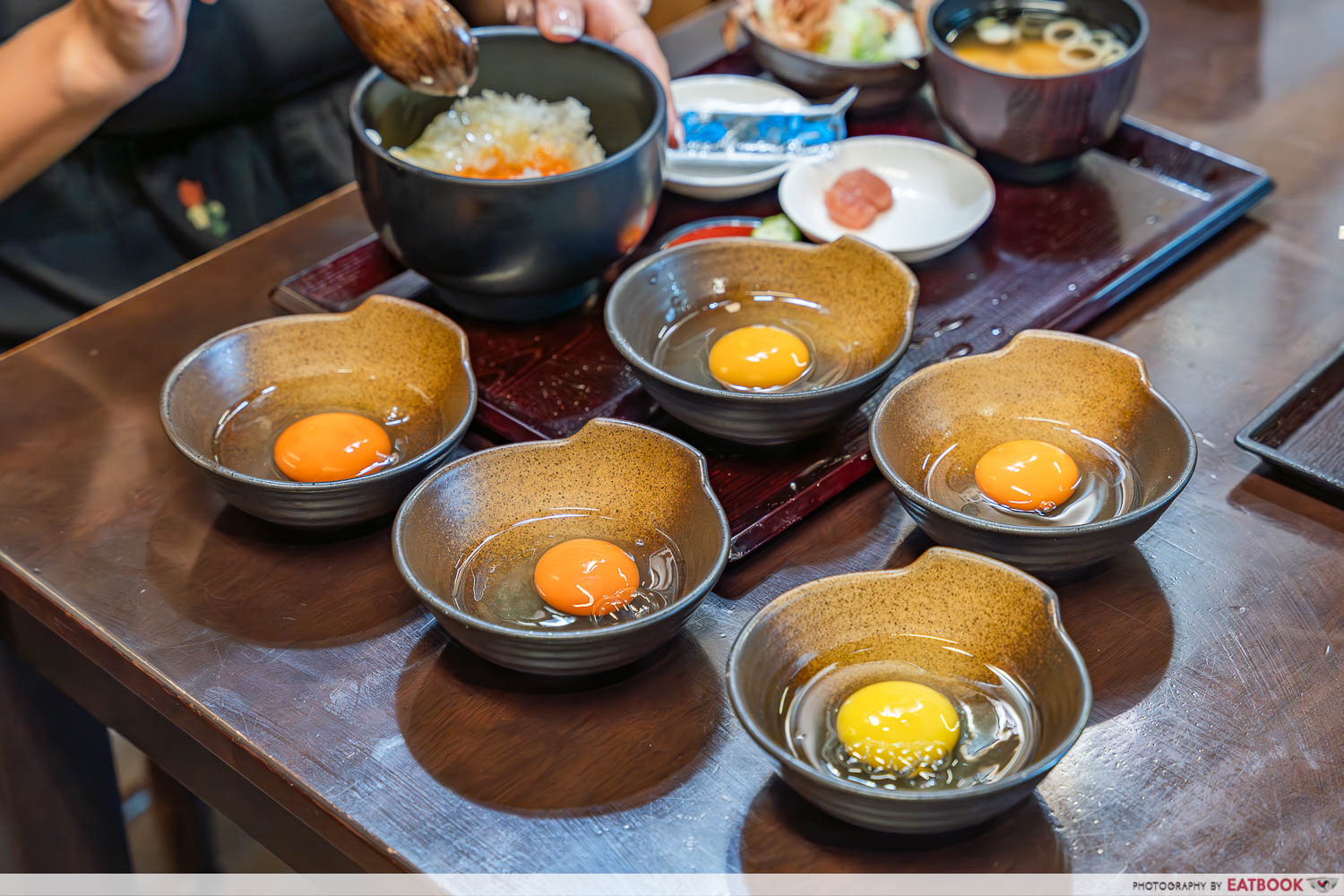
Other egg variants include a Wine Egg, Yuzu Egg, and even an Orange Egg!
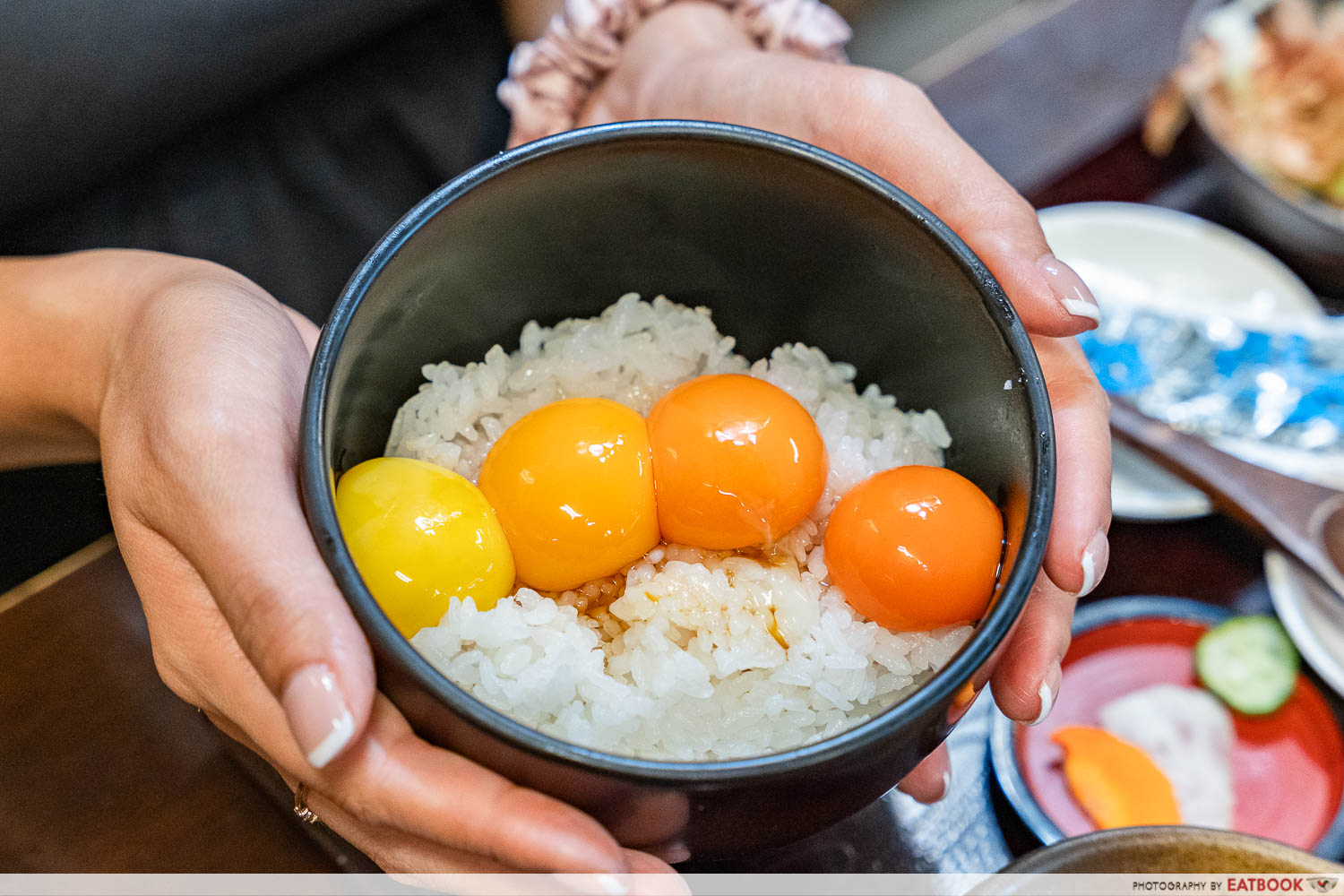
Get as many of these eggs as you can eat with a Raw Egg and Rice Gozen Set (¥600), which comes with a bowl of steaming hot rice, miso soup, and salad. Then, choose from more than 10 toppings to have with your TKG, such as Spicy Cod Roe, Cheese, Chopped Shiso Leaf and more. Each topping is priced at ¥120.
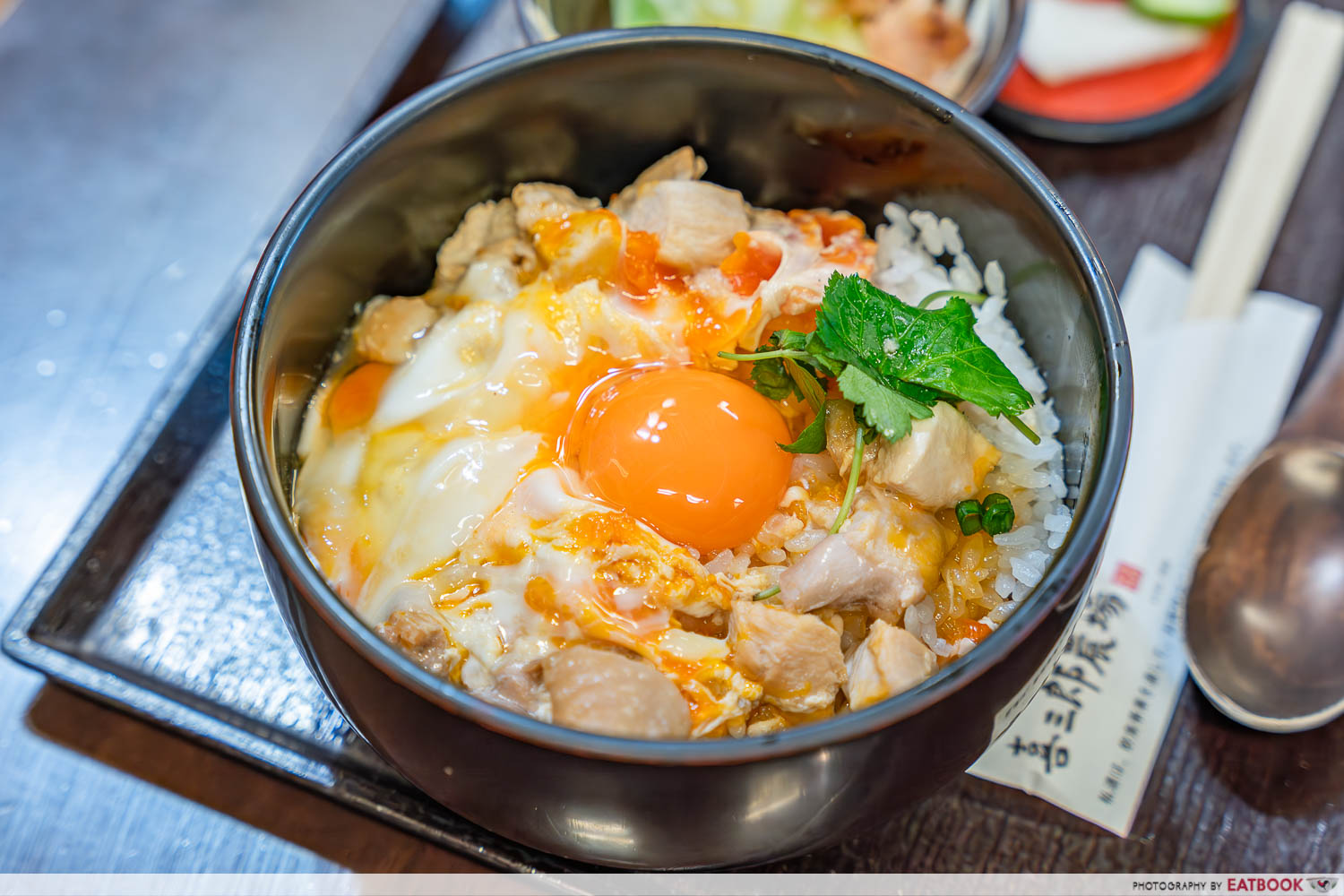
Alternatively, order a Premium Chicken-And-Egg Rice Bowl Made With Local Chicken And Yuyake Egg (from ¥1,350), AKA oyakodon, featuring Kaiji Shamo chicken, Koshi-Hikari rice, and an extra Yuyake Egg yolk!
Address: 1 Chome-23-11 Sengoku, Bunkyo City, Tokyo 112-0011
Opening hours: Mon-Fri 11am to 2:30pm, 5pm to 9pm, Sat-Sun 11am to 4pm, 5pm to 9pm
Tel: +81 3-3943-3746
Website
Kisaburo Nojo is not a halal-certified eatery
6. Dolce Tacubo
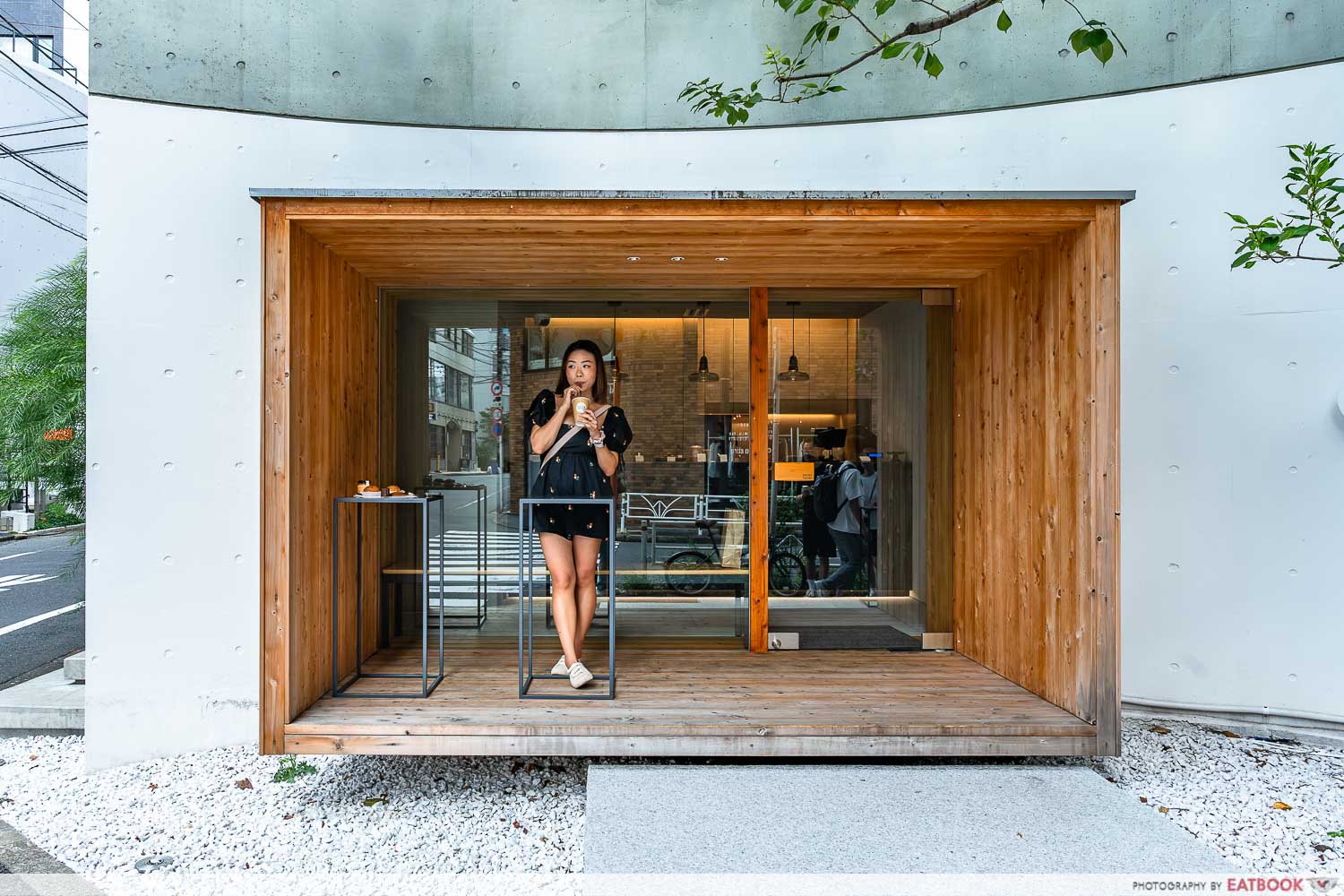
For Michelin-starred desserts without having to spend a bomb on the meal, check out Dolce Tacubo, a super #aesthetic cafe in Ebisu by one-starred Italian restaurant Tacubo.
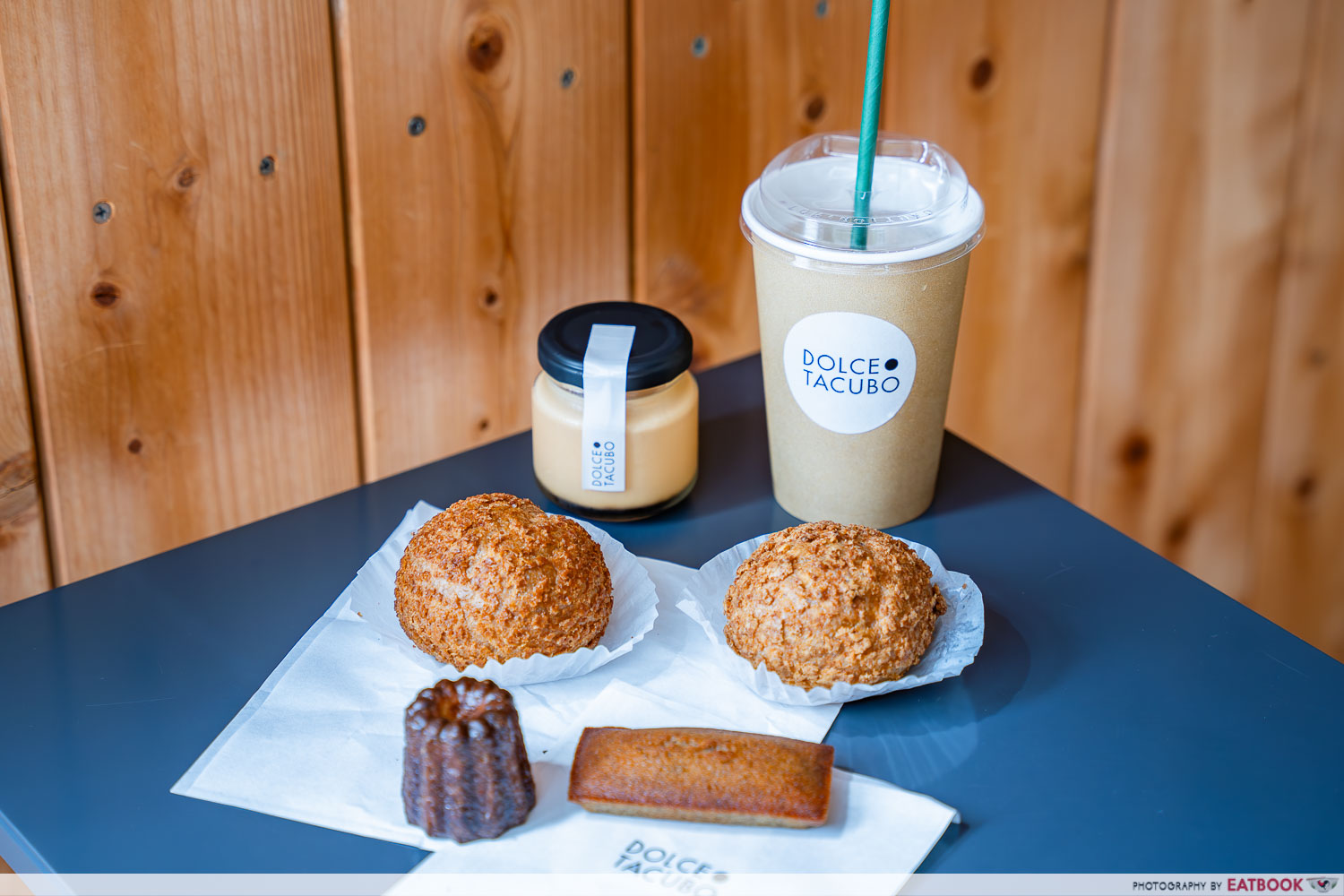
There are only four desserts on the menu here, available in limited quantities each day. You’re advised to pre-order them online ahead of your visit to be certain to get your hands on them!
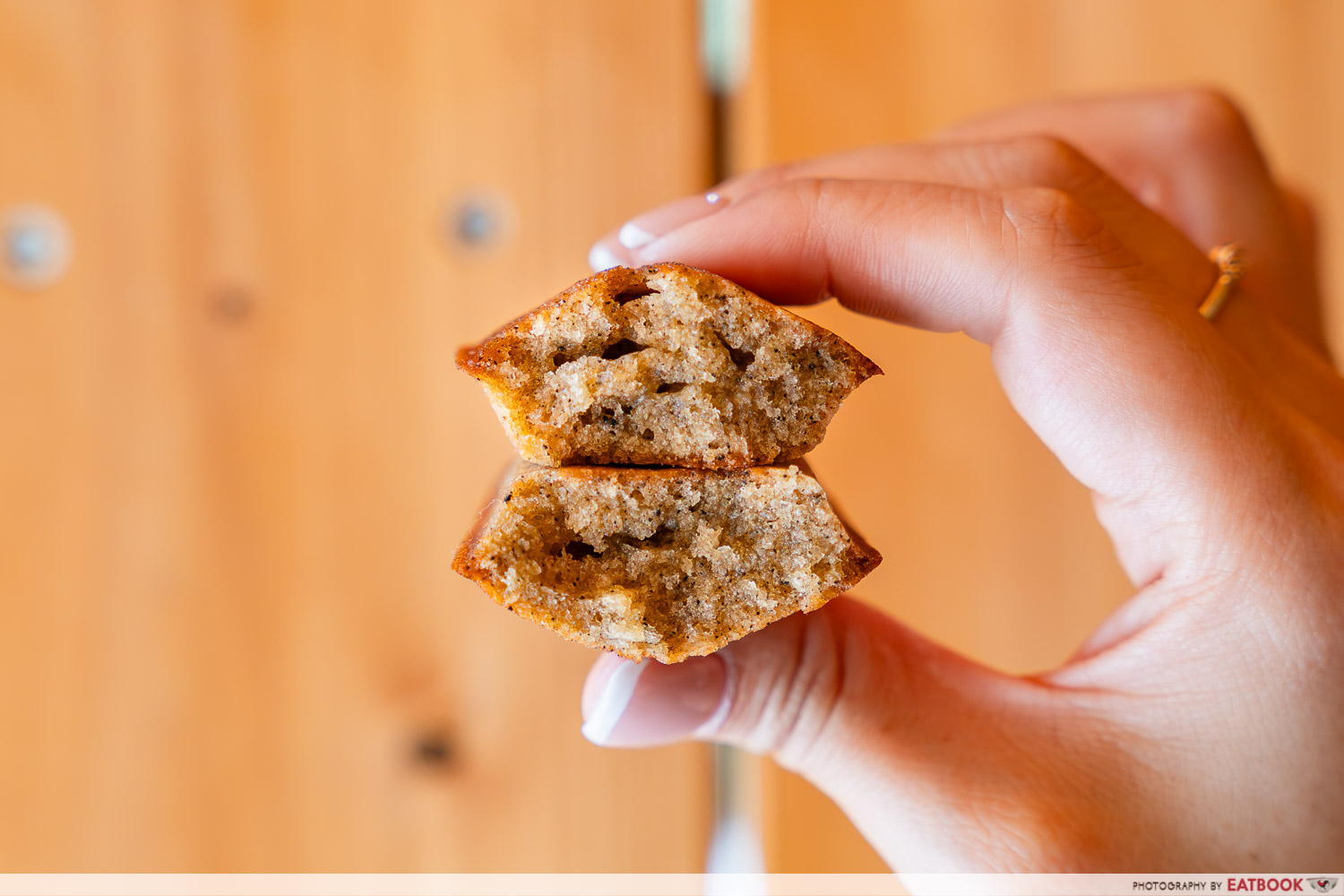
If you’ve only got stomach real estate for one item, go for the Financier (¥400), baked with brown butter for a super crisp exterior, and a nutty flavour. It’s best enjoyed warm!
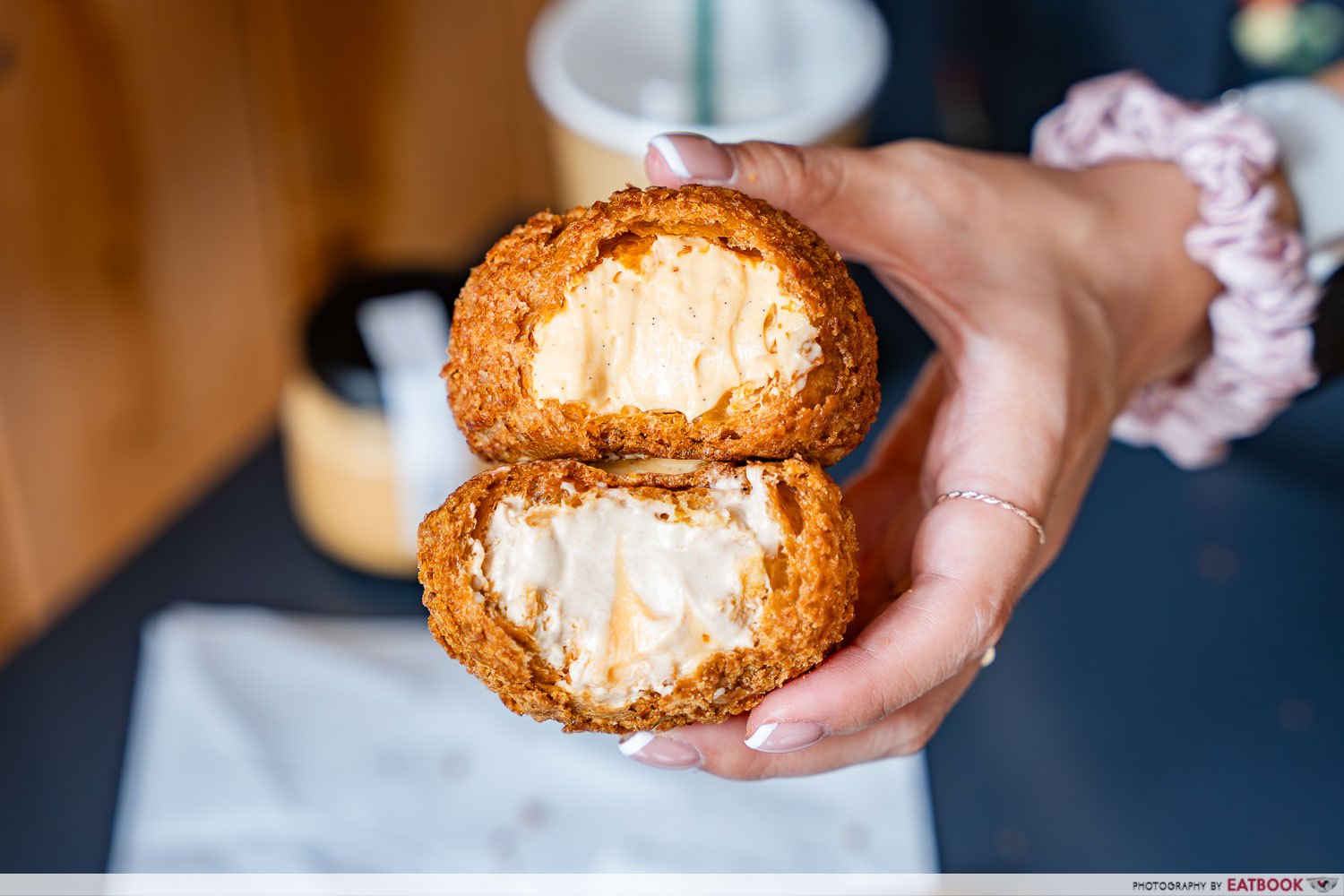
Otherwise, the Canele (¥400) and Chou a la Creme (¥700) are worthy contenders, with the cream puffs coming in both Custard and Hazelnut variants.
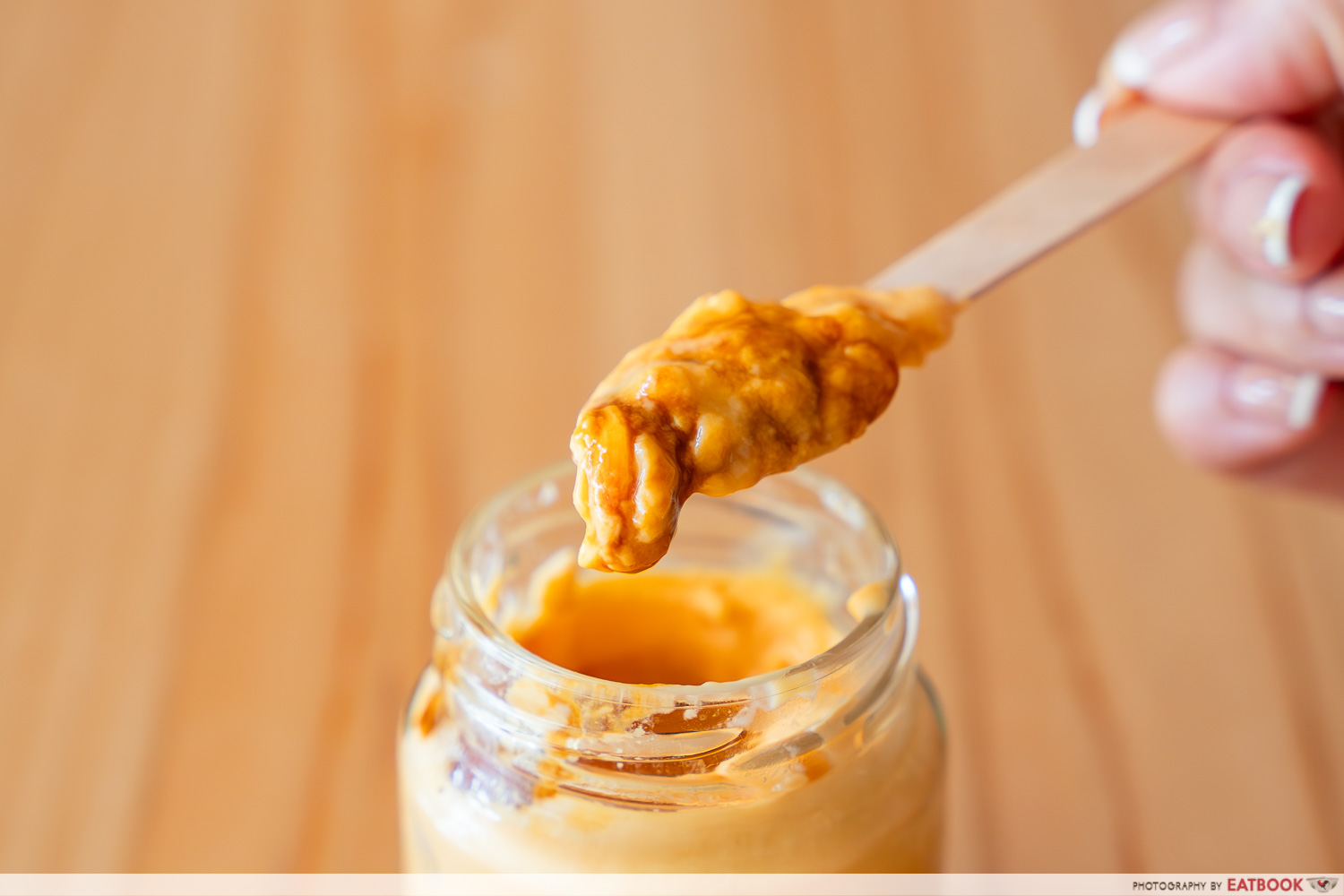
We especially loved the Pudding (¥700), with its ultra eggy, smooth finish. Dig into the bottom for the caramel!
Address: 2 Chome−15−9, Ebisunishi, Shibuya City, Tokyo 150-0021
Opening hours: Daily 11am to 7pm
Tel: +81 3-6416-3940
Website
Dolce Tacubo is not a halal-certified eatery
7. STABLER Meatsand
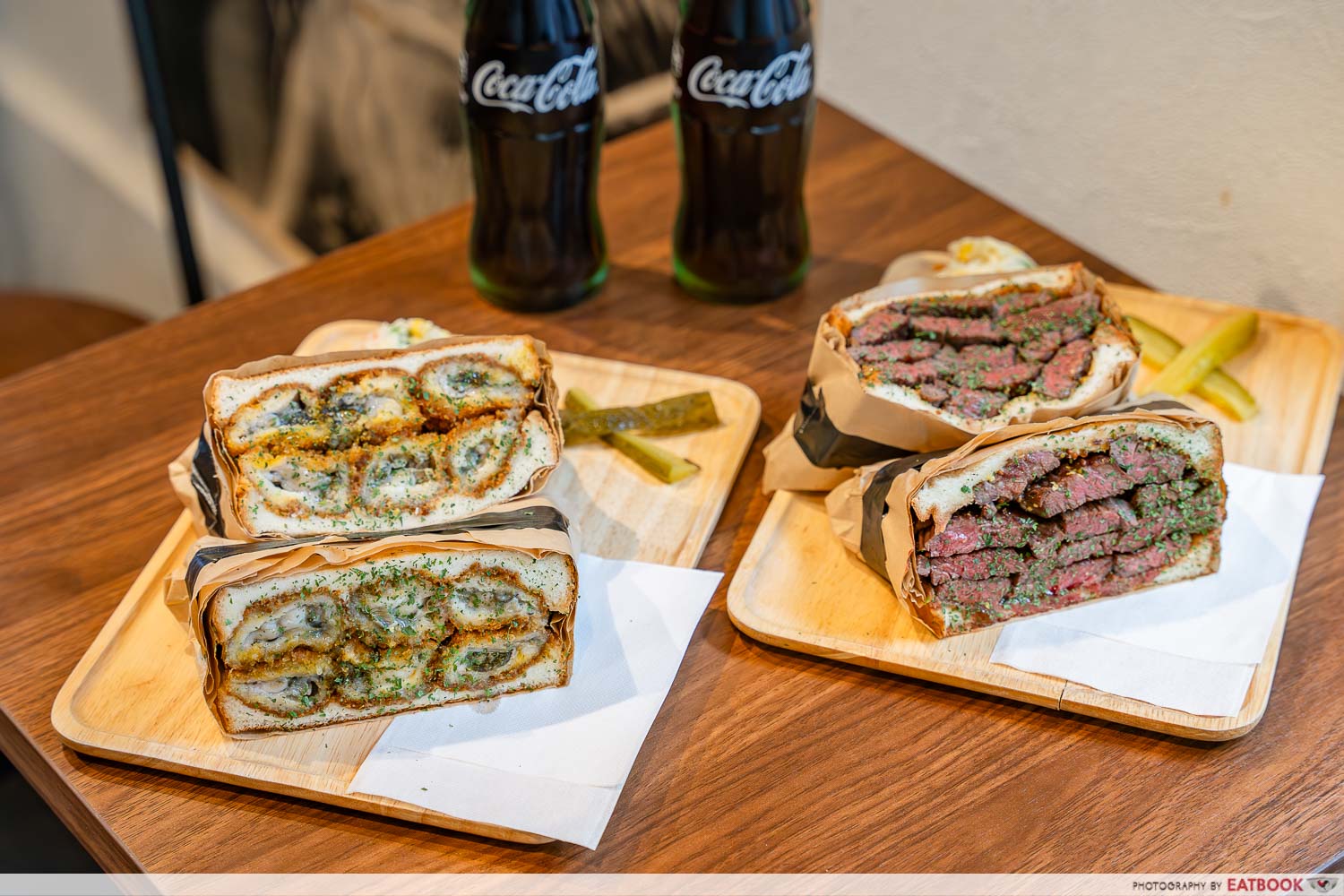
Gym bros, you’ll want to bookmark this: STABLER Meatsand is the one for you, with their signature XXL beef sando that clocks in at under $20!
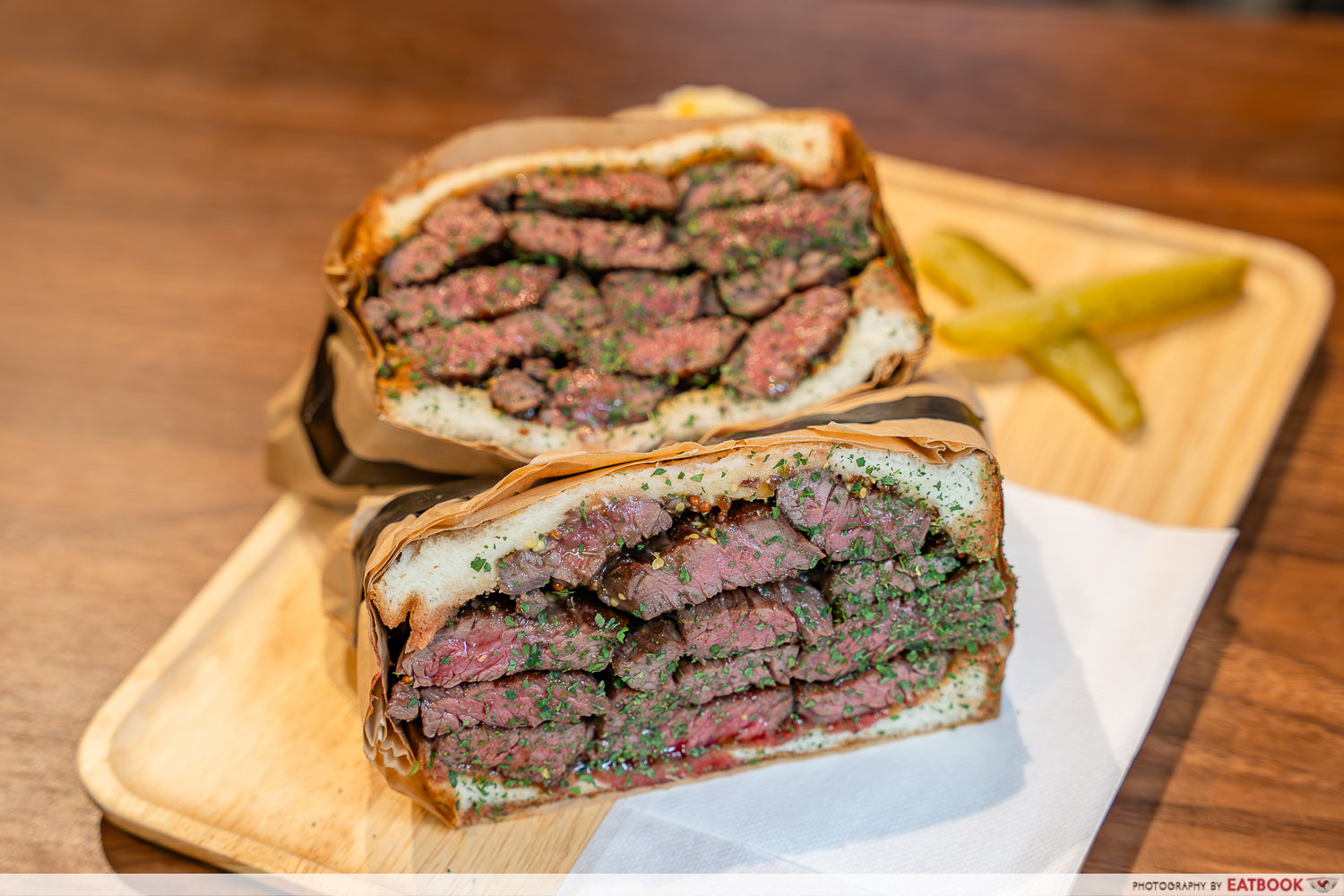
The Shimokitazawa Meat Sandwich comes in two sizes: S (¥1,400), and W (¥1,900). S gets you 150g of US beef sandwiched between thick slices of shokupan, while W is a whopping 300g of meat.
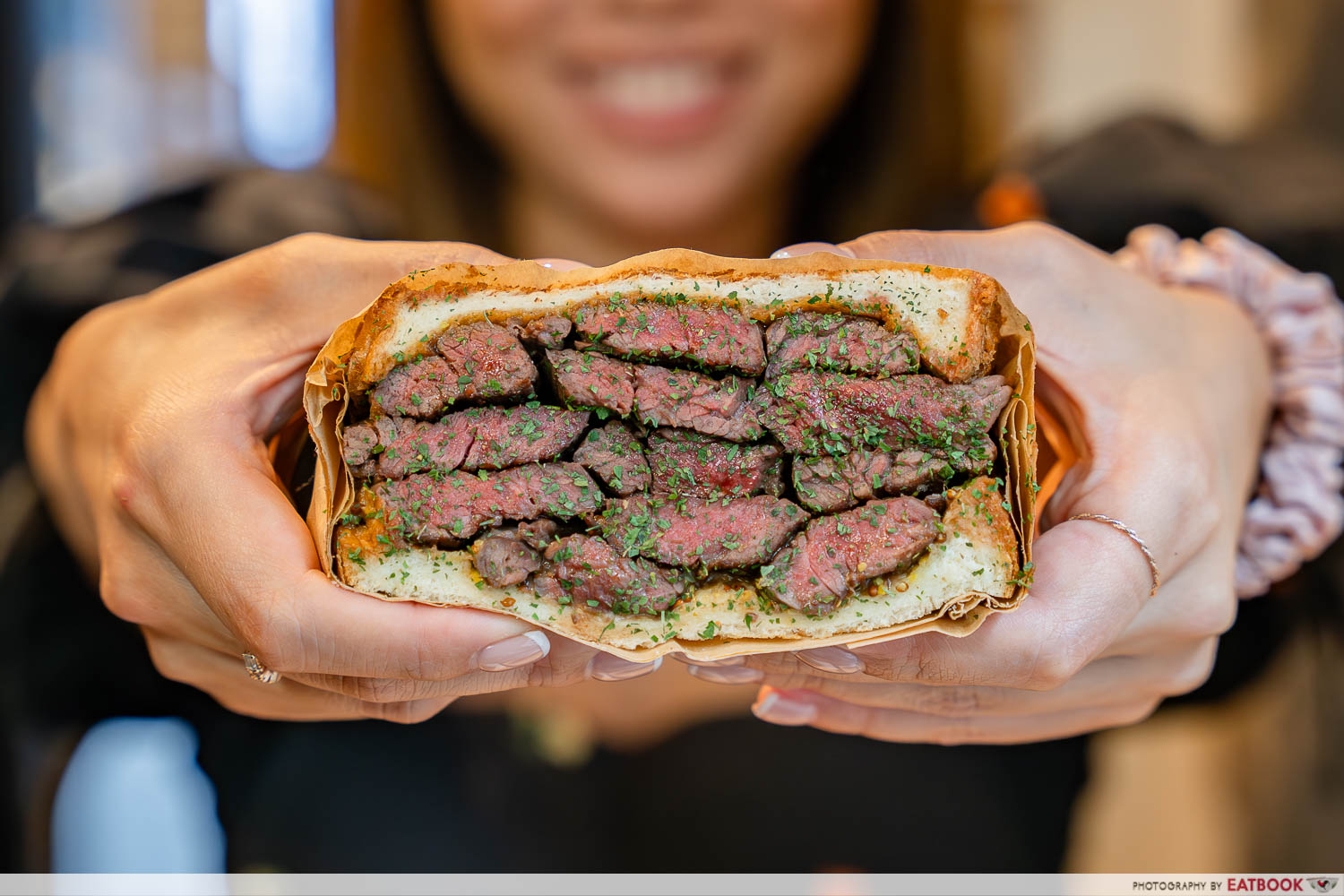
All the beef is pan-seared to order, and cooked to medium-rare doneness, then laid on wholegrain mustard that’s slathered on the toasted bread.

We tried their Oyster Sandwich (from ¥1,300), which similarly comes in S and W sizes. Freshly deep-fried, we loved how plump and meaty these were, paired with house-made tartar sauce spread on the toast.
Website | Full list of outlets
STABLER Meatsand is not a halal-certified eatery
8. Yurakucho Kakida
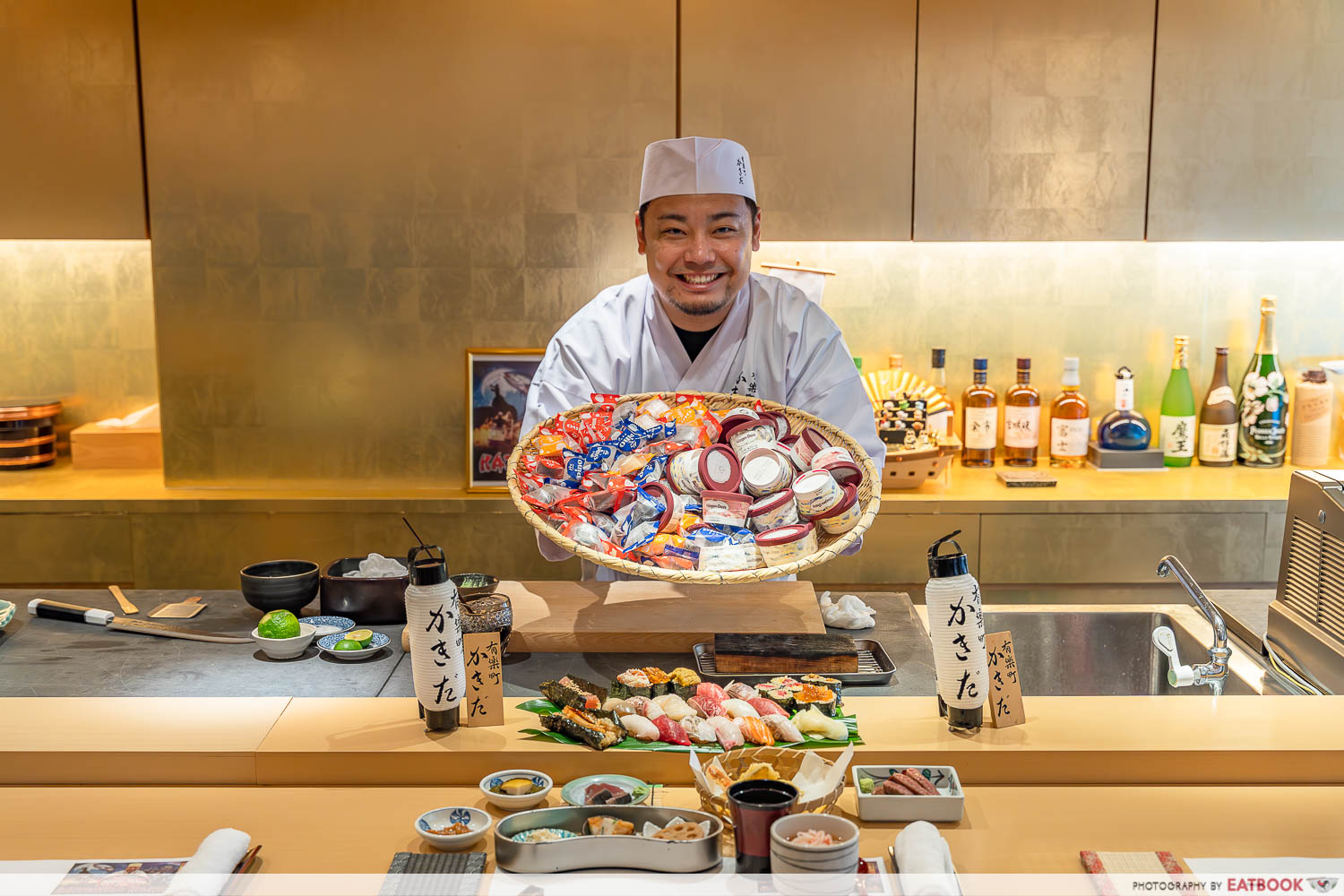
Step aside, buffets, because Yurakucho Kakida is the one to beat. Self-taught Chef Kakida Kazuhiro learned his trade off YouTube, but that hasn’t stopped him from heading to Toyosu Market every morning for the freshest seafood to be served at his wildly popular restaurant.
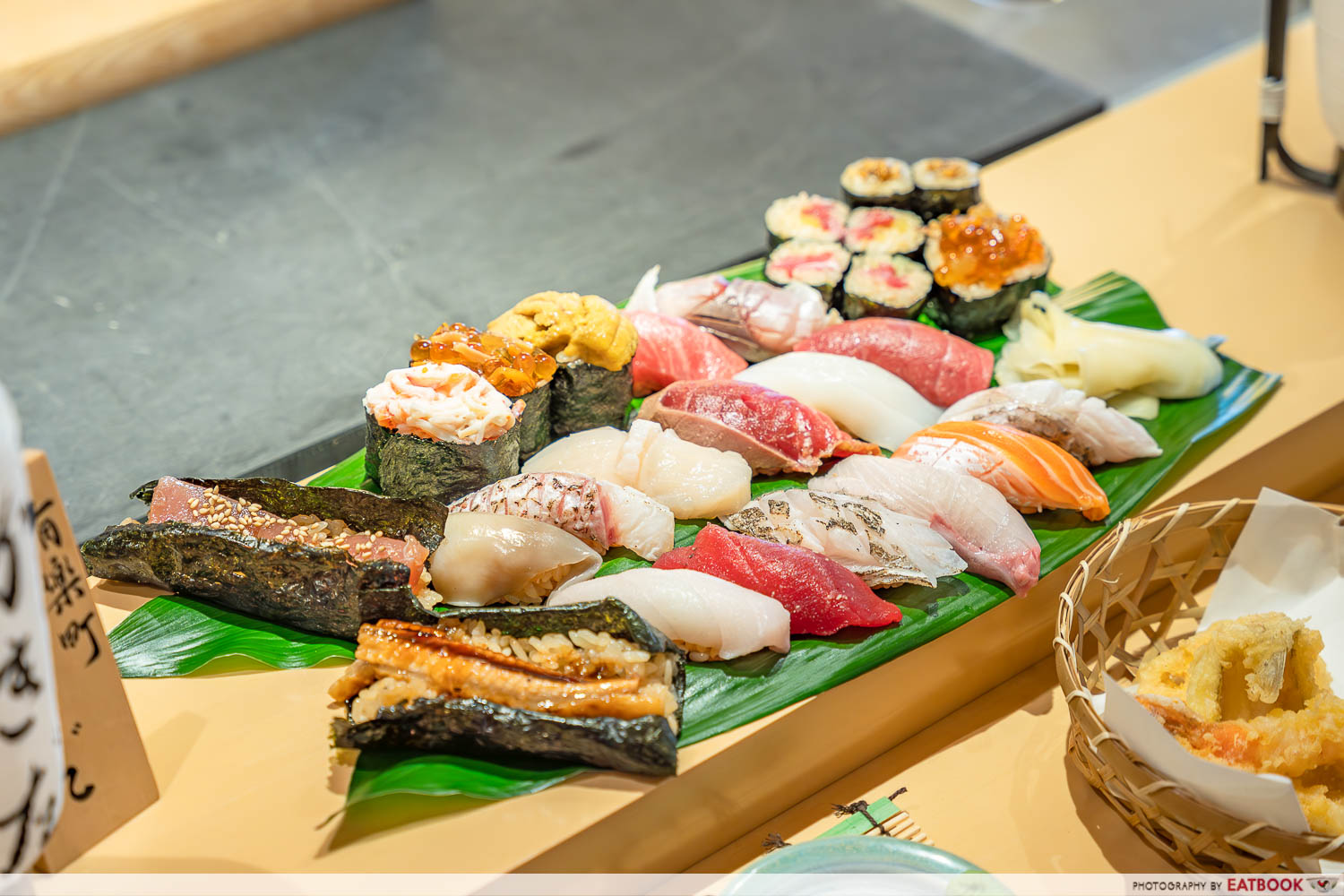
Why wildly popular, you may ask━that’s because a meal at Yurakucho Kakida costs just ¥12,000 if you dine at the counter before 6pm, and comes with all the sushi you can eat!

This includes as many uni gunkan and otoro nigiri as you could possibly stomach. As long as he’s served it to you in the initial line-up, you can ask for more of it.

Lunches are easier to book; dinners at the sushi counter, which start from ¥15,000, are booked out a month in advance. The evening session costs more, but it also comes with Wagyu, abalone and more.
Save your stomach for dessert━besides unlimited sushi, there’s also a free flow of ice cream and drinks! Top up ¥1,000 for bottomless refills of alcoholic beverages.
Address: 2 Chome−2−1, 19F, Hotel Century Southern Tower, Yoyogi, Shibuya City, Tokyo 151-8583
Opening hours: Daily 12pm to 10:30pm
Tel: +81 80-7164-5210
Website
Yurakucho Kakida is not a halal-certified eatery.
9. Come On Izakaya
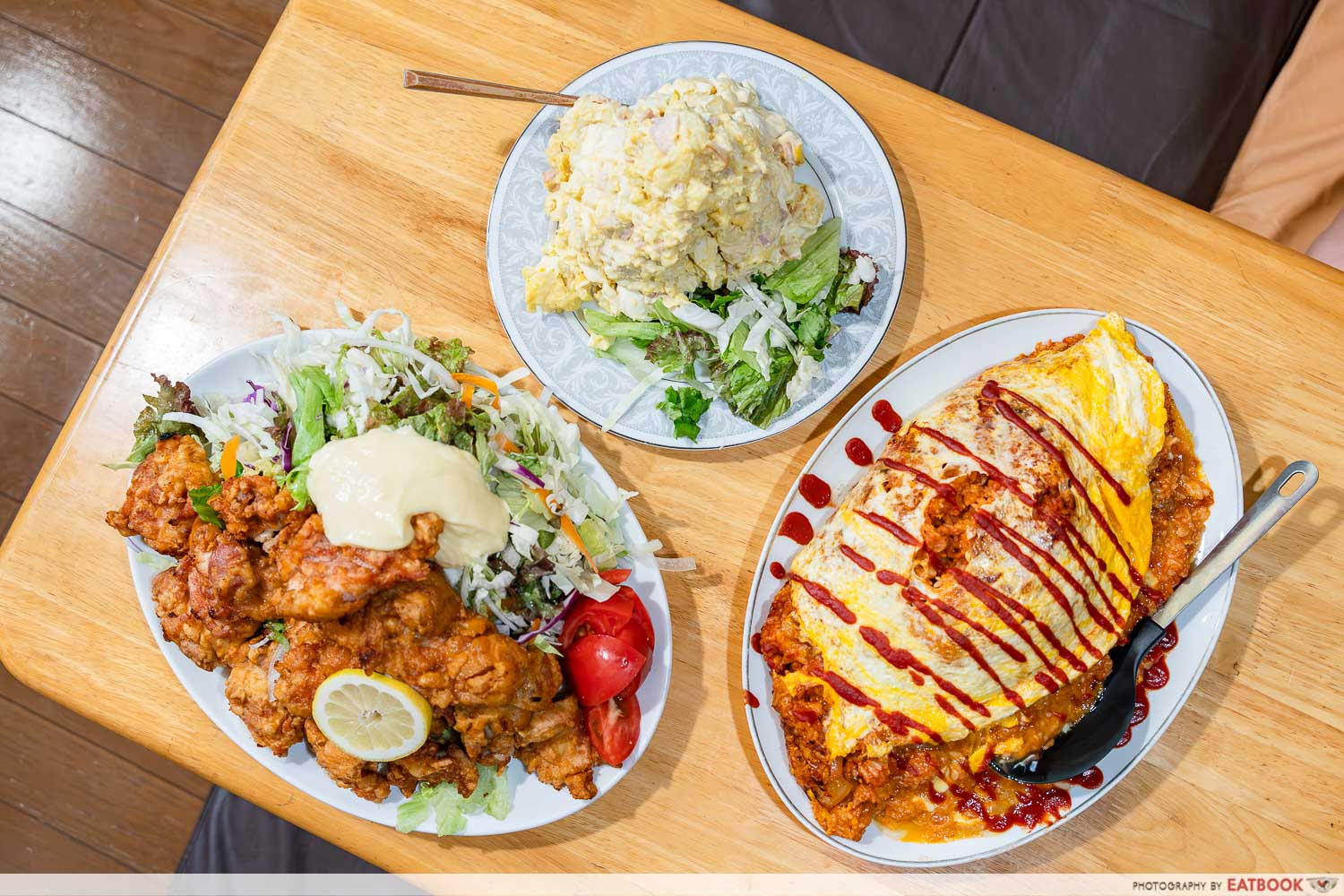
One of the most worth-it food spots we found on our Tokyo trip was Come On Izakaya, a literal gem that’s a little out of the way, but truly wow.
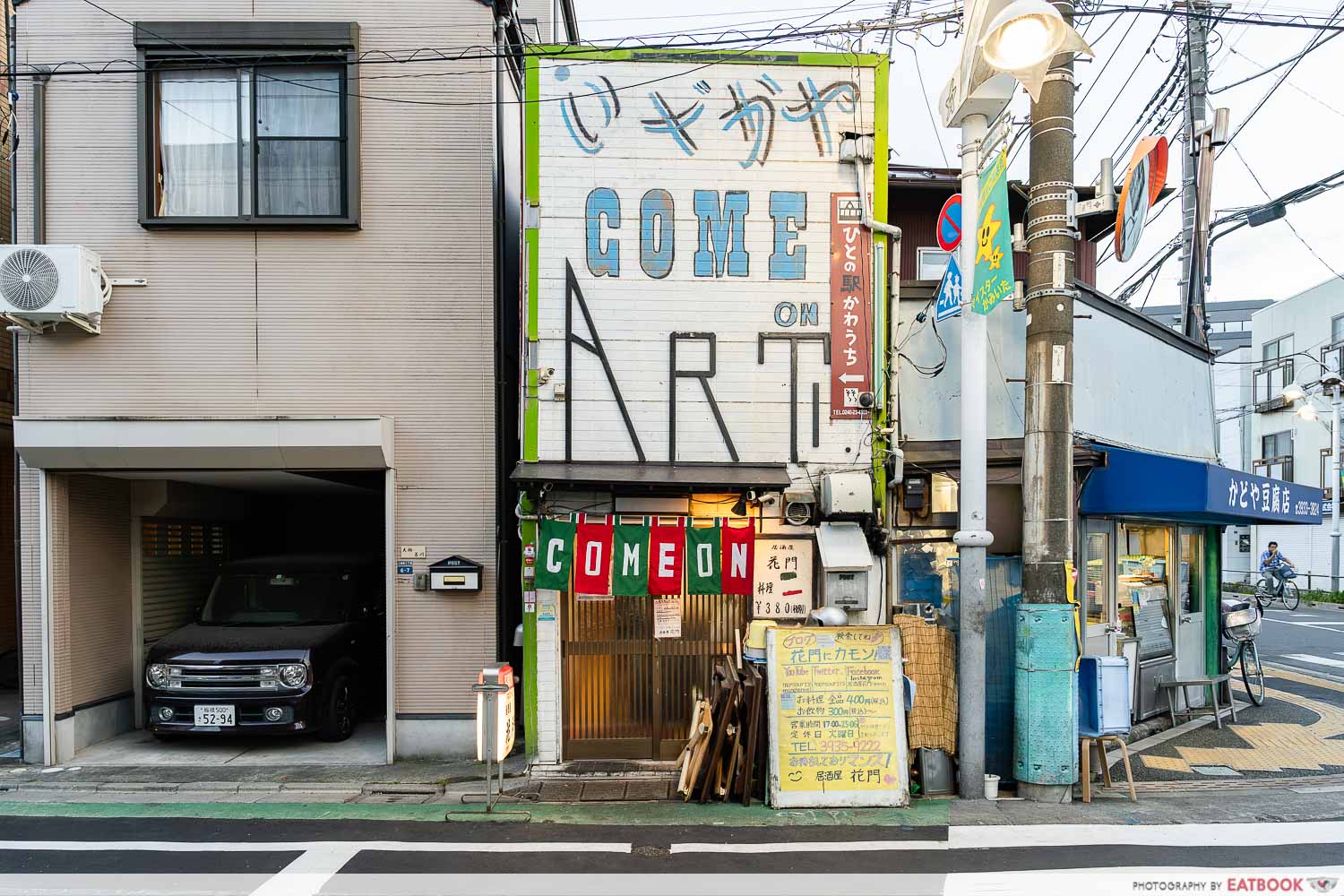
The izakaya is run by an uber-friendly, bubbly Iranian who took over from the original owner some 30 years back, after he fell in love with the spot when he was a student in the area.
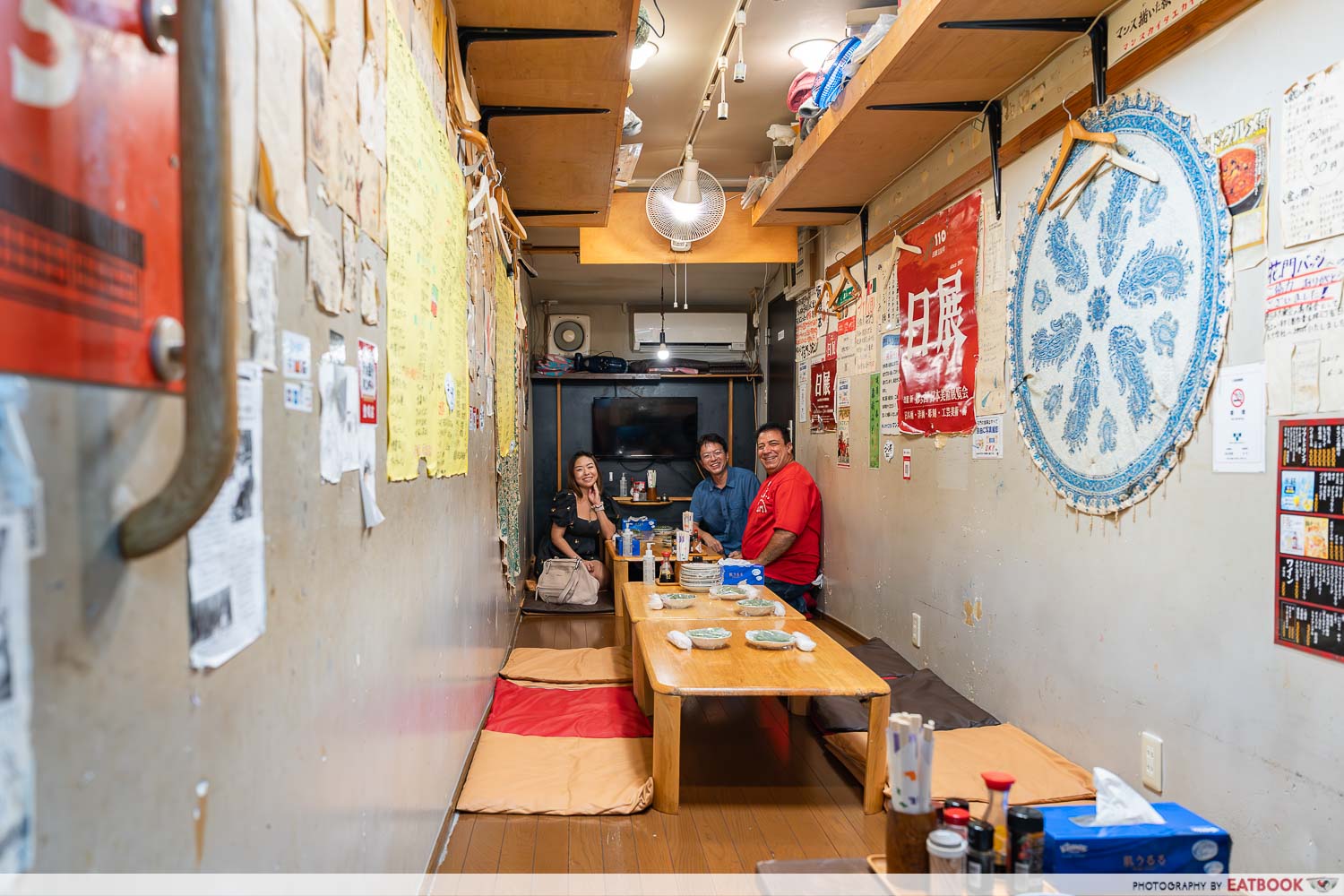
It’s a bit of a squeeze inside, with seven counter seats and about 20 in the narrow tatami area behind.

We recommend visiting as a group, because the food here only comes in one size: XXXL. And yet, every dish is priced at just ¥400!
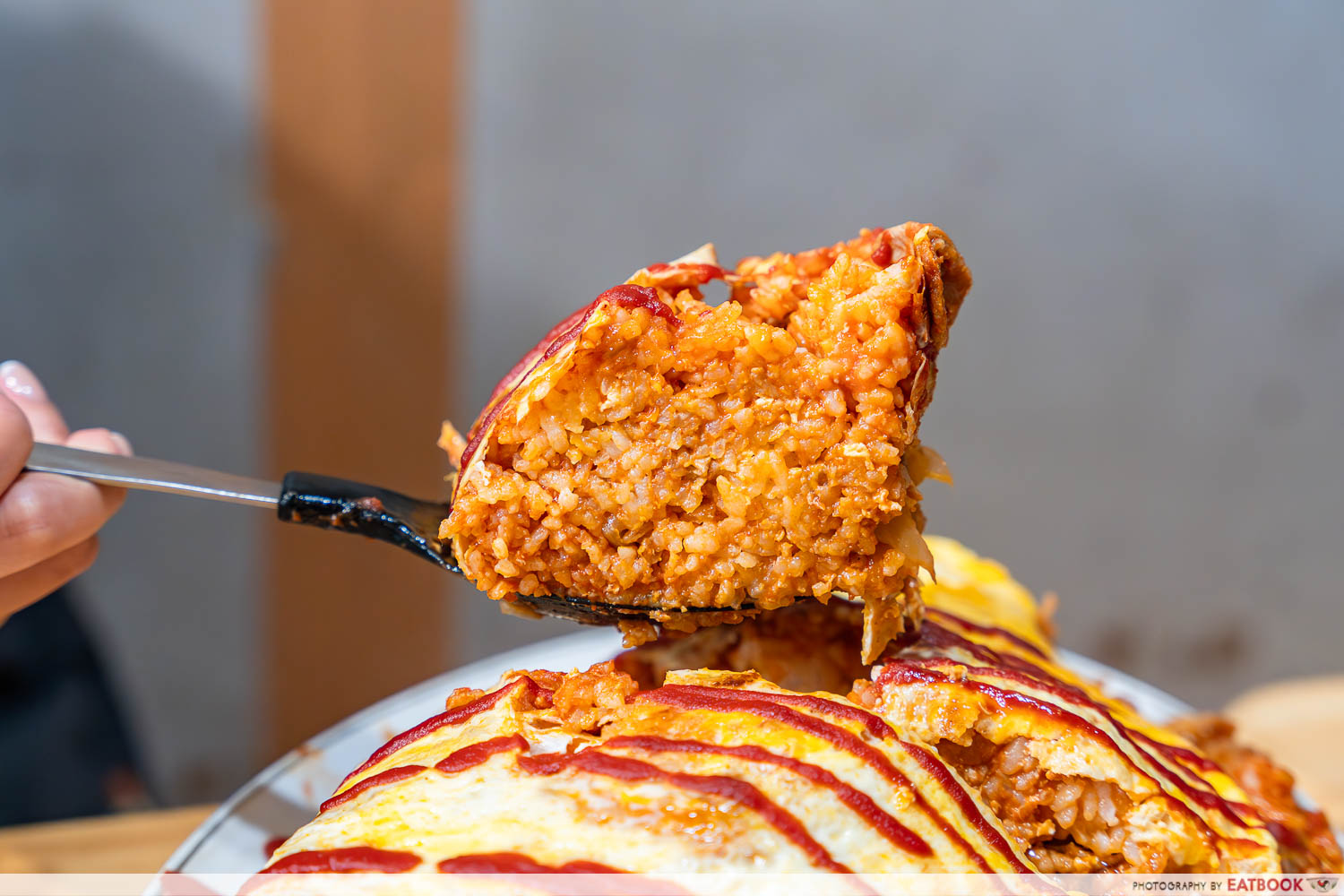
Go for the Omurice, a mountain of super tasty, tomato fried rice, draped in an enormous omelette, then drizzled with more ketchup.

The Potato Salad is another crowd-pleaser, with sizeable chunks of potato, boiled egg, and more. It looks intimidating, but tastes extra good.
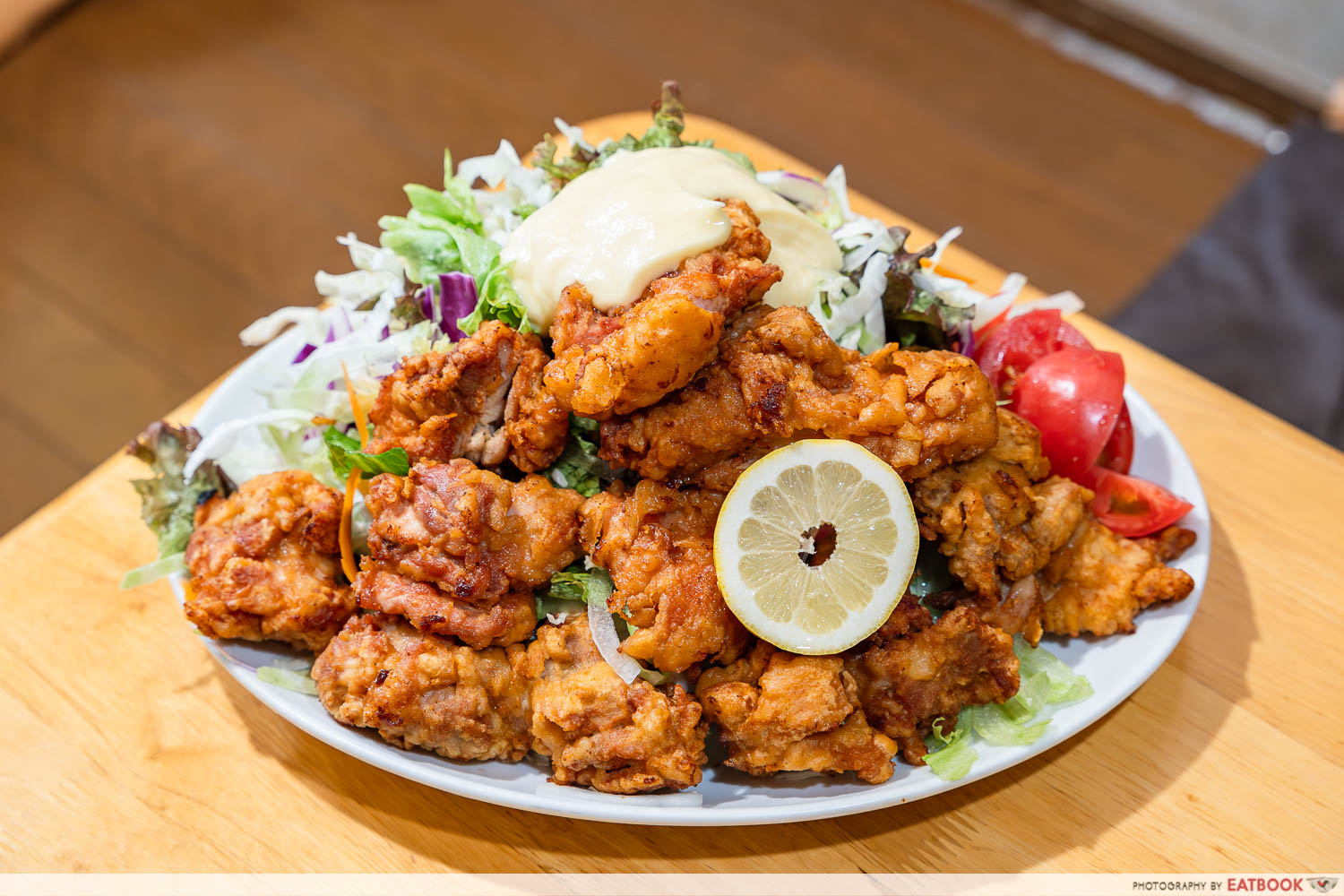
The last item we tried was Tori Karaage, which to our surprise starred house-marinated, huge chicken pieces that were oh, so tasty.
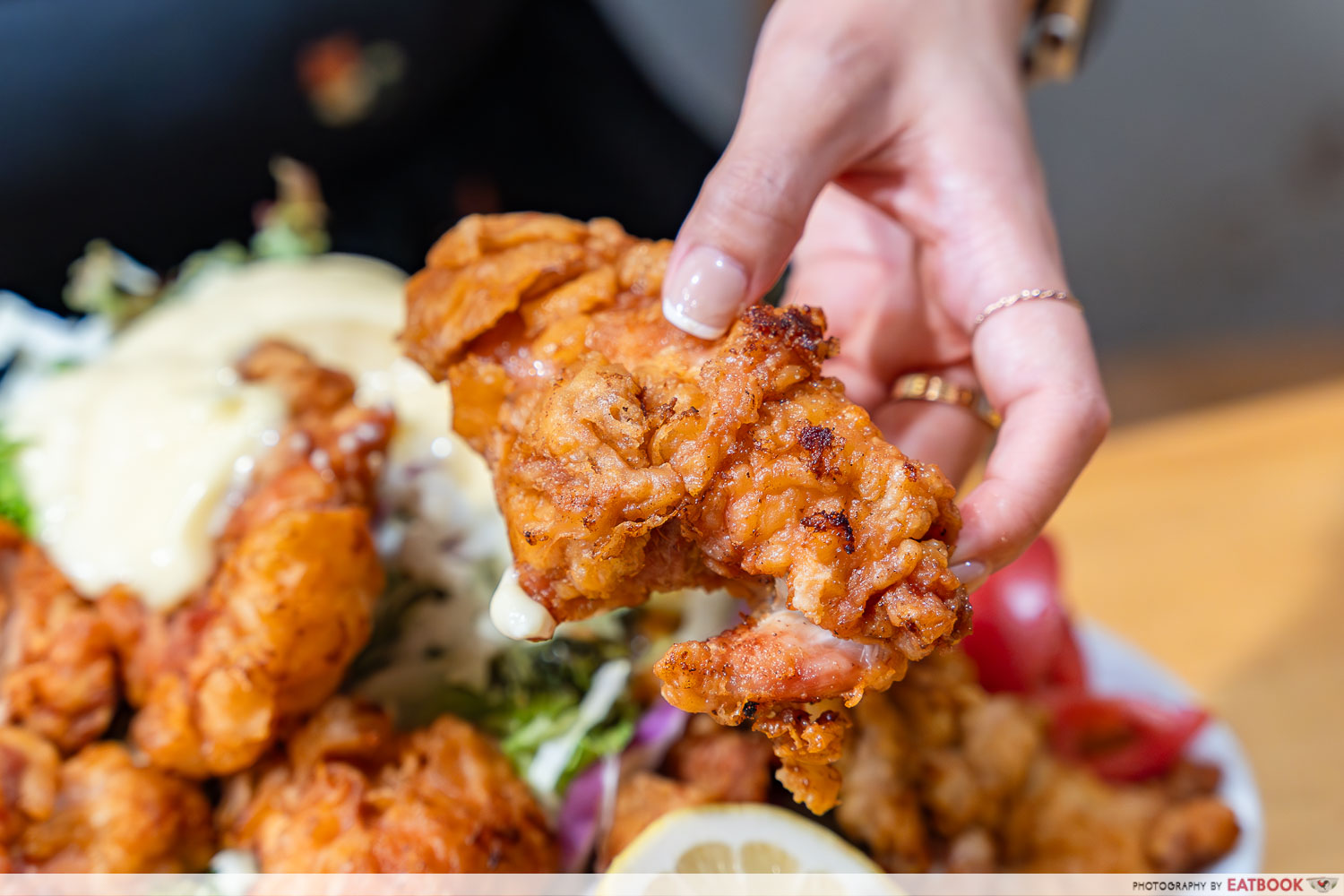
Each piece, just so you know, was hand-sized. Other mains here include Spaghetti Neopolitan, Mapo Tofu, Yakisoba and more. FYI, you’re welcome to ask for takeaway boxes if you can’t finish your food.
Address: 3 Chome-6-7 Kamiitabashi, Itabashi City, Tokyo 174-0076
Opening hours: Wed-Mon 5:30pm to 12am
Tel: +81 03-3935-9222
Website
Come On Izakaya is not a halal-certified eatery
10. Chuka Soba Ginza Hachigou
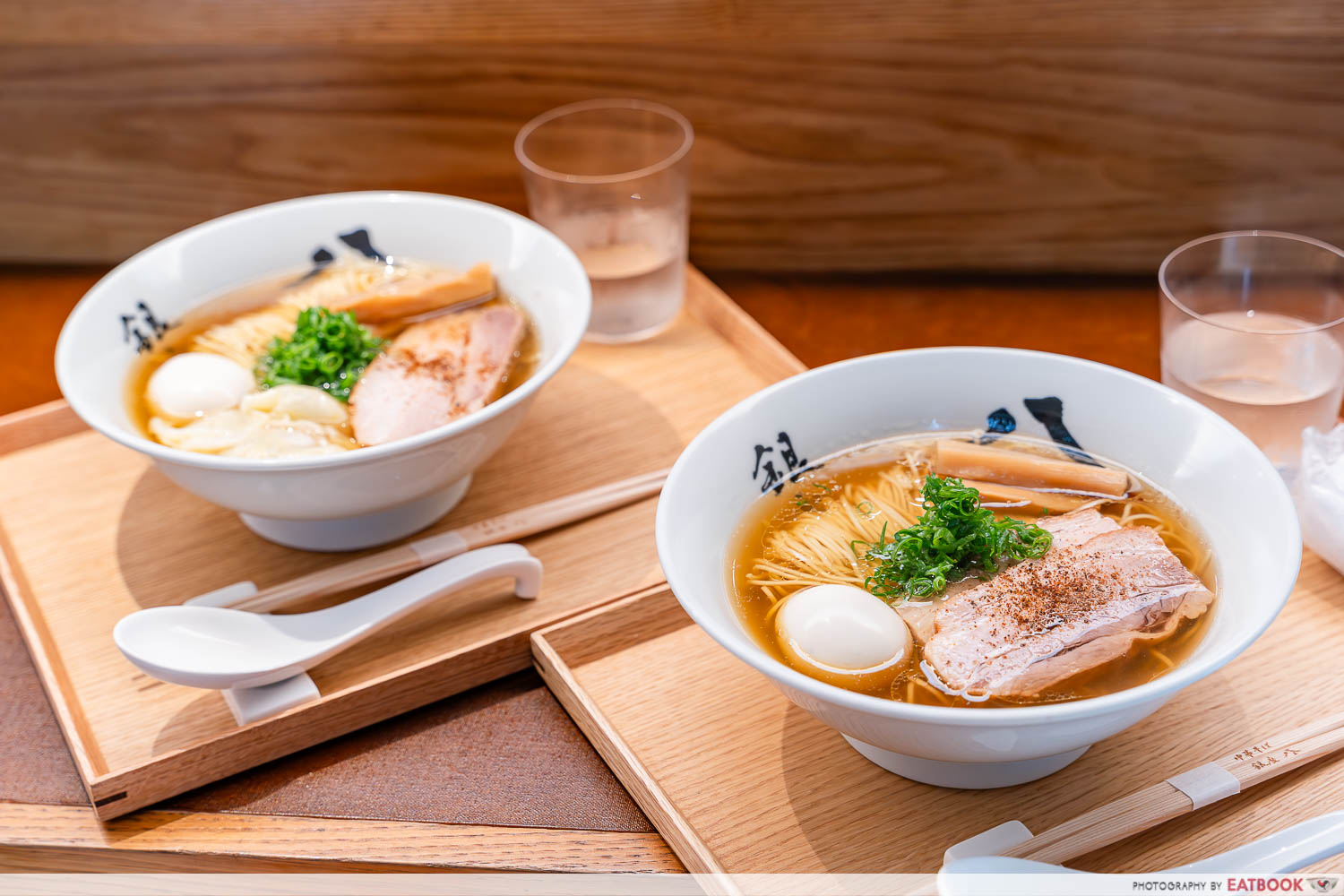
PSA: don’t head to Chuka Soba Ginza Hachigou only at 11am, as their opening hours are advertised. The queue at this one Michelin-starred ramen spot in Ginza starts before 9am, which is when they start issuing ticket numbers.
If you would rather not queue, Ginza Hachigou has introduced a new digital booking system through reservations platform TableCheck, where 30 spots are released for 12:30pm to 2:30pm, at half hourly intervals, each day of the week. These seats are open for booking at 9am the Saturday before.
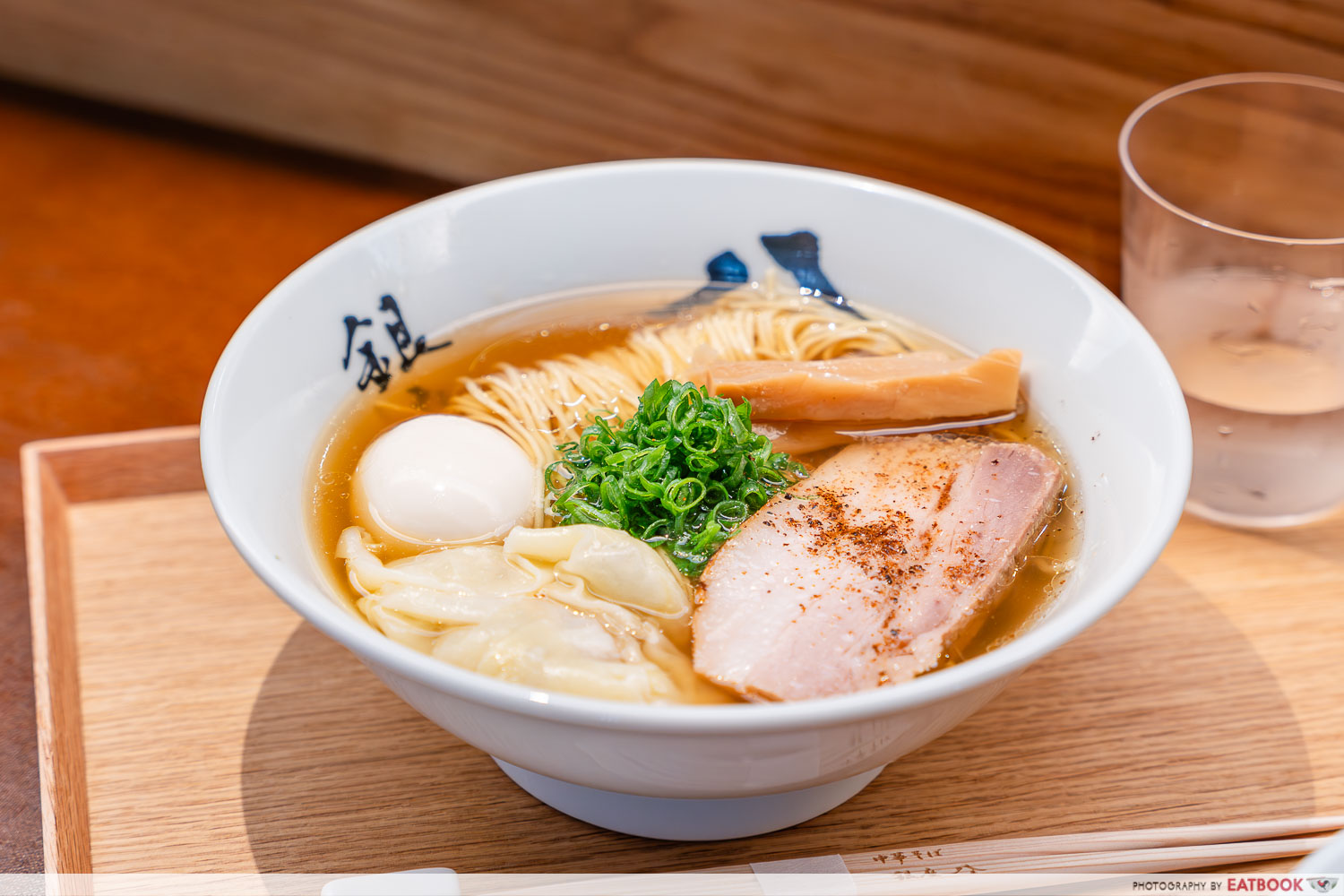
They only make something like 60 bowls of ramen for sale each day, and approximately 30 serves of their premium Ravioli Gourmandise Chuka Soba (¥2,200).
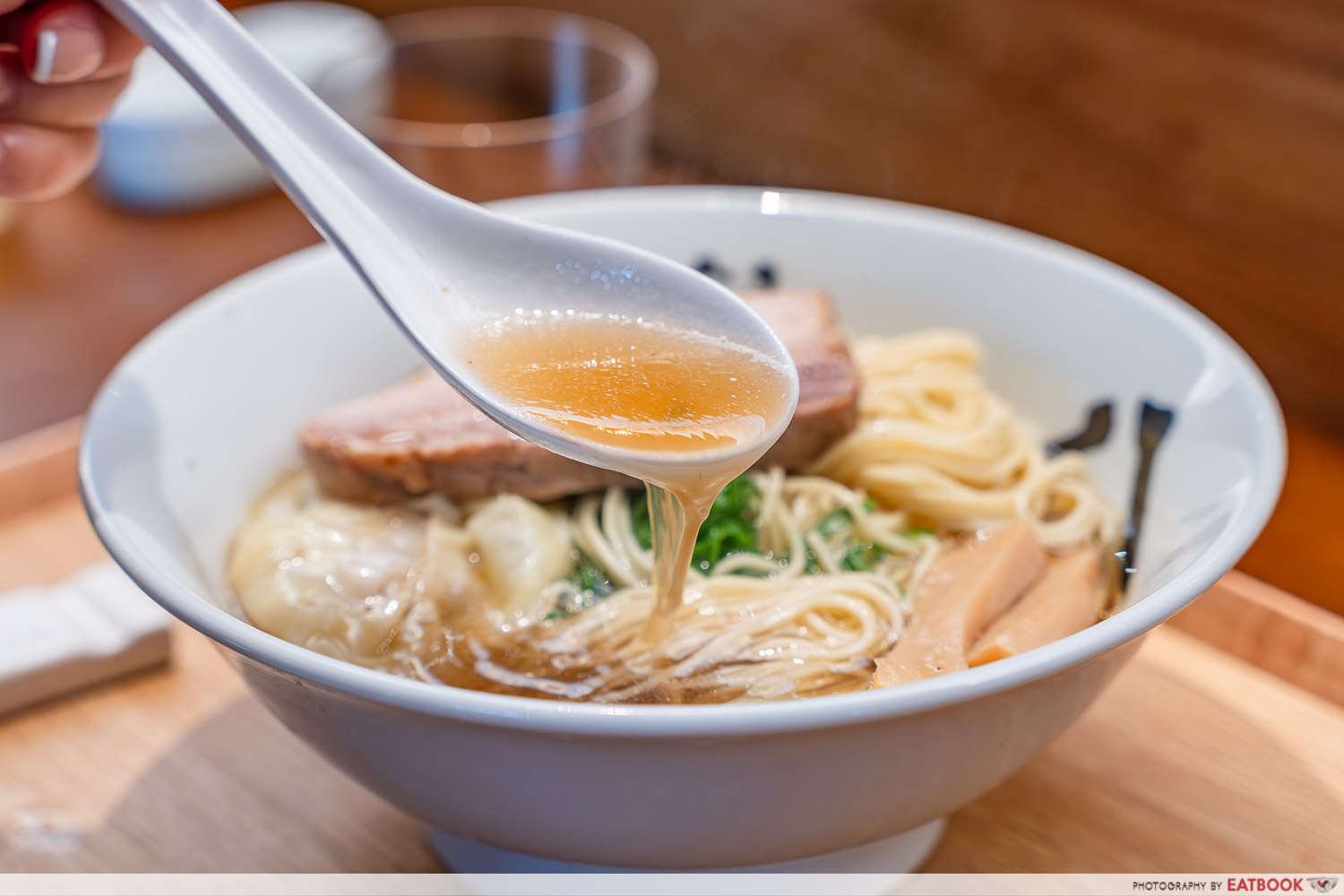
Before getting into that, it’s Chuka Soba Ginza Hachigou’s clear, consomme-like broth that’s won them such acclaim. Made with no sauce or salt, except from the salt-dried ham that goes into the soup, it’s light, yet packed with flavour from the ingredients that go into it: specially selected chicken, duck, scallops, dried shiitake mushrooms, vegetables and such.
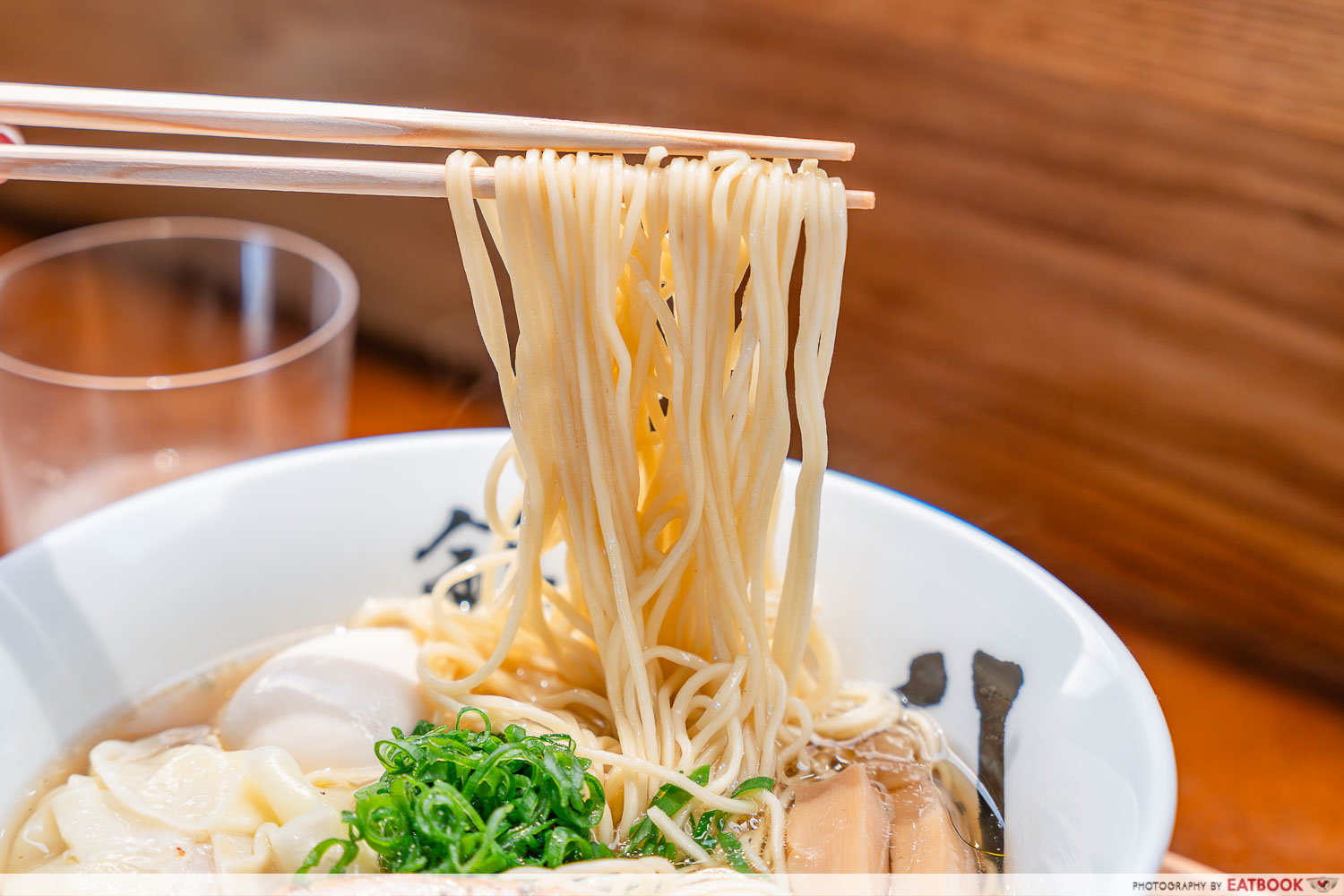
Their thin noodles are specially sourced from a noodle craftsman that’s been in business since 1950, making ramen to the exact requirements of the chef.

Fighting for the limelight in this bowl is the foie gras and truffle wonton in a silken skin. It’s worth the ¥800 top-up from the Ajitama Chuka Soba (¥1,400), which is your basic Chuka Soba (¥1,200) with an additional seasoned egg.
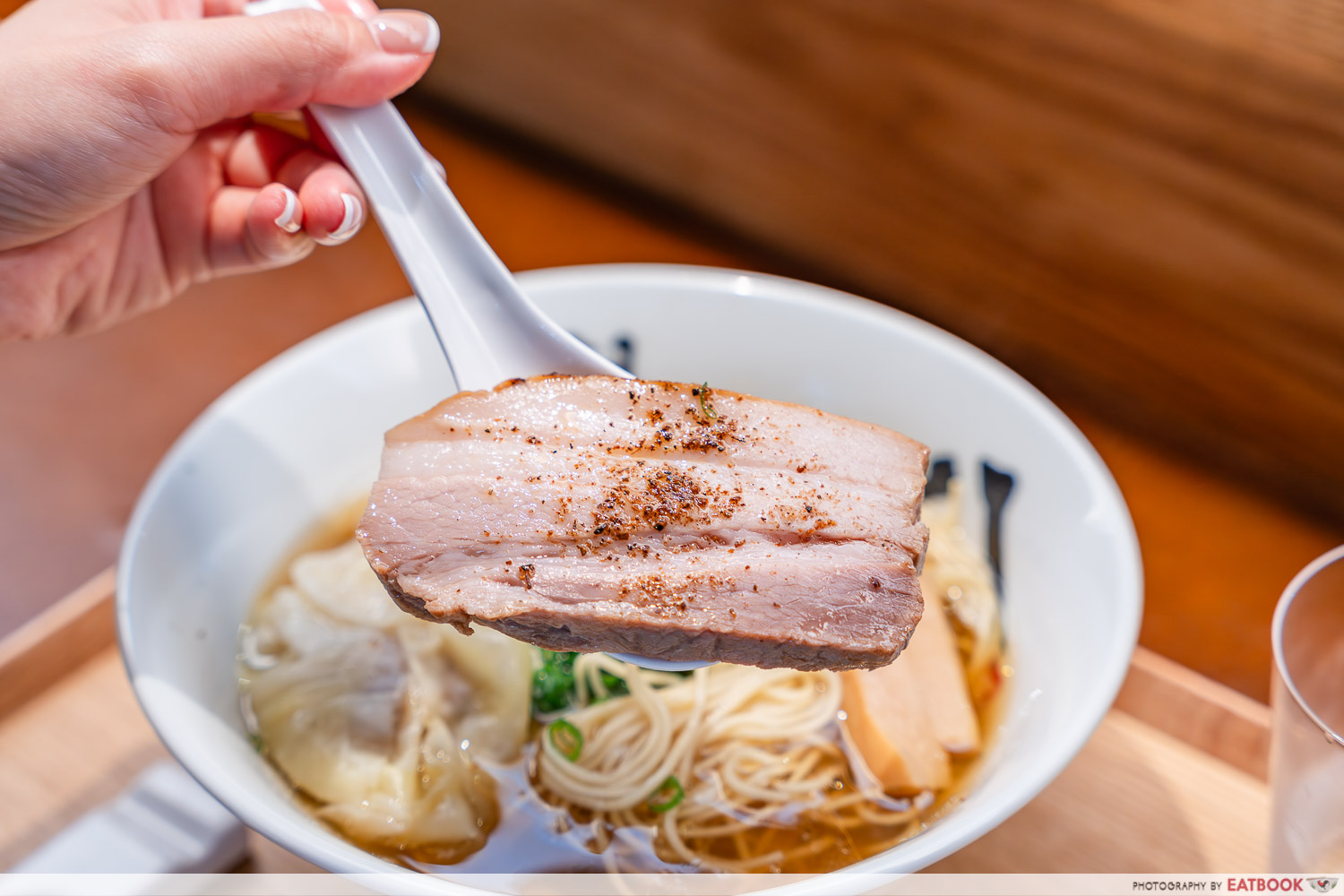
The braised pork belly chashu here was also outstanding, for the way it was meltingly tender, and came in wonderfully thick slices.
Do note that there are only six seats in the shop, which is one of only three Michelin-starred ramen establishments in the city. They’re not always open on Tuesdays, so check their social media pages for more information!
Address: 3 Chome−14−2, Ginza, Chuo City, Tokyo 104-0061
Opening hours: Wed-Sun 11am to 4pm
Chuka Soba Ginza Hachigou is not a halal-certified eatery
11. Tonkatsu Marushichi

Tucked away in a back alley, a short walk away from Monzen-Nakocho Station is Tonkatsu Marushichi, which despite its location, still draws hoards of diners. The draw: XXL katsudon, AKA breaded pork cutlets served on scrambled eggs and rice.

There are three options on the concise menu: Regular (¥1,500), Deluxe (¥2,200), and Super Deluxe (¥2,800). Weight-wise, these are 150g and 300g cutlets, though the Super Deluxe is a ribeye roll, layered with fat, as compared to the Deluxe and Regular, which feature the less fatty pork loin cut.
If you’re looking for the ultra-thick cutlet that you see on IG, it’s the Deluxe, which comes in a thick cut, as compared to the longer, thinner-sliced Super Deluxe cutlet.
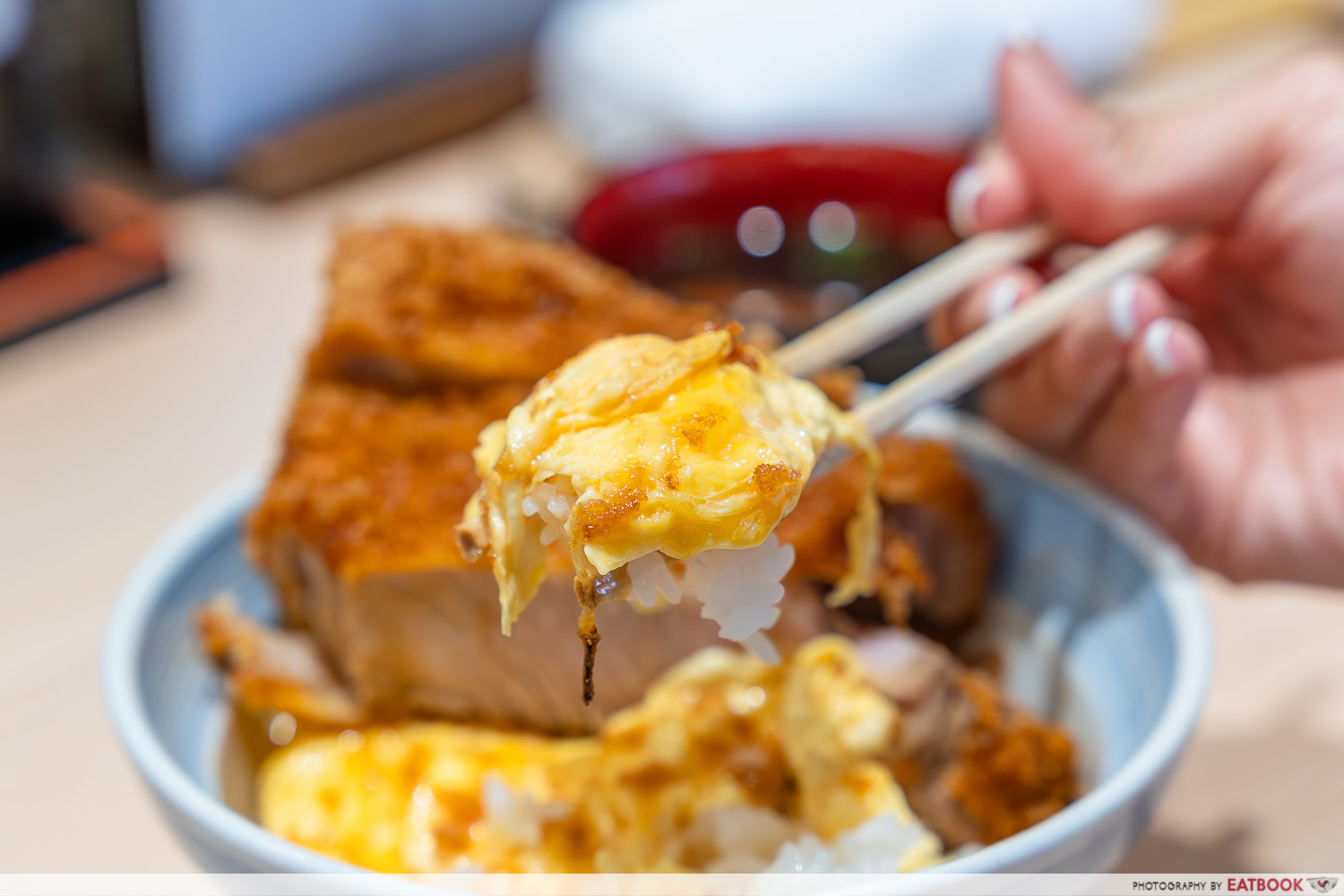
Besides having the option to request for less or more rice, you can also let them know how done you’d like your egg, which went supremely well with the lashings of savoury gravy drizzled atop.

Just in case things get a little too jelak, they’ve also got wasabi, shichimi, AKA seven-spice powder, yuzu-kosho, as well as sulfur salt, so you can switch up the flavours as you eat.
Address: 1 Chome−14−14, Tomioka, Koto City, Tokyo 135-0047
Opening hours: Daily 11:30am to 4:30pm
Tel: +81 3-5621-9966
Website
Tonkatsu Marushichi is not a halal-certified eatery
12. Yanagiya Taiyaki
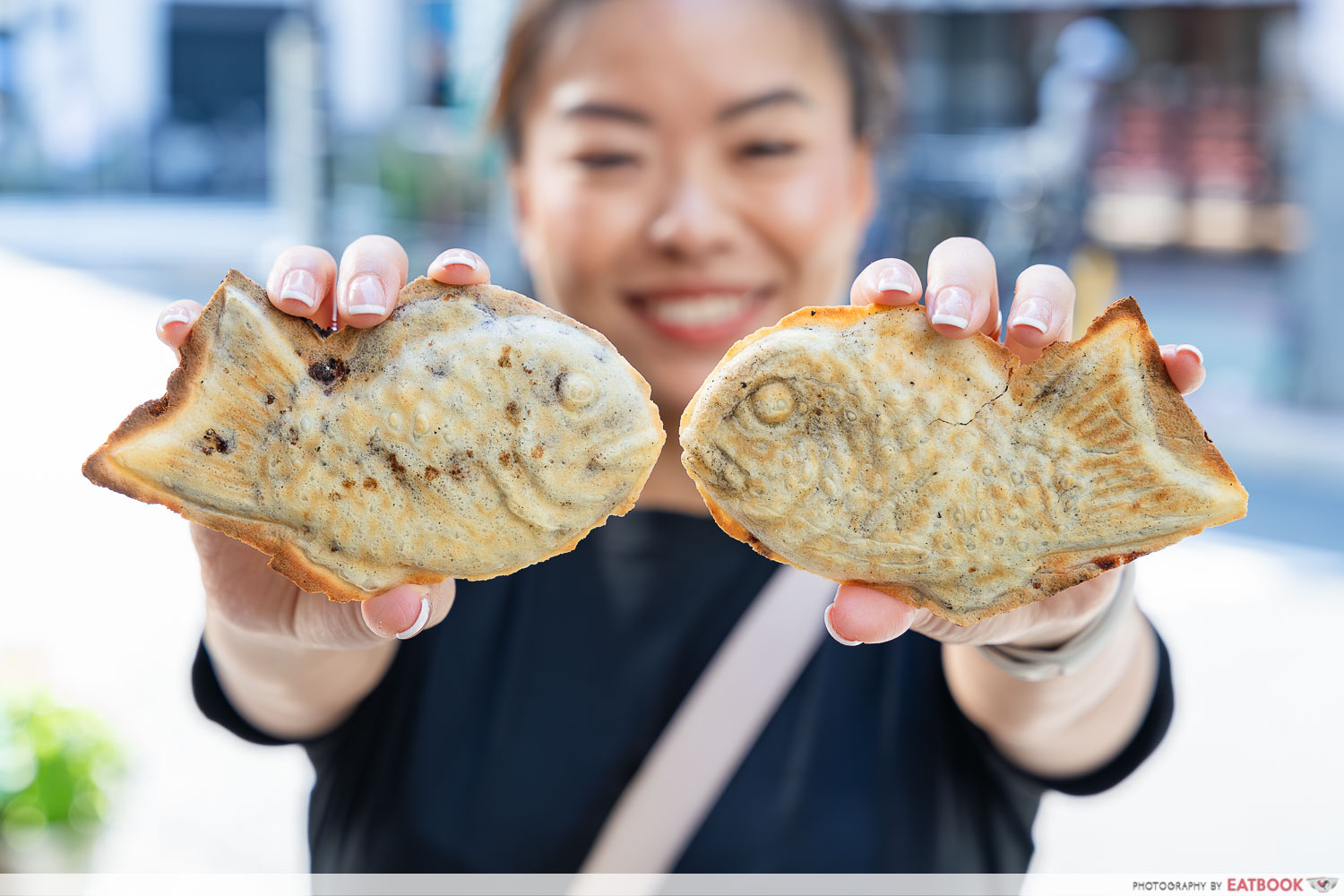
Said to be one of the best 鯛焼き (taiyaki) shops in Tokyo, Yanagiya Taiyaki has been around since 1916, making them more than 100 years old!

The recipe has remained unchanged in the 107 years they’ve been around, and to this day, the sea bream-shaped, azuki-filled waffles are still baked in the OG cast iron moulds, over an open fire.
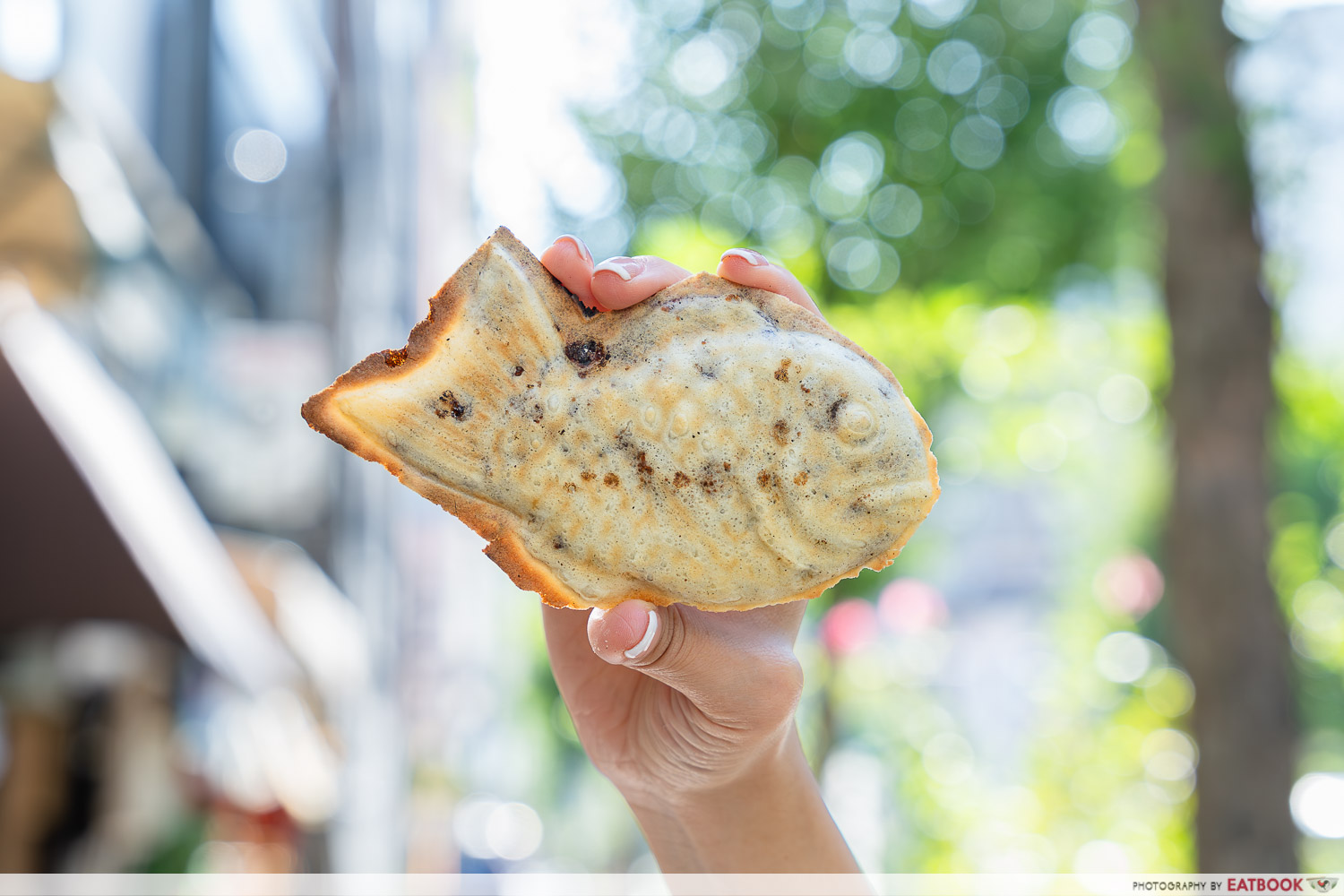
Each Taiyaki here is priced at a very wallet-friendly ¥200, and is stuffed to bursting with red bean paste that’s prepared on the premises with Hokkaido red beans that go through an hours-long process of soaking and boiling.
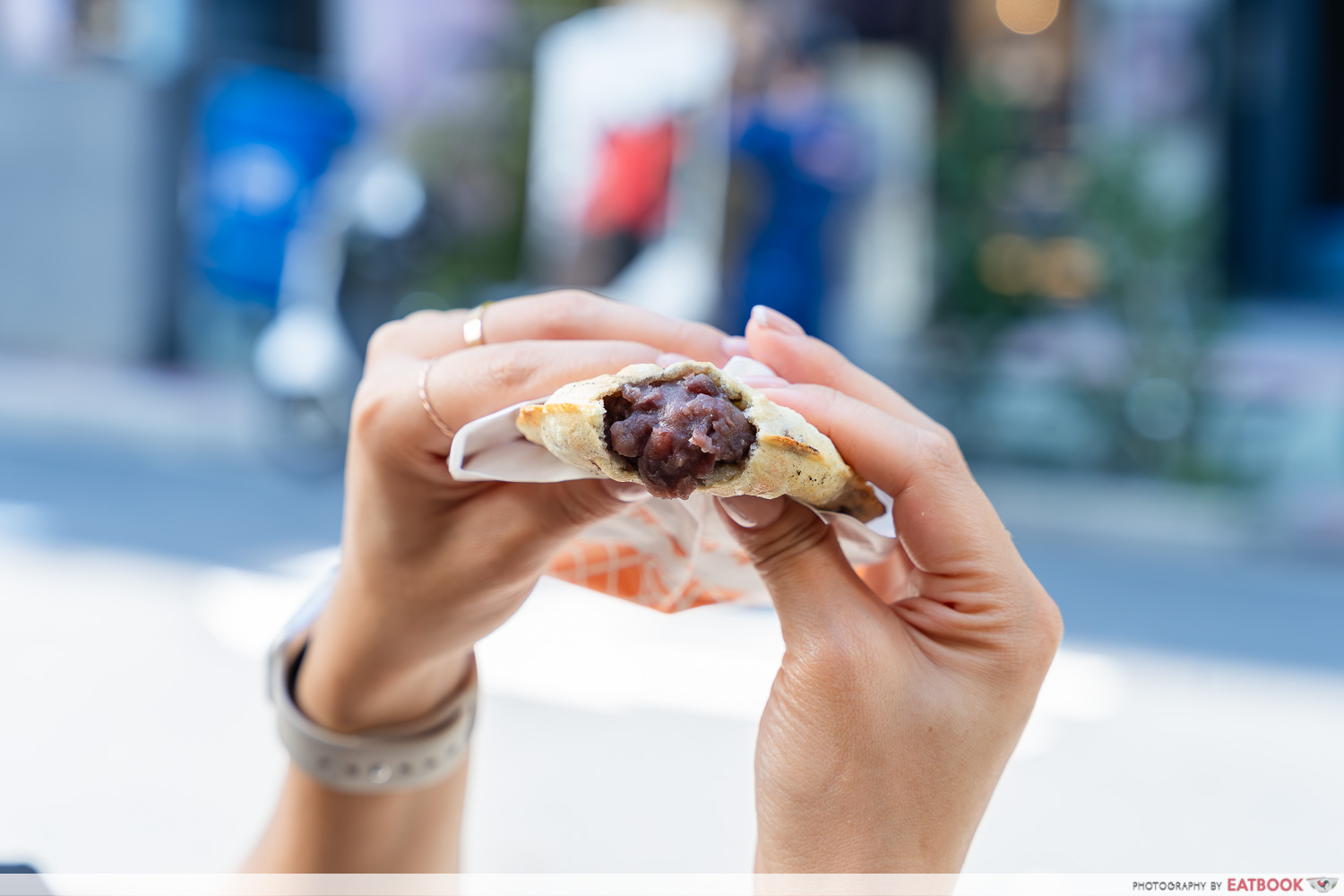
Subtly sweet, they complement the thin, light batter━also made behind the shop. Thanks to the open fire grill, you’ll find these have a smoky, slightly charred note.
Address: 2 Chome-11-3, Nihonbashiningyocho, Chuo City, Tokyo 103-0013
Opening hours: Tue-Sat 12:30pm to 6pm
Tel: +81 3-3666-9901
Yanagiya Taiyaki is not a halal-certified eatery
13. Ginza Kimuraya
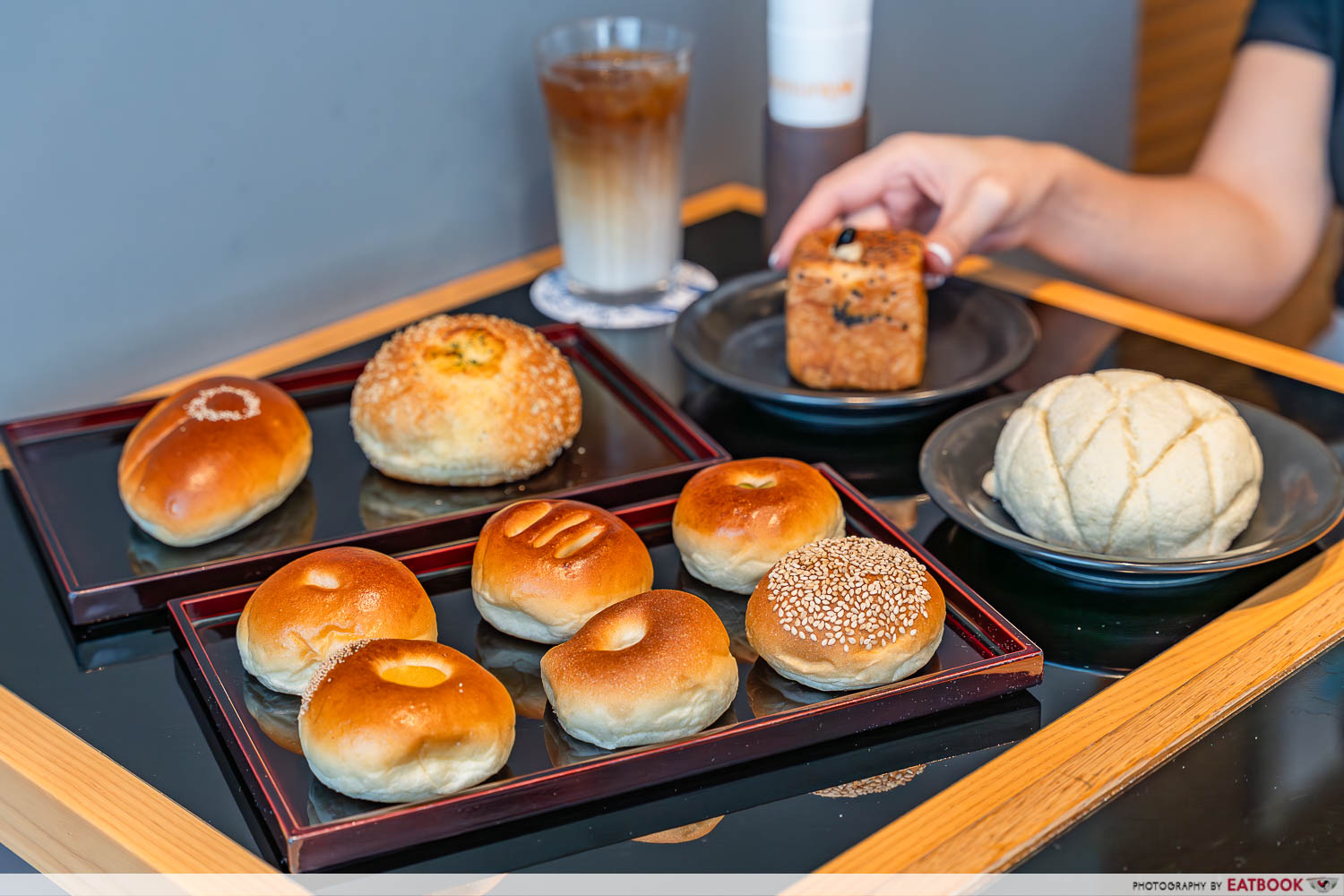
Another super old-school foodie spot to head to when you’re in Tokyo is Ginza Kimuraya, AKA the oldest, if not one of the oldest, bakeries in Japan. They’ve been around since 1874 in this very spot, and can be found right on the main Ginza thoroughfare, occupying four floors of the same building.
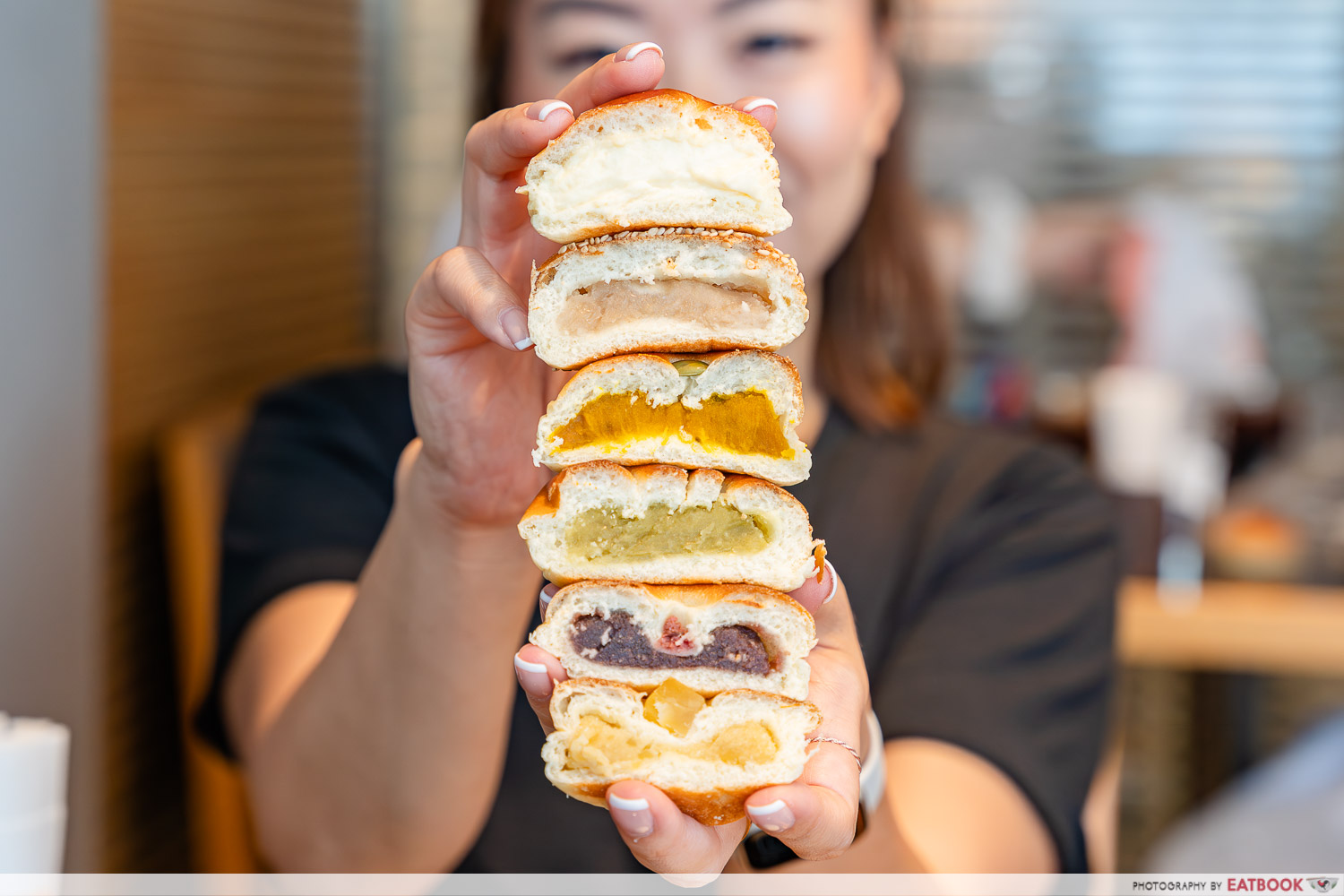
The first thing you’ll spy when you enter the ground-floor shop is the glass-topped wooden boxes of anpan, which they invented back in the day. To be more specific, it was an ex-samurai named Yasubei Kimura who figured out how to bake bread with sakadane, a liquid yeast, changing the landscape of bread in Japan.

He then stuffed these fluffy buns with bean paste and sold them as snacks, which the emperor fell in love with and regularly commissioned from Kimura. Today, you’ll find more than 10 different varieties of anpan at Ginza Kimuraya, stuffed with chestnut, sakura paste, cream cheese, pumpkin, and so on, priced from ¥240 each.
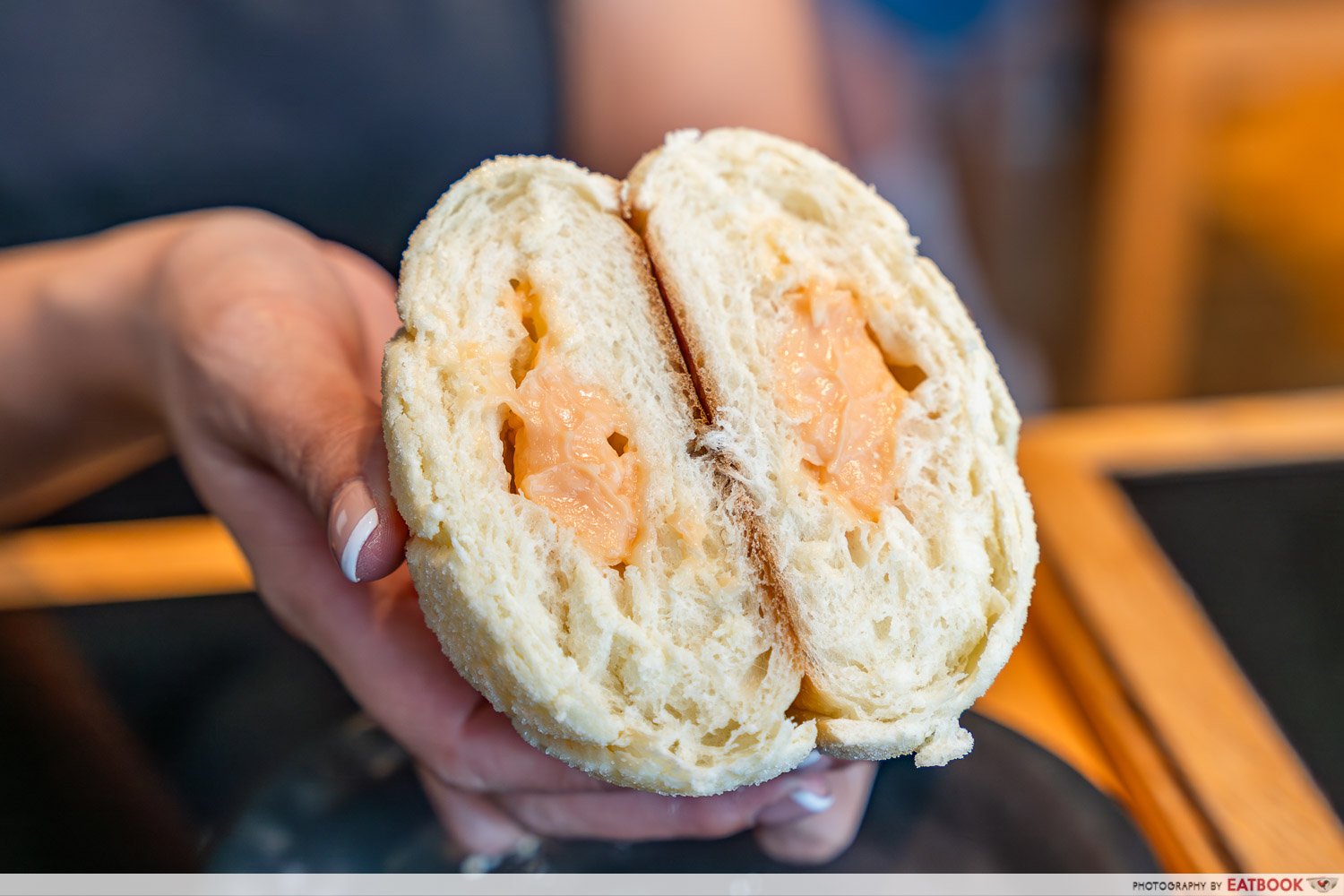
Other than these, the bakery has loads of other bakes on offer, including the famous Japanese sweet bun, Melon Pan (from ¥280), which you can choose to have filled with melon-flavoured cream, or without.

One of their more popular buns is Half Boiled Egg Curry (¥300), where a soft-yolked egg is baked into a カレーパン (karē pan)!
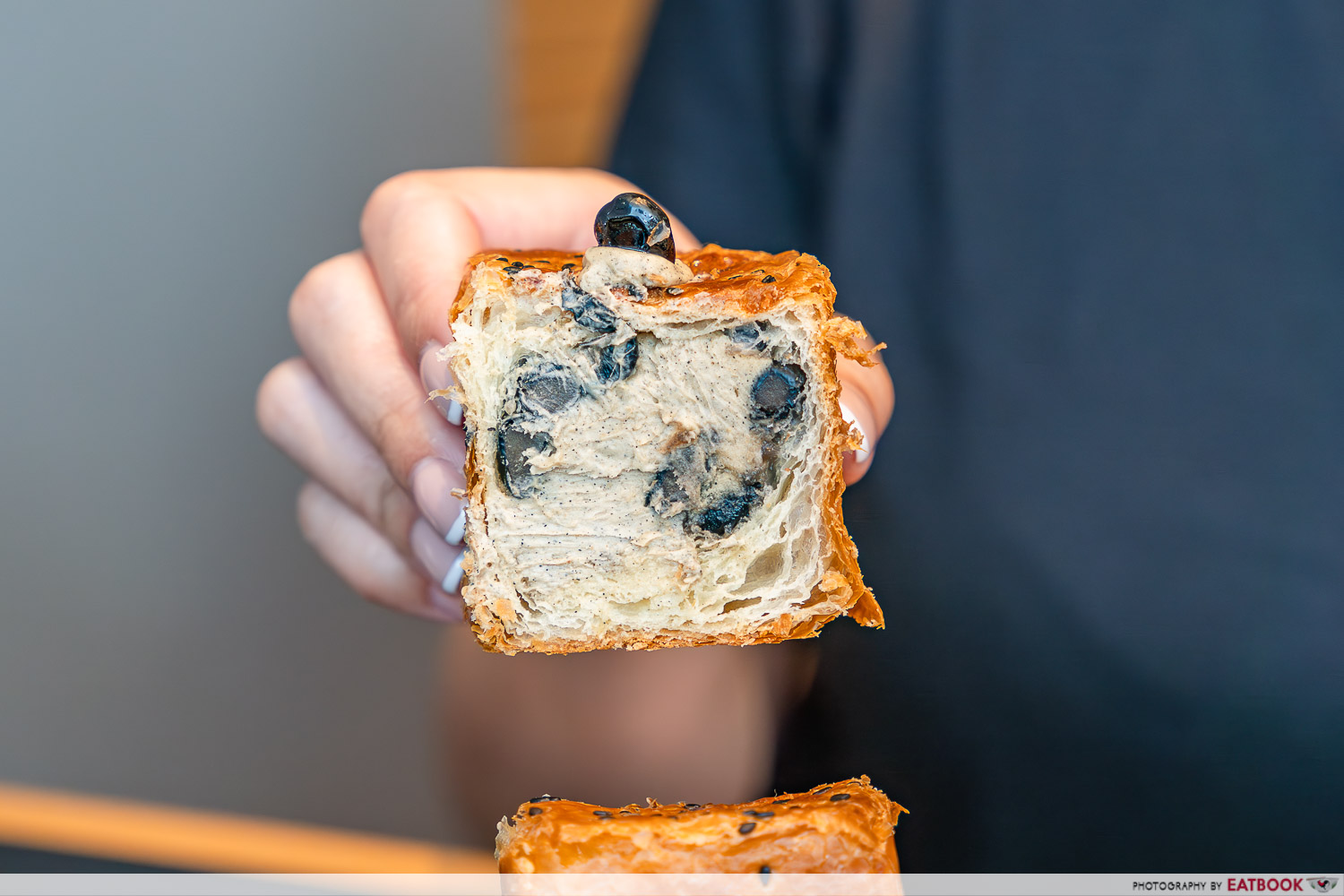
Croissant cubes have been quite the rage in Singapore, and at Ginza Kimuraya, you’ll find one loaded with Black Beans & Kinako (¥300) too.
Address: 4 Chome-5-7 Ginza, Chuo City, Tokyo 104-0061
Opening hours: Daily 10am to 8pm
Tel: +81 3-3561-0091
Website
Ginza Kimuraya is not a halal-certified eatery
14. Ginza West
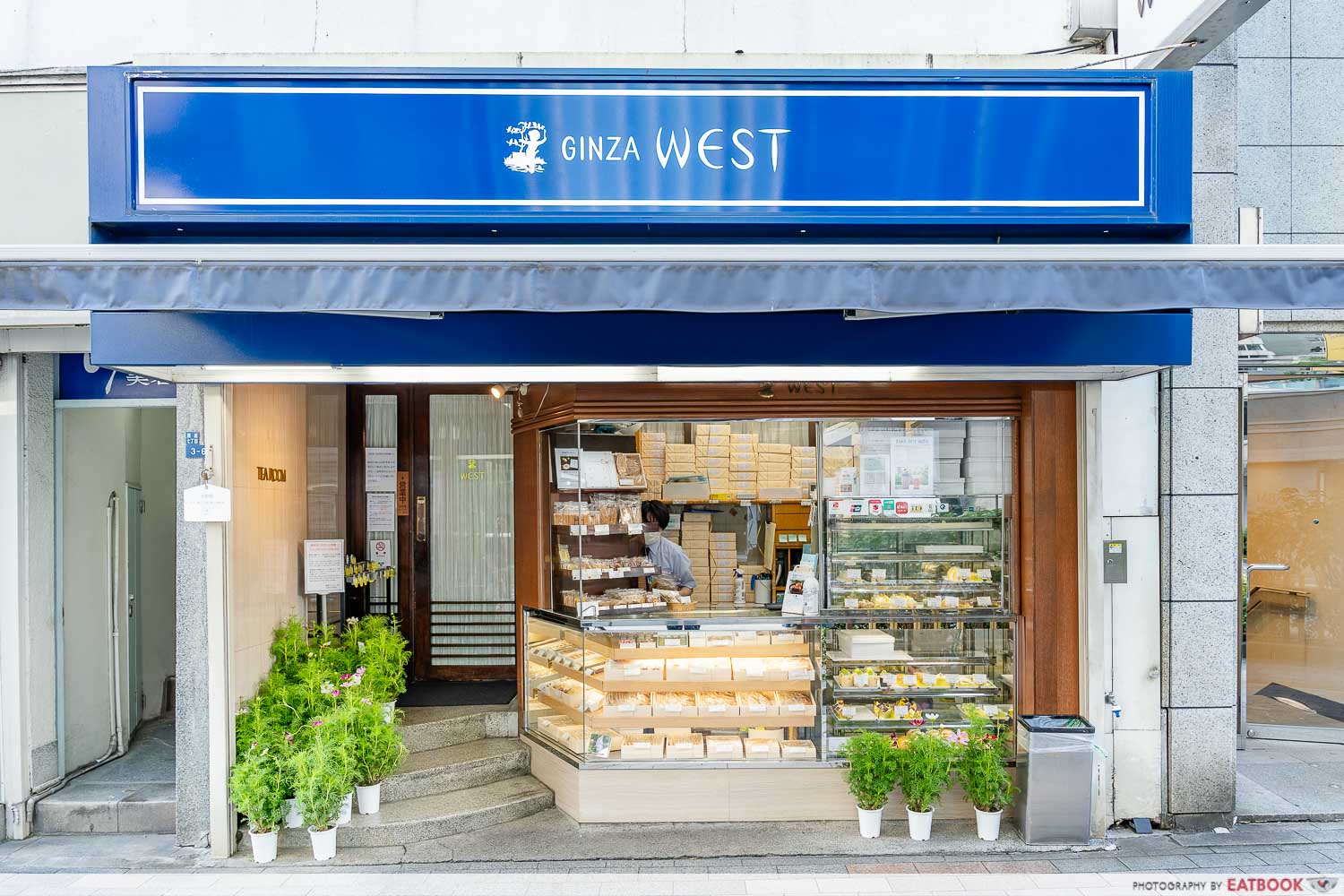
While we’re at it, step into yesteryear when you visit the Ginza West flagship store in Ginza. This tearoom has been here since they were founded in 1947, with a classic interior that’s largely remained unchanged.

The treats here are as timeless as the decor, with tea time-only items such as Puff with Custard Cream & Fresh Cream (¥495) and Mille-Feuille (¥660). If you’re looking for pancakes, they’re not available at this outlet.
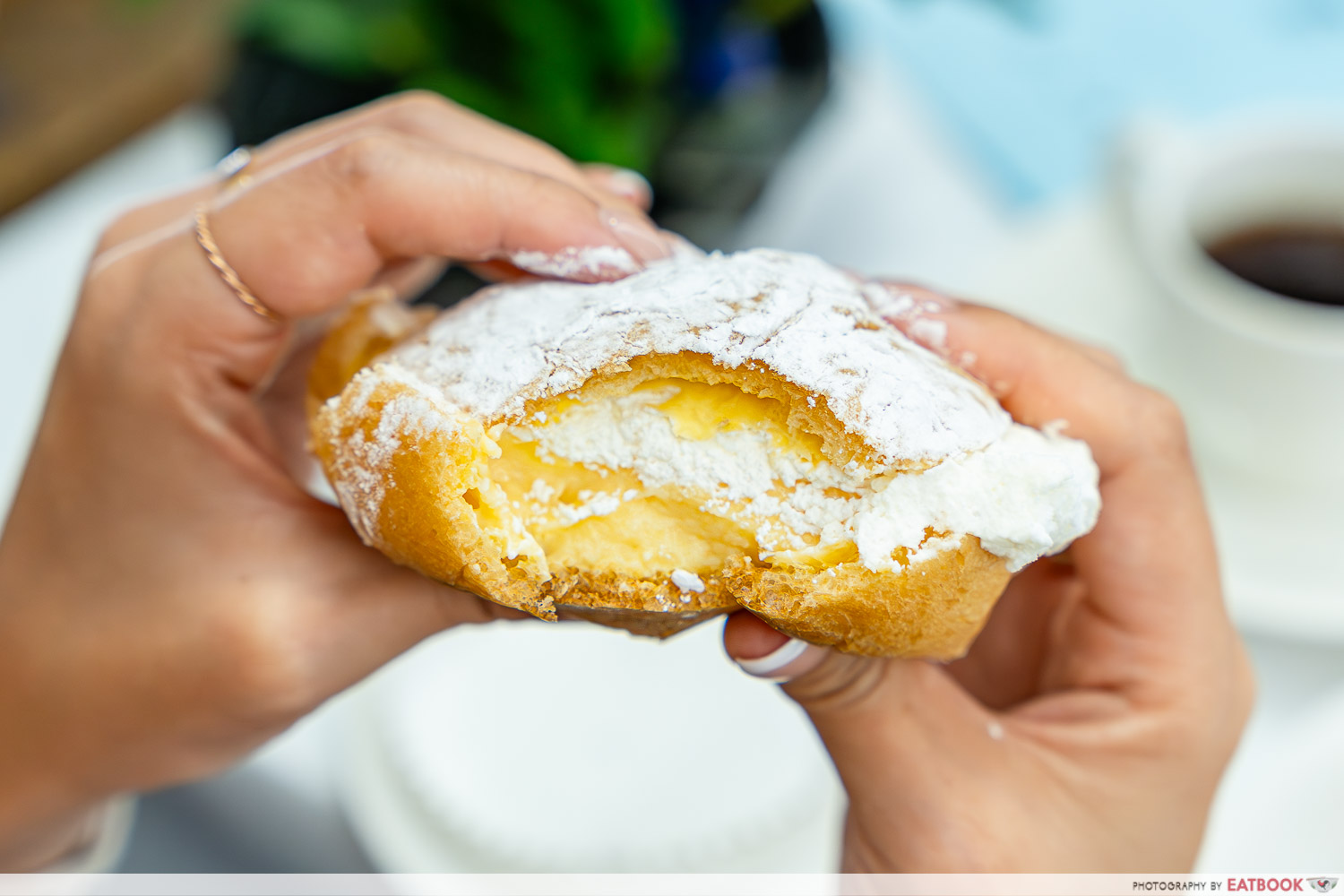
The custard puff was a real MVP, with the fresh whipped cream bringing lightness to the decadent custard. If you get this from the takeaway counter on the street, it’s only available without the cream!

Here’s a suggested game plan: have the French Toast (¥1,210) with a cuppa coffee in the tea parlour, then get the custard puff to go for later. Thoroughly custardy on the inside, with a slightly crisp, caramelised crust, we couldn’t stop eating till it was all gone.
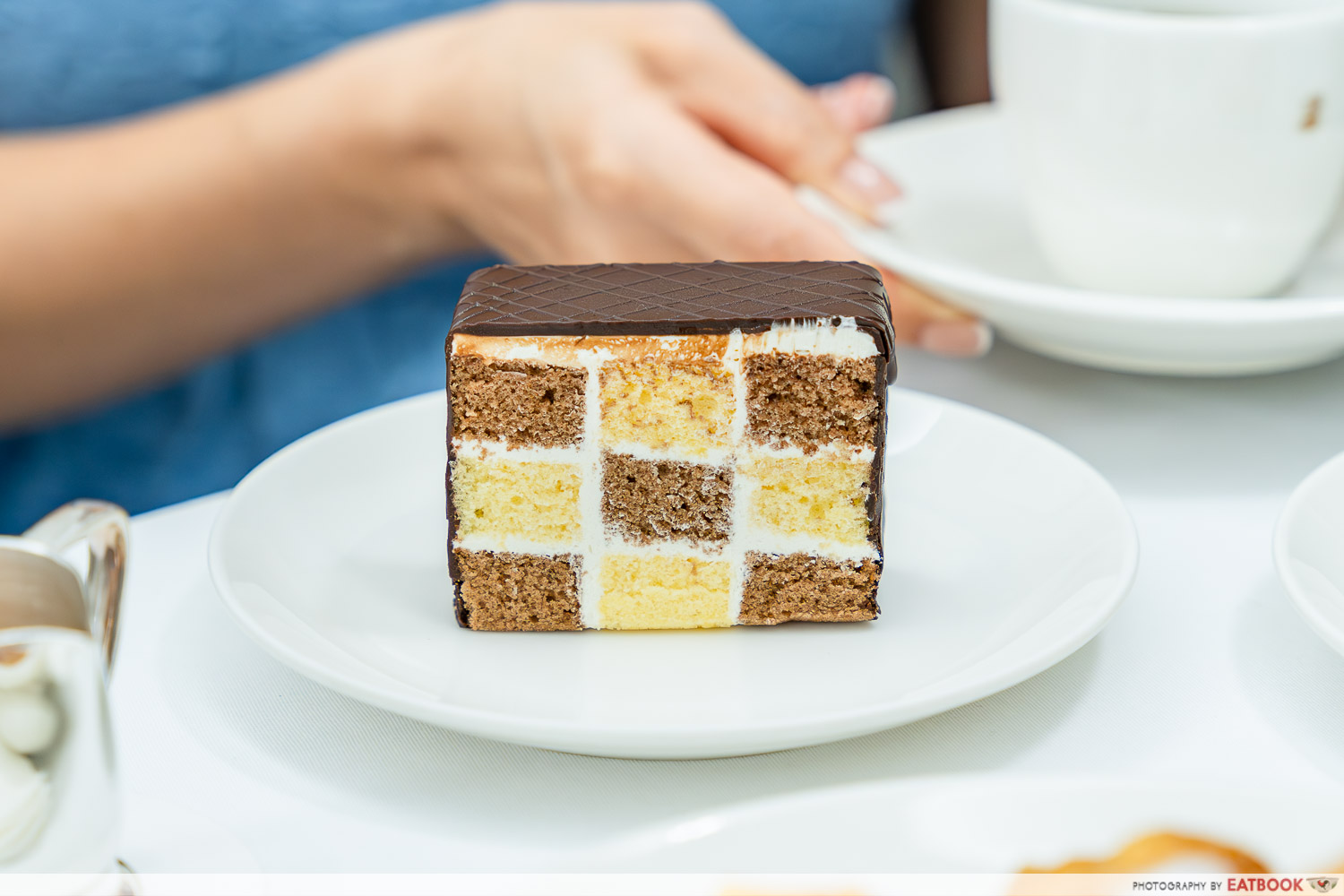
Check out the first page of the menu here for a list of drinks you can get free refills of! This includes Coffee (¥1,100), Royal Milk Tea (¥1,100), Fresh Herb Tea (¥1,100), and Homemade Ginger Ale (¥1,100). Make it a tea set for just ¥385 to also get a slice of cake!
Website | Full list of outlets
Ginza West is not a halal-certified eatery
15. Butagumi
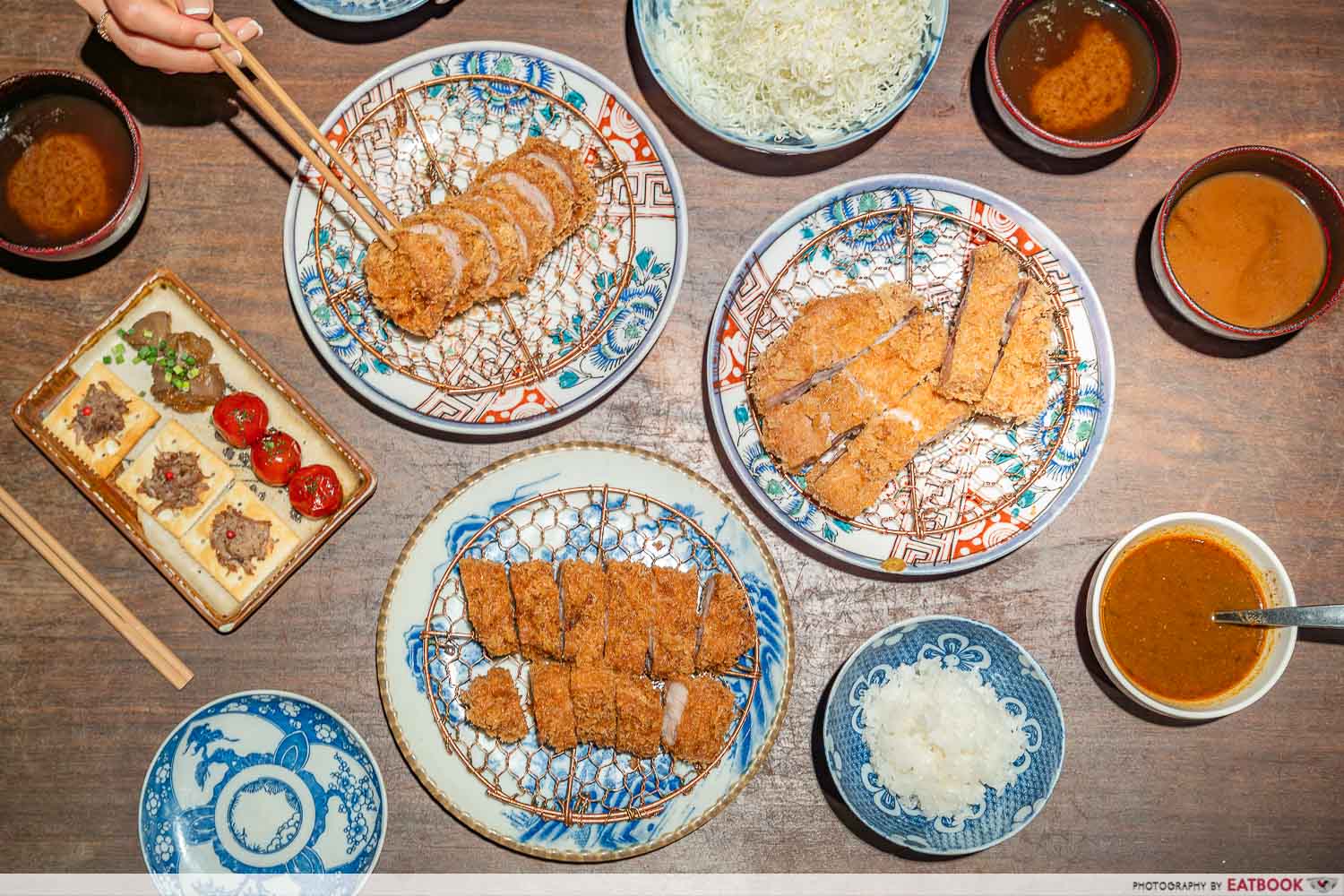
It’s quite the walk from the nearest train station, but Butagumi is worth every step. The original outlet is situated in an old wooden house, and reservations here are a must, especially at dinner. You can try to walk in for lunch, but be prepared to wait.

There’s a jaw-dropping selection of over 50 kinds of pork on the menu, though they’re not all available at the same time. Prices vary, depending on the cut and breed that you pick, and they’re fried a la minute in a blend of oil including untoasted white sesame oil.
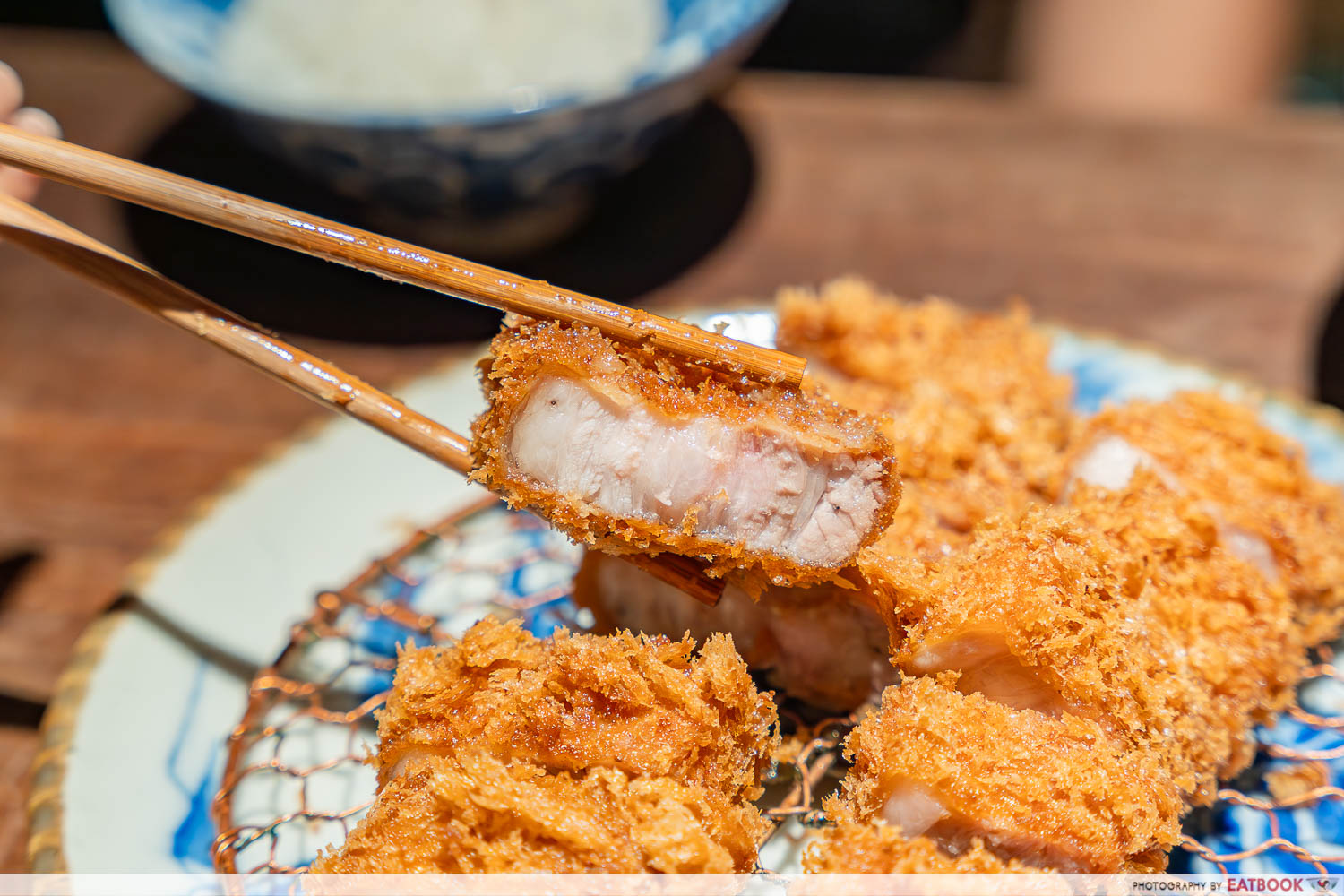
Each piece of pork is battered in breadcrumbs, or panko, and aged for four hours. This results in a batter that’s shatteringly crisp.
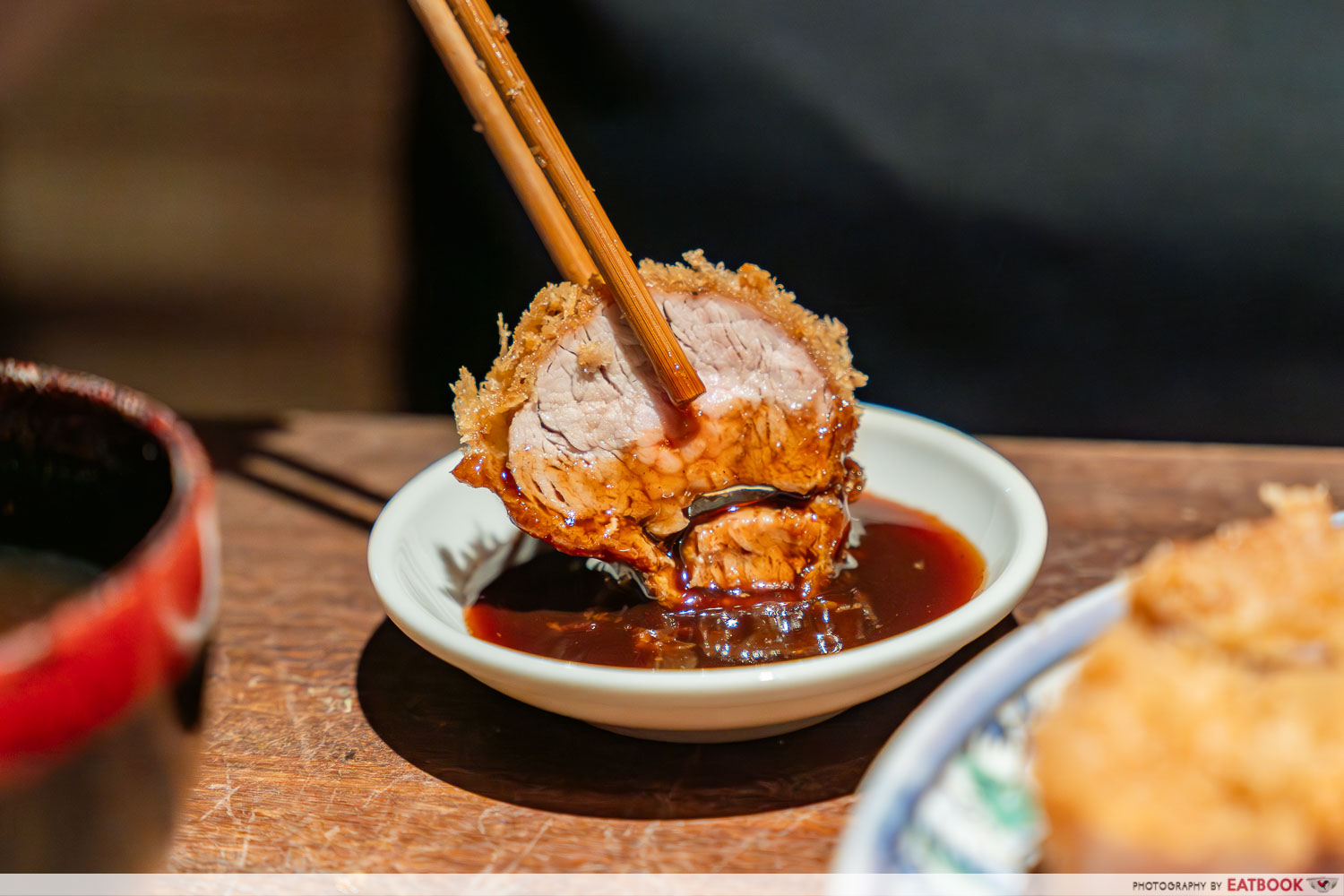
There’s a method to eating the tonkatsu at Butagumi, which is illustrated on the menu, and starts with having it as is. Then, you try it with Himalayan pink rock salt provided on the table, and then dipped into the house-made tonkatsu sauce for a touch of bright tanginess.
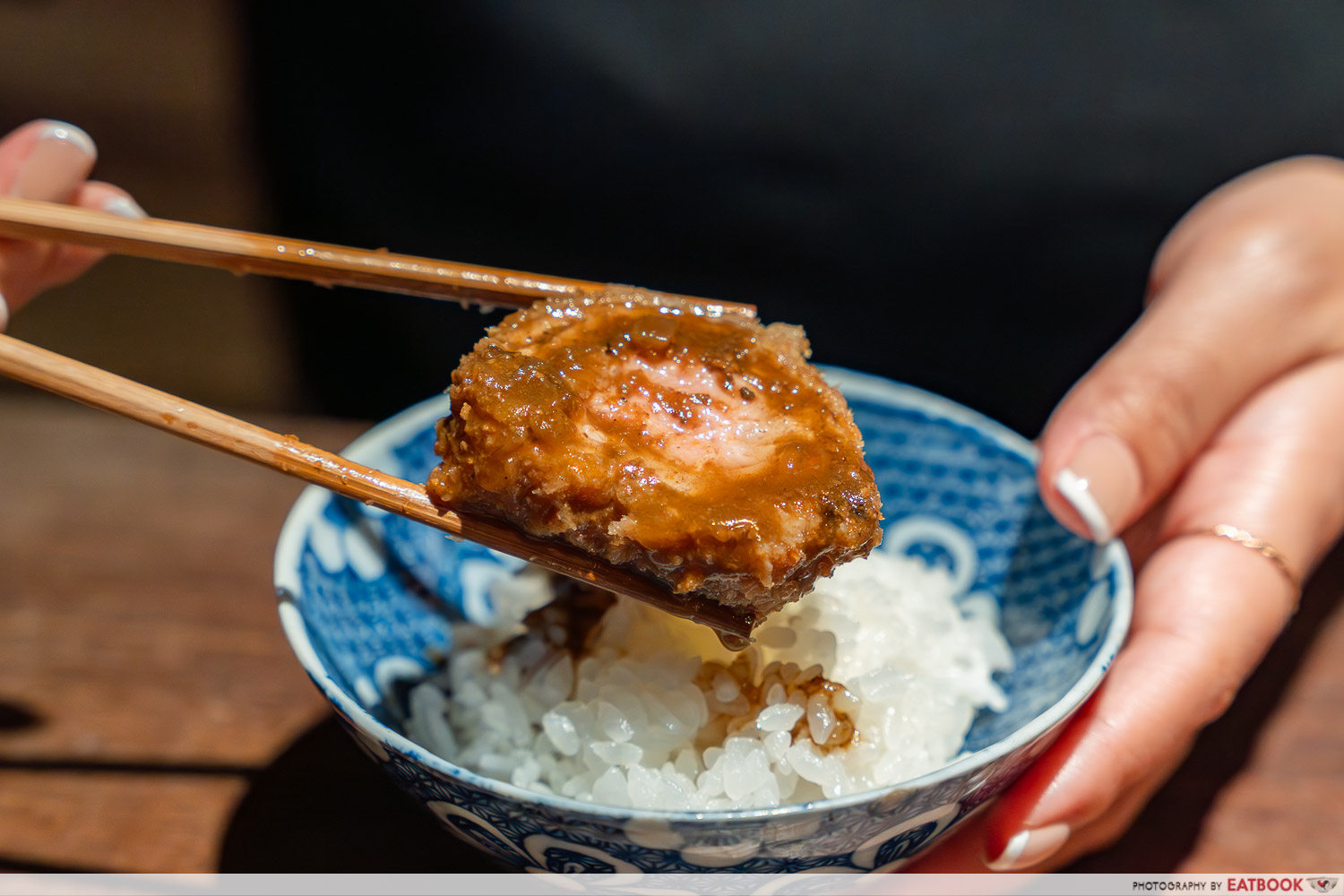
If you like, you might also order their house-made Nepalese-style Curry (¥400), to enjoy alongside the free refills of rice and cabbage salad━don’t miss the ponzu dressing!
Nishiazabu
Address: 2 Chome-24-9, Nishiazabu, Minato City, Tokyo 106-0031
Opening hours: Tue-Sun 11:30am to 2pm, 6pm to 9pm
Tel: +81 3-5466-6775
Website
Roppongi
Address: 6 Chome−4−1, B2F, Metro Hat, Roppongi, Minato City, Tokyo 106-0032
Opening hours: Daily 11am to 3:15pm, 5:30pm to 9:30pm
Tel: +81 3-3408-6751 (walk-ins only)
Website
Butagumi is not a halal-certified eatery
Where to eat in Tokyo
There are an incredible number of eateries around Tokyo to suit every budget and taste. At 15 eateries, this list has barely scratched the surface of the food that Tokyo has to offer. Pin these spots for your next trip!
Check out Go Tokyo for more food and travel tips!
Photos taken by John Lery Villanueva.
This post was brought to you by the Tokyo Convention & Visitors Bureau.

Drop us your email so you won't miss the latest news.

